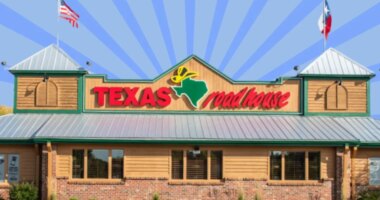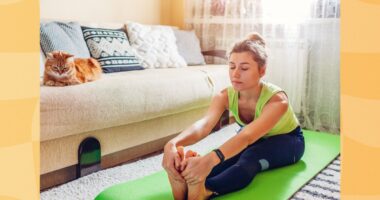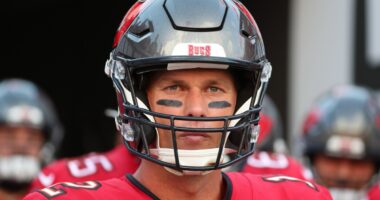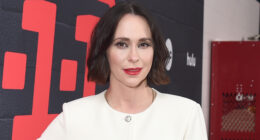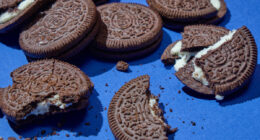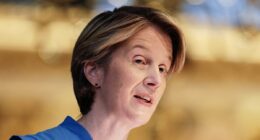It’s no surprise that the environment plays a role in the likelihood of developing cancer, and yes, that includes the foods you eat. See, carcinogens are substances that directly contribute to your risk: things like tobacco and asbestos. But you may not know that carcinogens can also be found on your plate. And you’re most likely eating foods that have been linked to causing cancer.
“You are what you eat—never a truer word was spoken,” says Dr. Deborah Lee of Dr Fox Online Pharmacy. “Cancer is the second to coronary heart disease as the most common cause of death in affluent countries all around the world. It is estimated that half of all cancers and deaths could be prevented by eating the correct diet.”
She explains that the major underlying factor contributing to the development of cancer is oxidative stress.
“Every day,” she says, “your body produces ‘free radicals’ as a by-product of different cellular processes. These electron-charged particles damage your DNA. This is what happens as we age—cell damage and tissue degeneration. Oxidative stress drives the formation and growth of cancer cells.”
Some foods can counteract oxidative stress, neutralizing the effect of free radicals on our DNA. These foods contain what you know as antioxidants, which are present in many fresh fruits and vegetables. But you can also reduce the risk of developing cancer by cutting back on your consumption of carcinogenic foods.
Here are the foods you should avoid whenever possible. And while you’re making healthier choices, be sure to check out these Eating Habits to Lose Abdominal Fat As You Age, Say Dietitians.
Read the original article on Eat This, Not That!
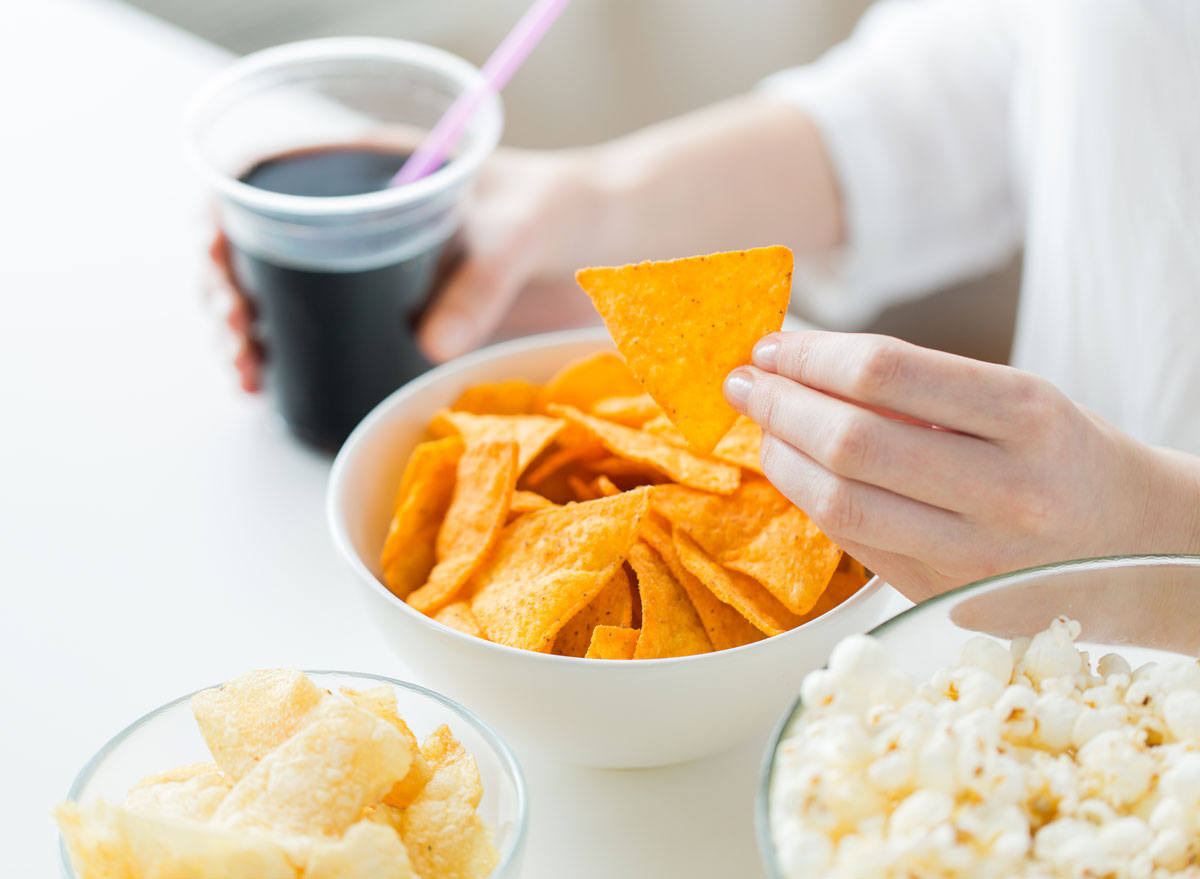

When it comes to an anti-cancer diet, anything ultra-processed should be the first to go, explains Dr. Tracey Evans, Scientific Writer for Fitness Savvy and Medical Researcher with a PhD in Neuroscience, MSc in Molecular Neuroscience and BSc (Hons) in Biomedical Sciences. She cites a recent study that identified an “increased risk of cancer” associated with eating “ultra-processed” food items.
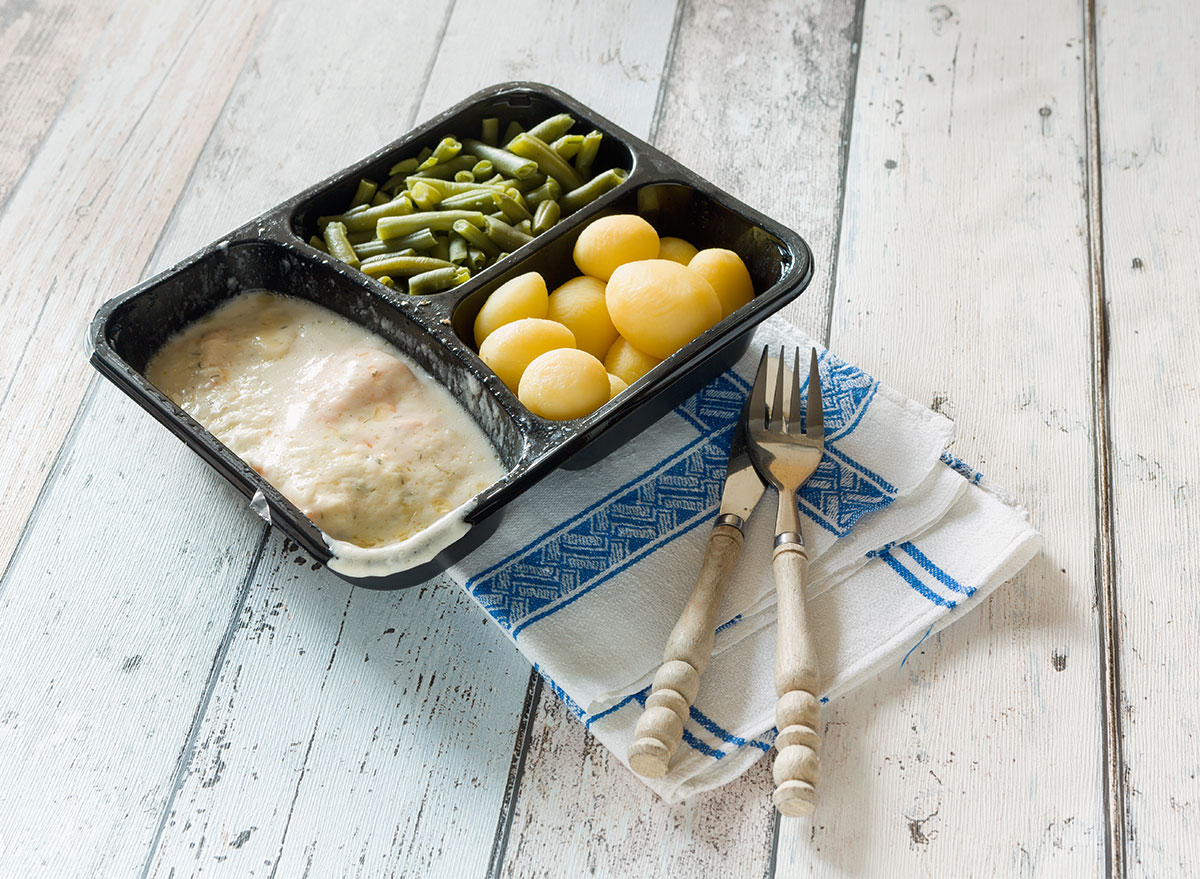

Shelf-stable meals contain pretty much all of the ingredients that define the “ultra-processed” category. This includes hydrogenated oils, which throw off the balance of omega-3 to omega-6 fatty acids in the body and thus contribute to general inflammation, which can, in turn, lead to cancer.
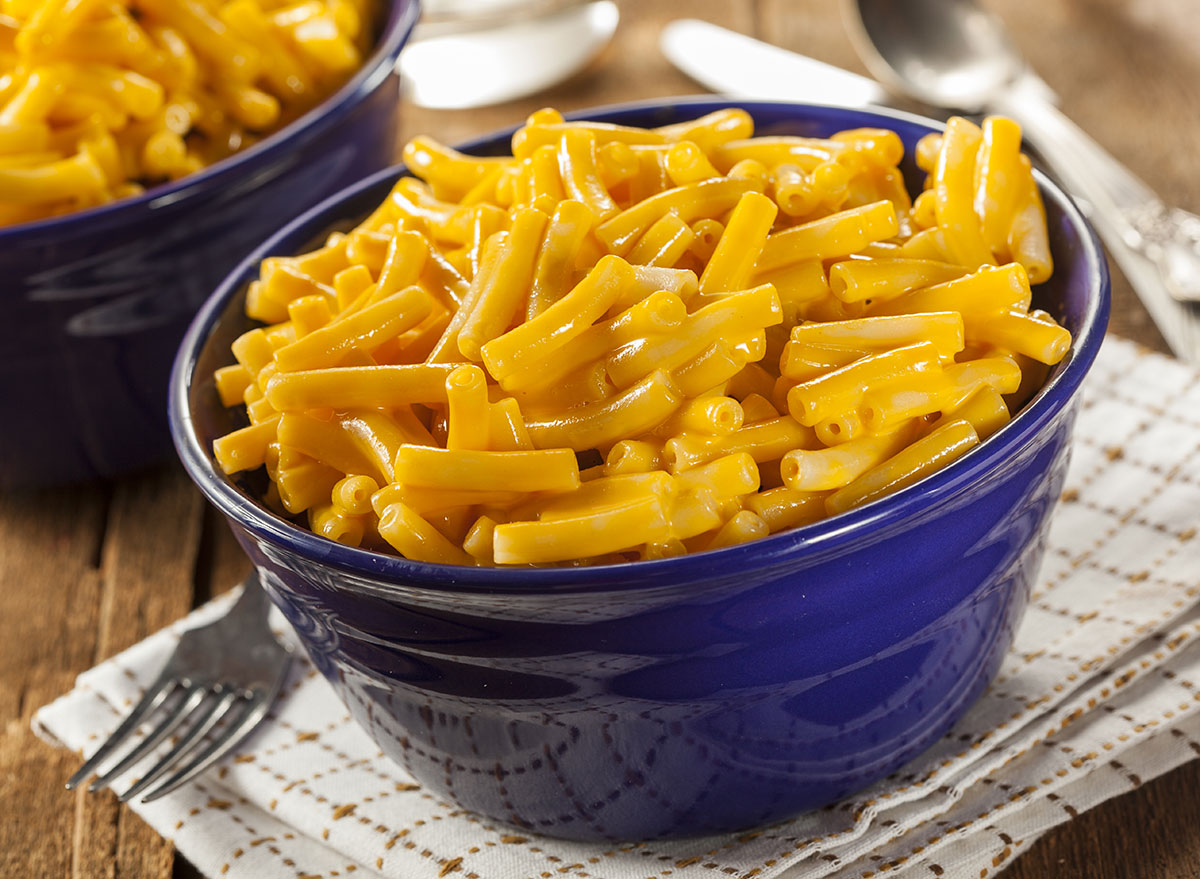

Boxed meals like macaroni and cheese and taco kits contain many of the same problem ingredients. Choose homemade versions of these comfort food meals instead.


The same problem that plagues your shelf-stable meal can be found with your instant noodles. Try purchasing egg noodles and a low-sodium broth to make your own more nourishing version.
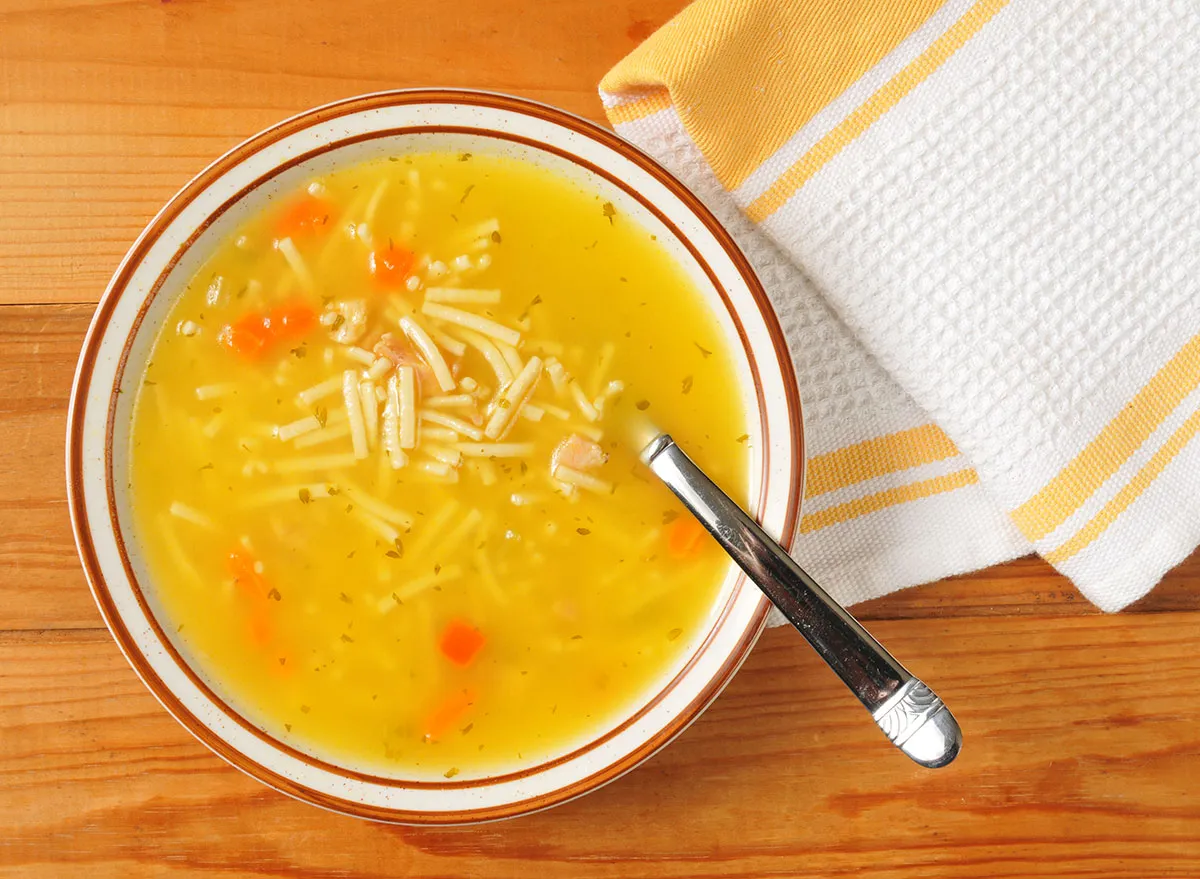

The same is true for instant soup packets. Simmering pasta and frozen veggies in chicken broth is nearly as quick and far better for you!
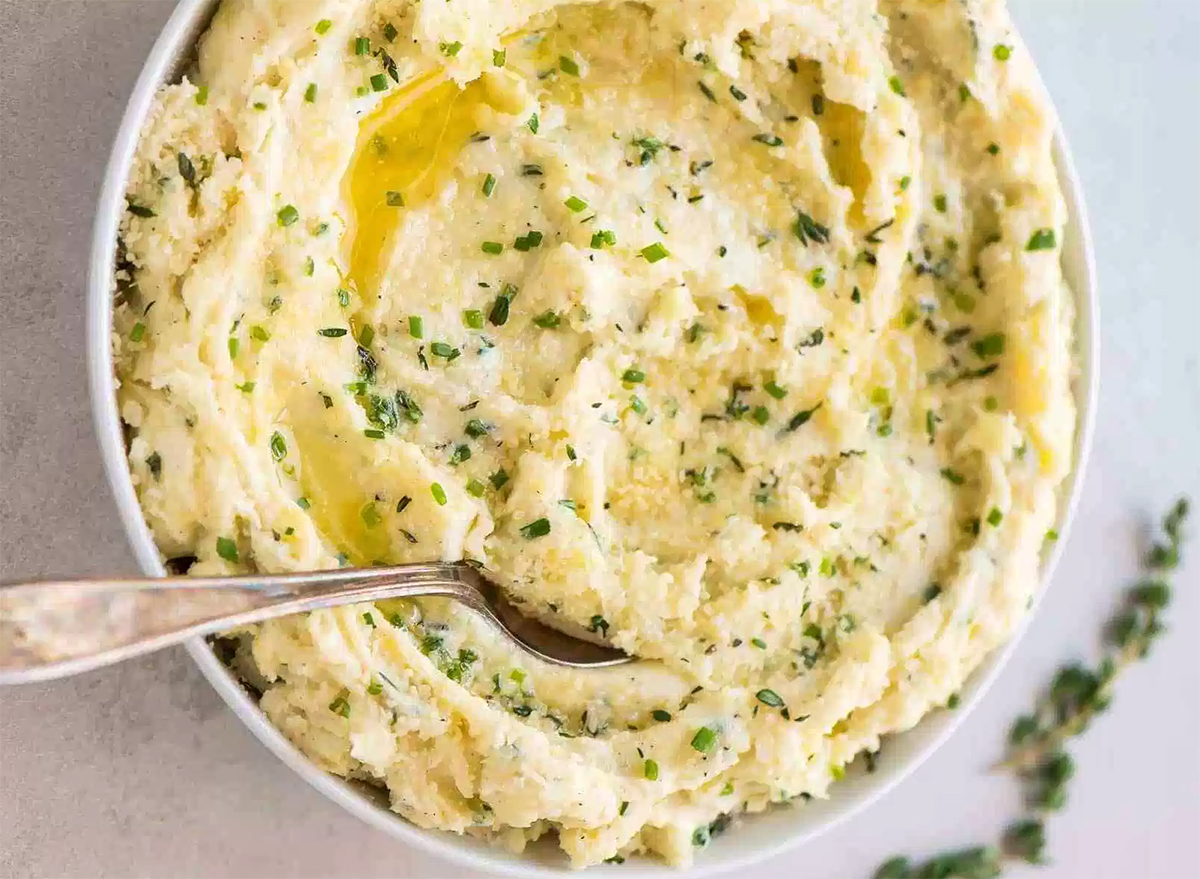

Instant mashed potatoes have been heavily processed for ease, but making your own mashed potatoes takes less than half an hour. Not only is the homemade version better for you, it’s also far tastier!
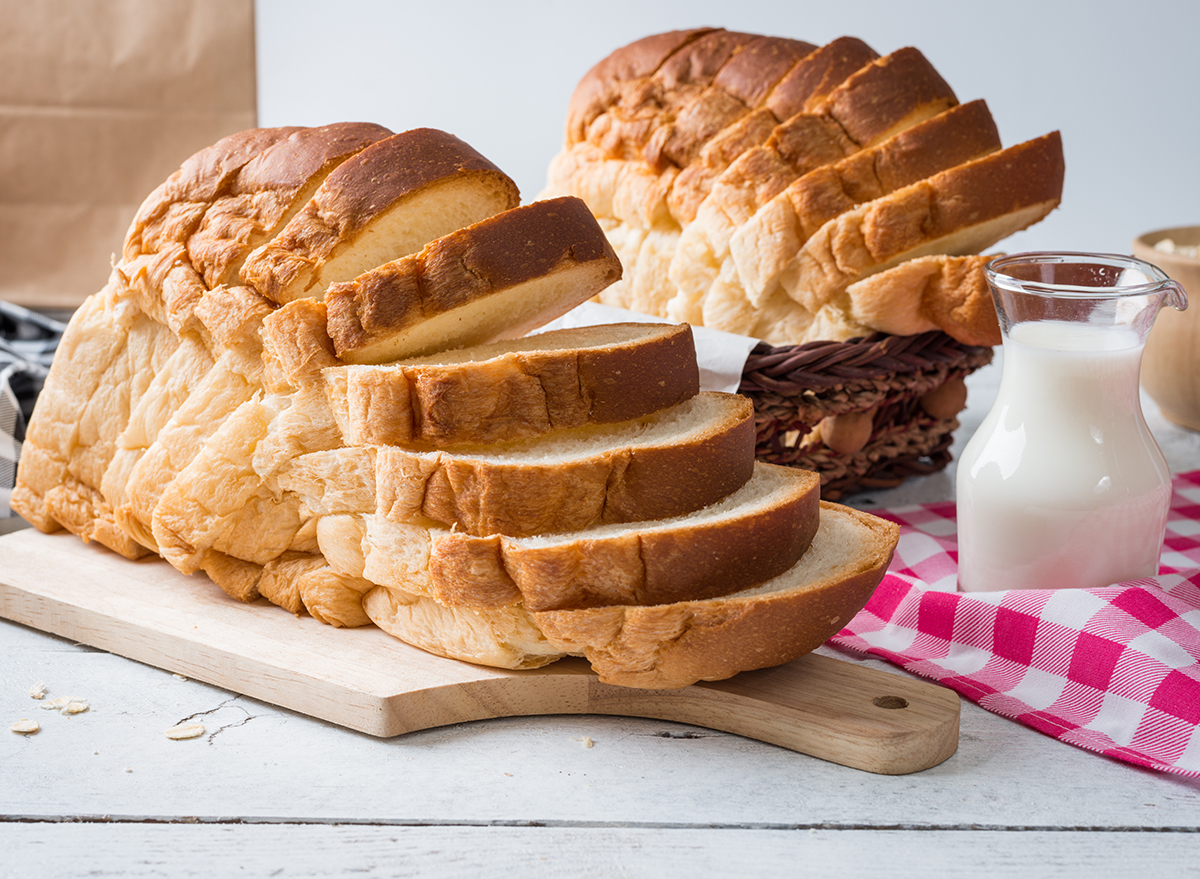

Grocery store bread is a part of the ultra-processed category not only due to the presence of hydrogenated oils, but also because it also often contains potassium bromate. This chemical, present in bromated flour, has been linked to nervous-system disorders by a number of health organizations. It has even been outlawed in the EU, Canada, and Brazil.
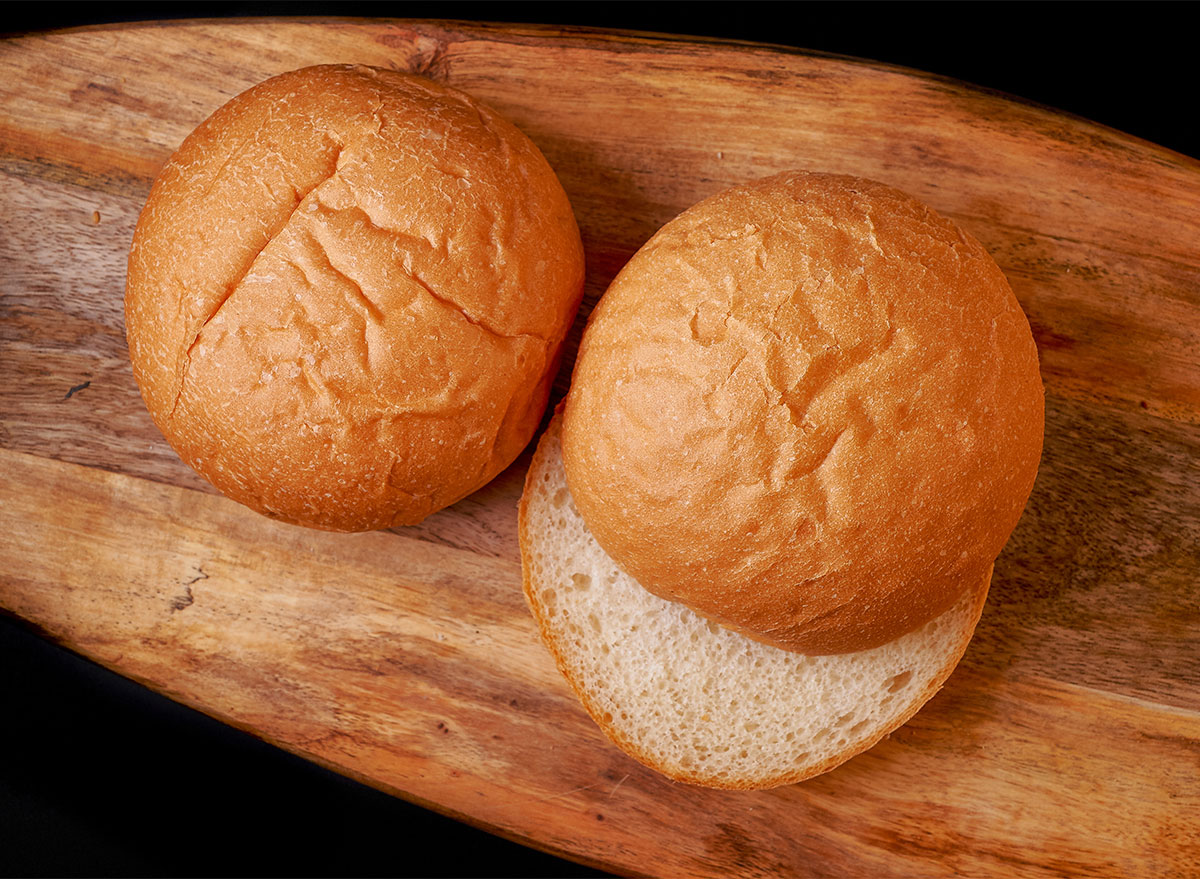

Like sliced supermarket bread, store-bought burger buns often contain bromated flour. Many of them also contain sugar, which isn’t ideal either.
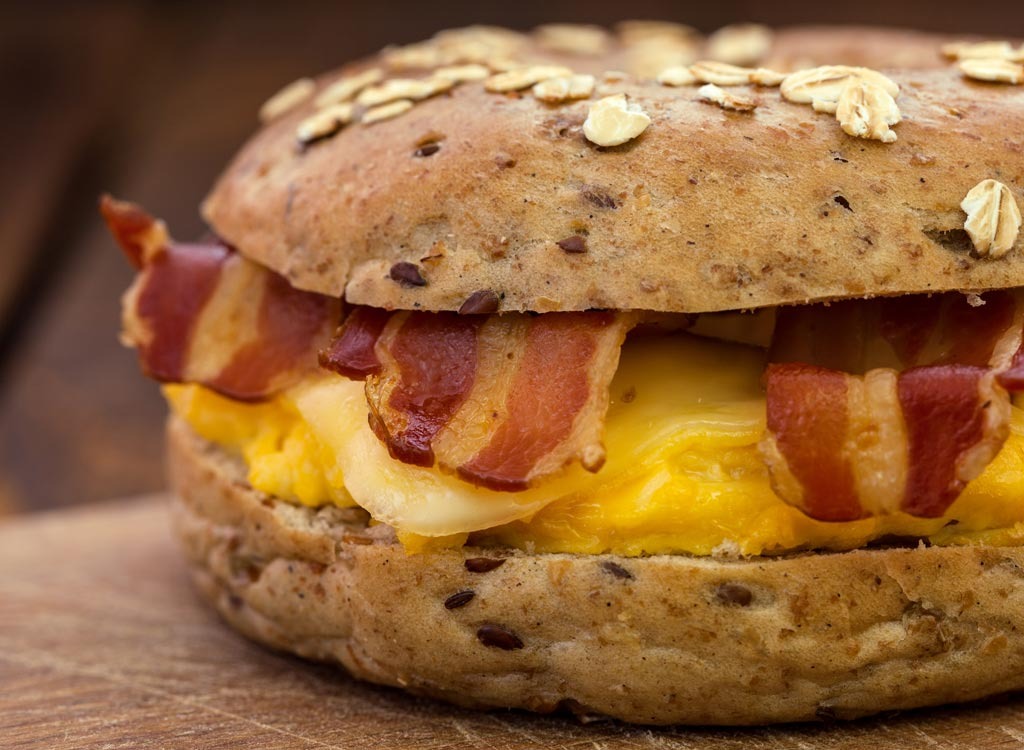

In 2015, the Environmental Working Group found potassium bromate in eighty-six store-bought baked goods, including some brands of store-bought breakfast sandwiches. Steer clear of these ultra-processed products.
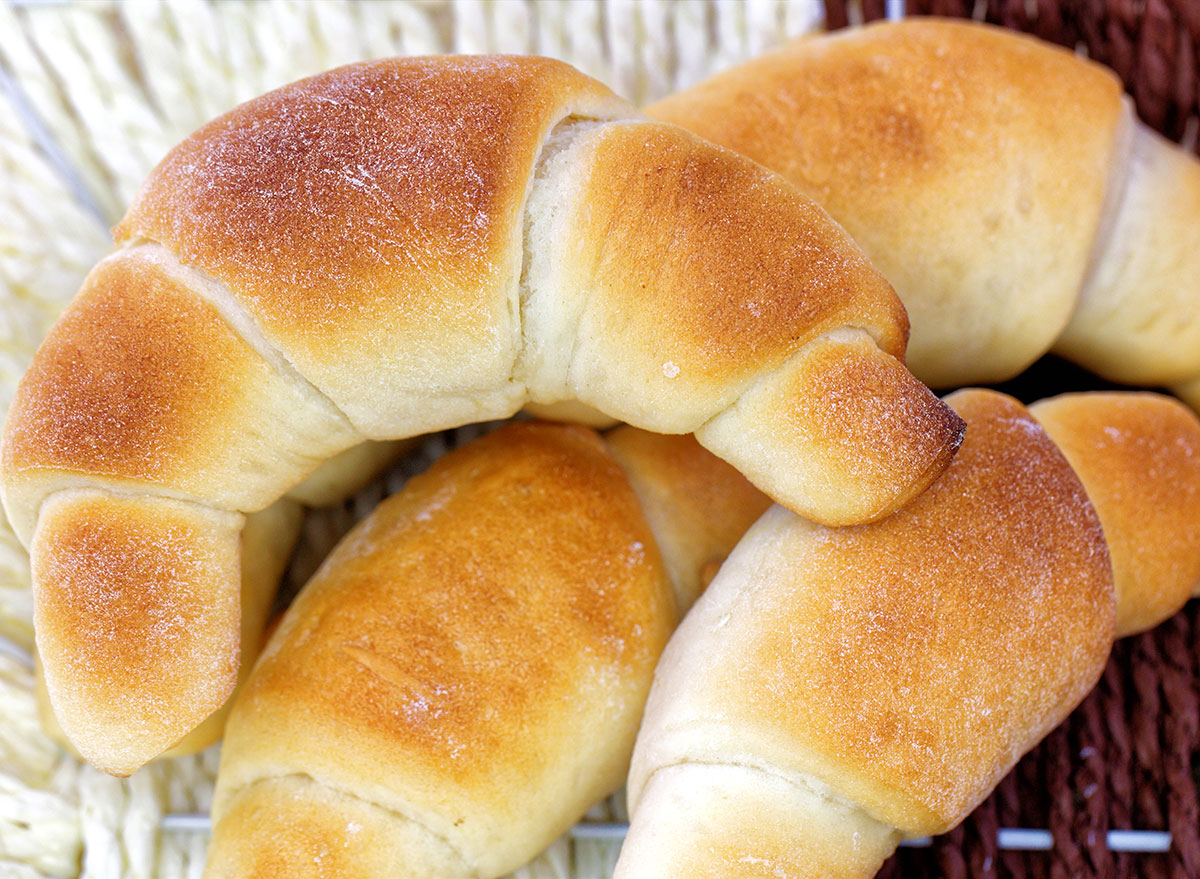

The same EWG study also identified the presence of bromated flours in refrigerated pastry dough. Consider taking the time to make your own homemade dough. It’s a bit more labor-intensive, but it’ll be devoid of hydrogenated oils and bromated flours.
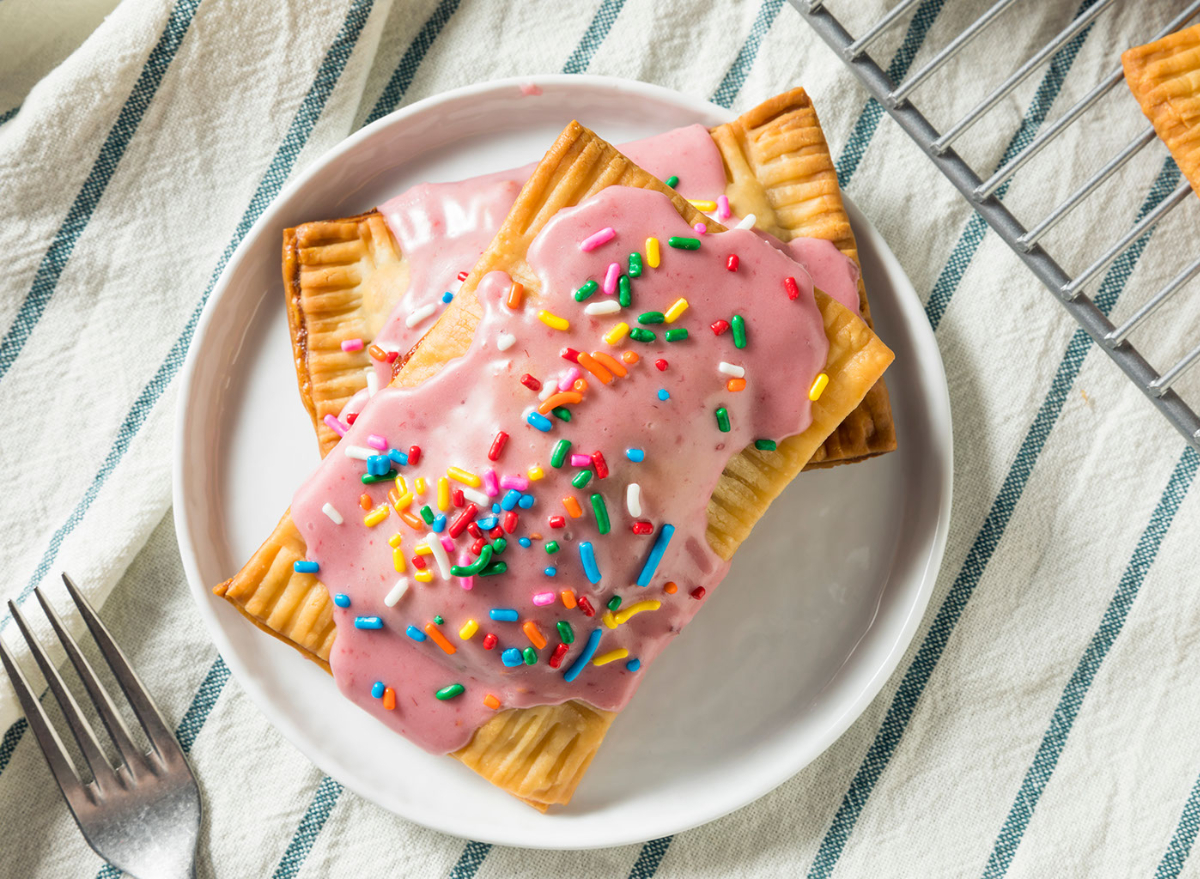

Toaster pastries run the gamut of different carcinogenic ingredients, from refined flours to refined sugars. Sorry, but you’re going to want to steer clear whenever you can.
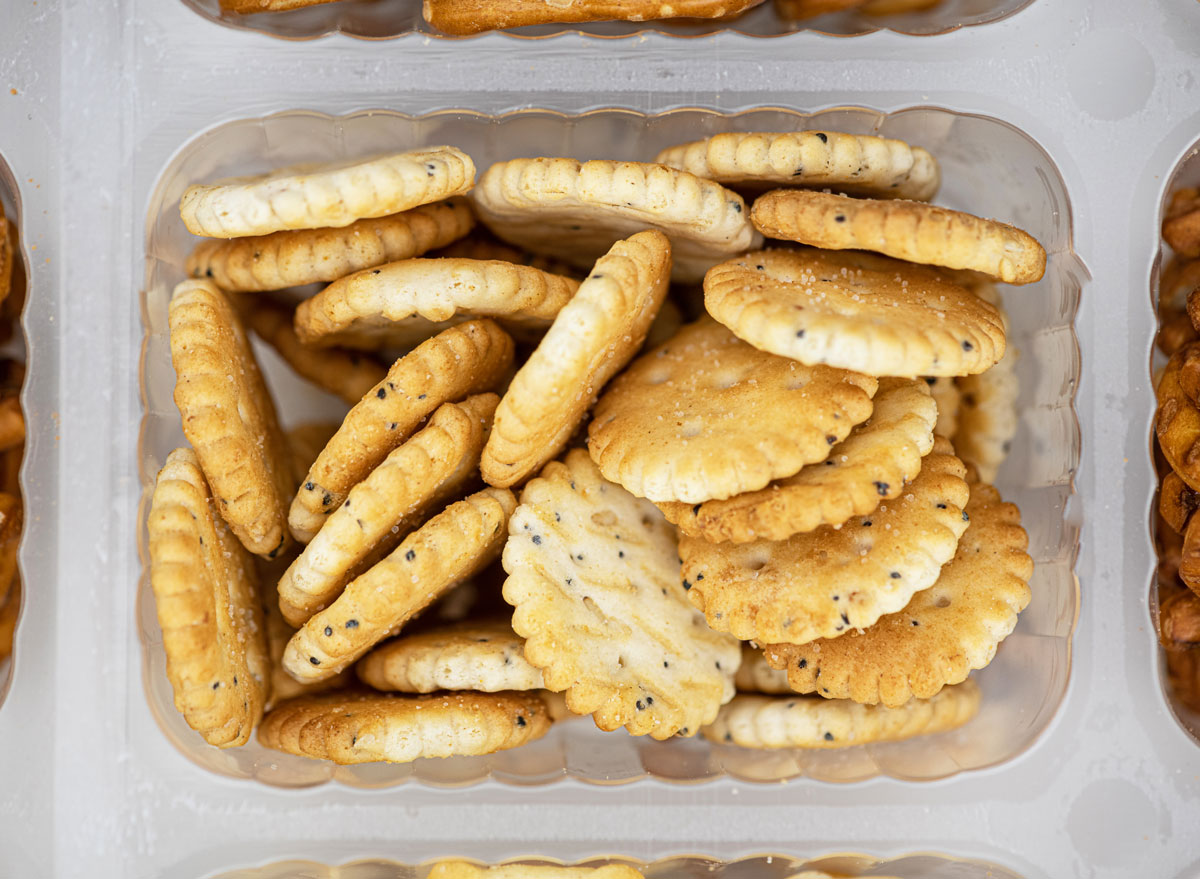

Many store brands of crackers contain bromated flours, but the flavored crackers may just be even worse for you. Sugar, hydrogenated oils, and artificial flavorings make these a no-no.
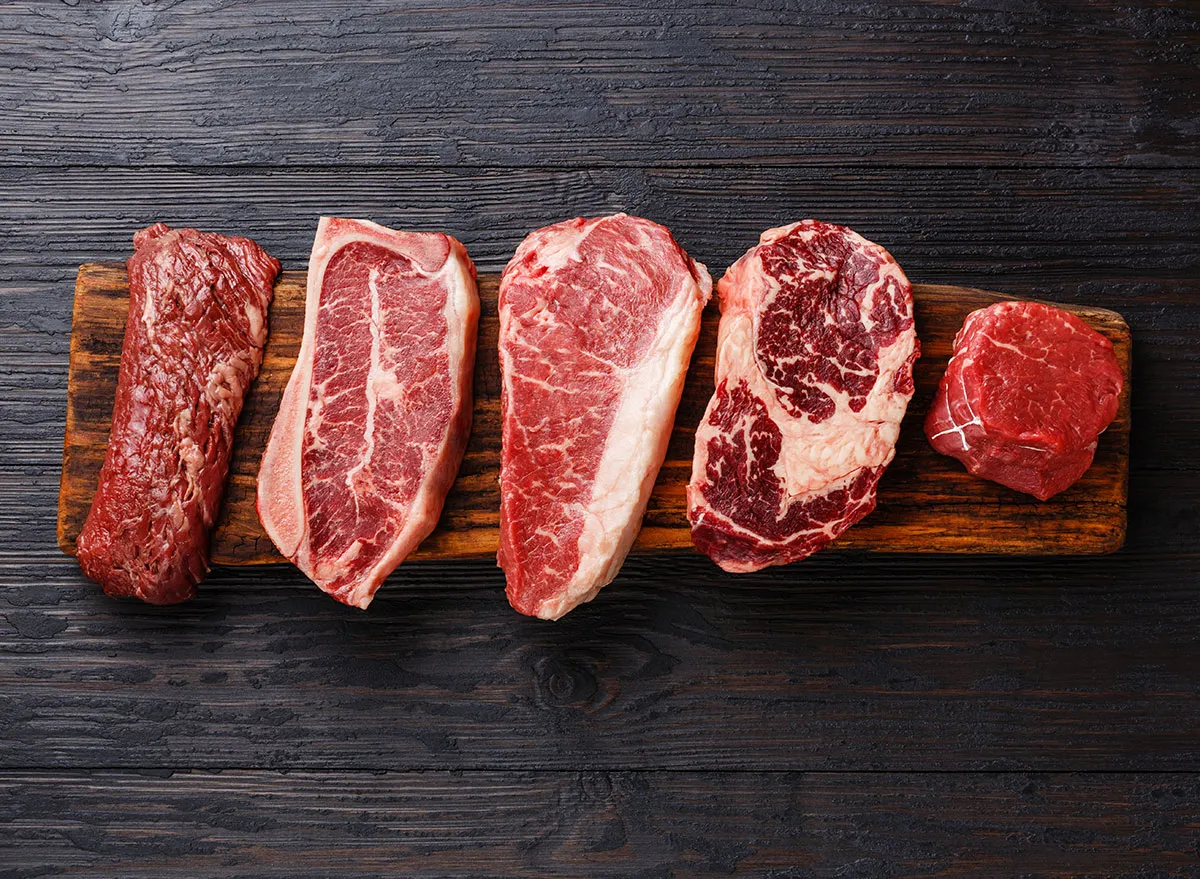

Red meat has been found to cause cancer, especially when consumed in large quantities.
“Diets high in red meat have been linked to colorectal cancer (aka bowel or colon cancer),” says Megan Wong, a registered dietitian working with AlgaeCal. She explains that red meat contains certain compounds that promote the formation of carcinogenic compounds, which in turn can increase risk factors for cancer.
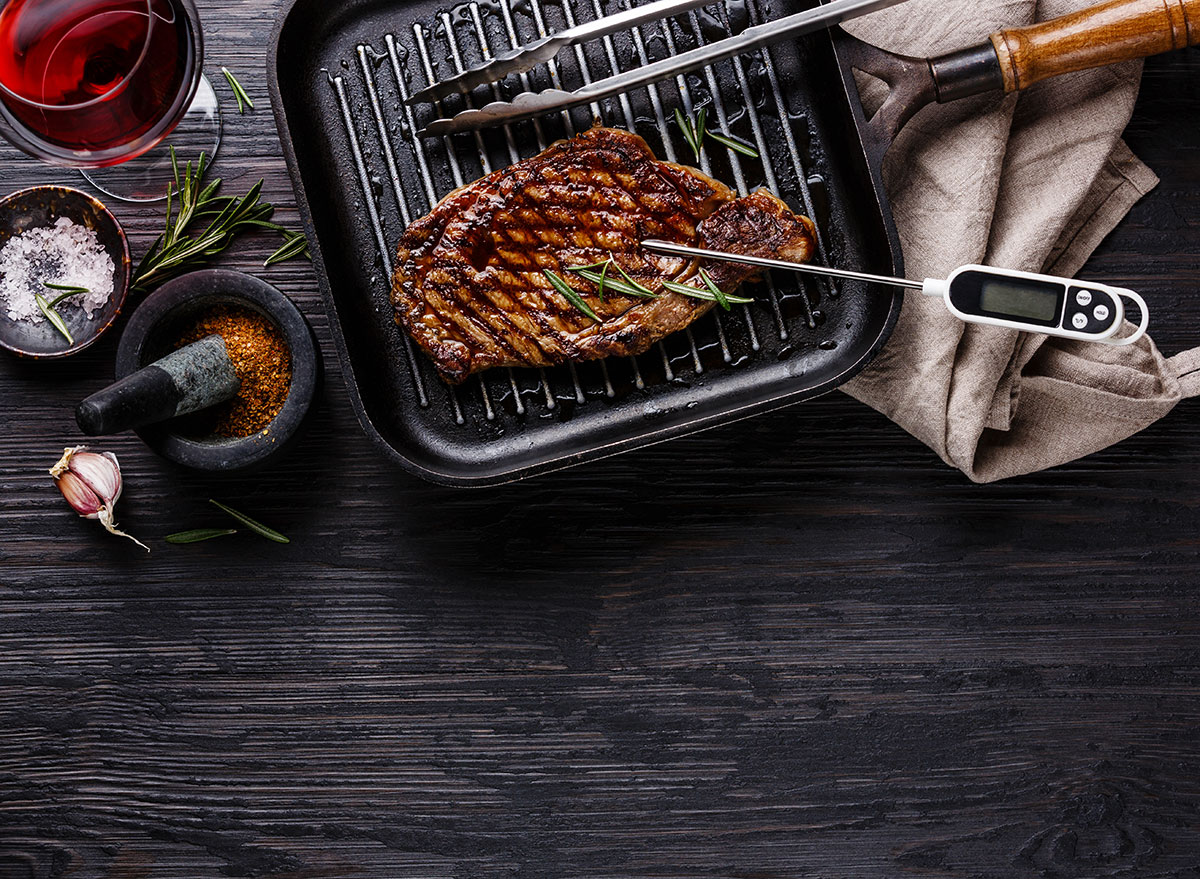

While a little bit of beef is OK, according to Helen Kollias, PhD and director of science for Precision Nutrition, more than 18 ounces a week is associated with a higher risk of cancer. Instead, it’s best to eat smaller portions of high-quality steak, and pair it with loads of veggies.
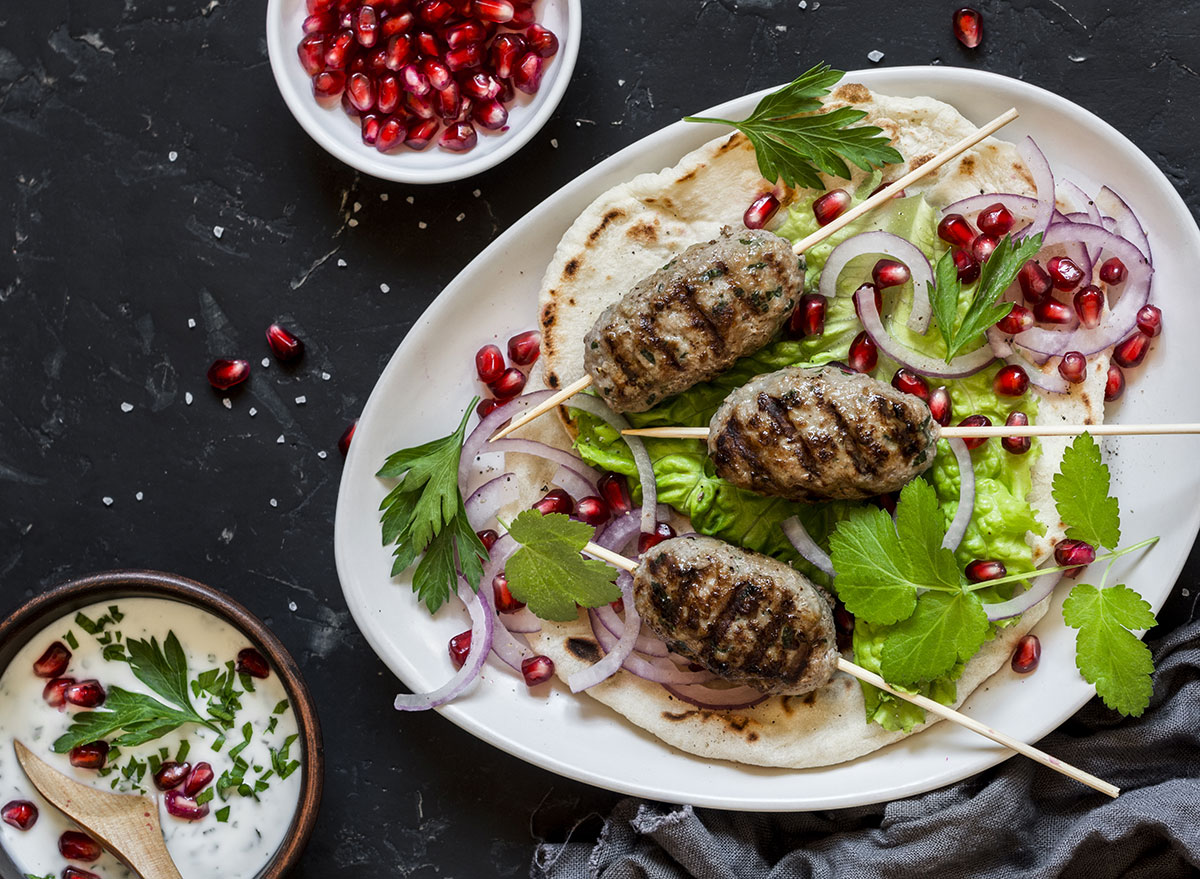

Lamb isn’t just red meat, it’s also very high in saturated fat. And while most experts agree that saturated fat doesn’t have the heart disease risk factors we once believed it did, it one 2015 research review in the journal Medicine linked increased saturated fat intake in postmenopausal women to an increased risk of breast cancer.
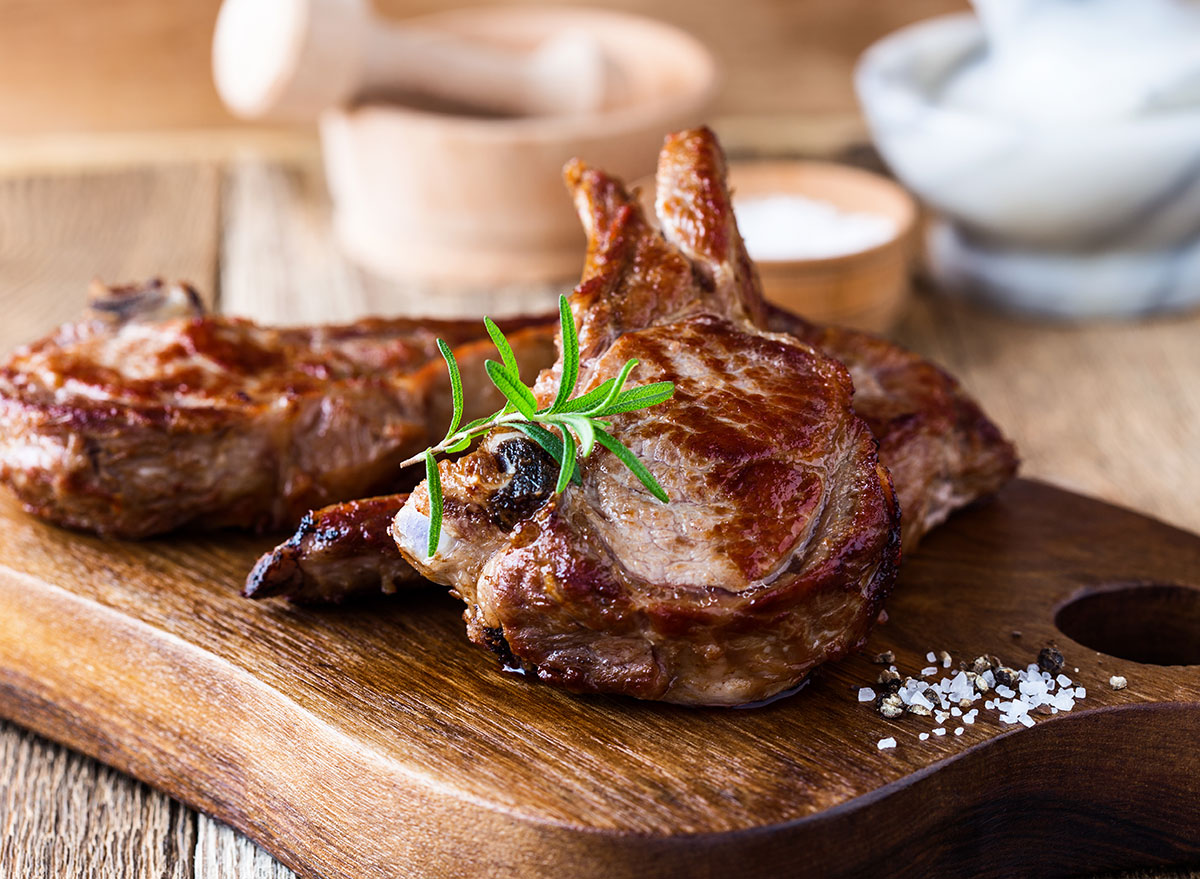

Yep, despite its pale appearance, veal counts as one of your red meat servings. Avoid eating too much of it if you don’t want to increase your cancer risk.
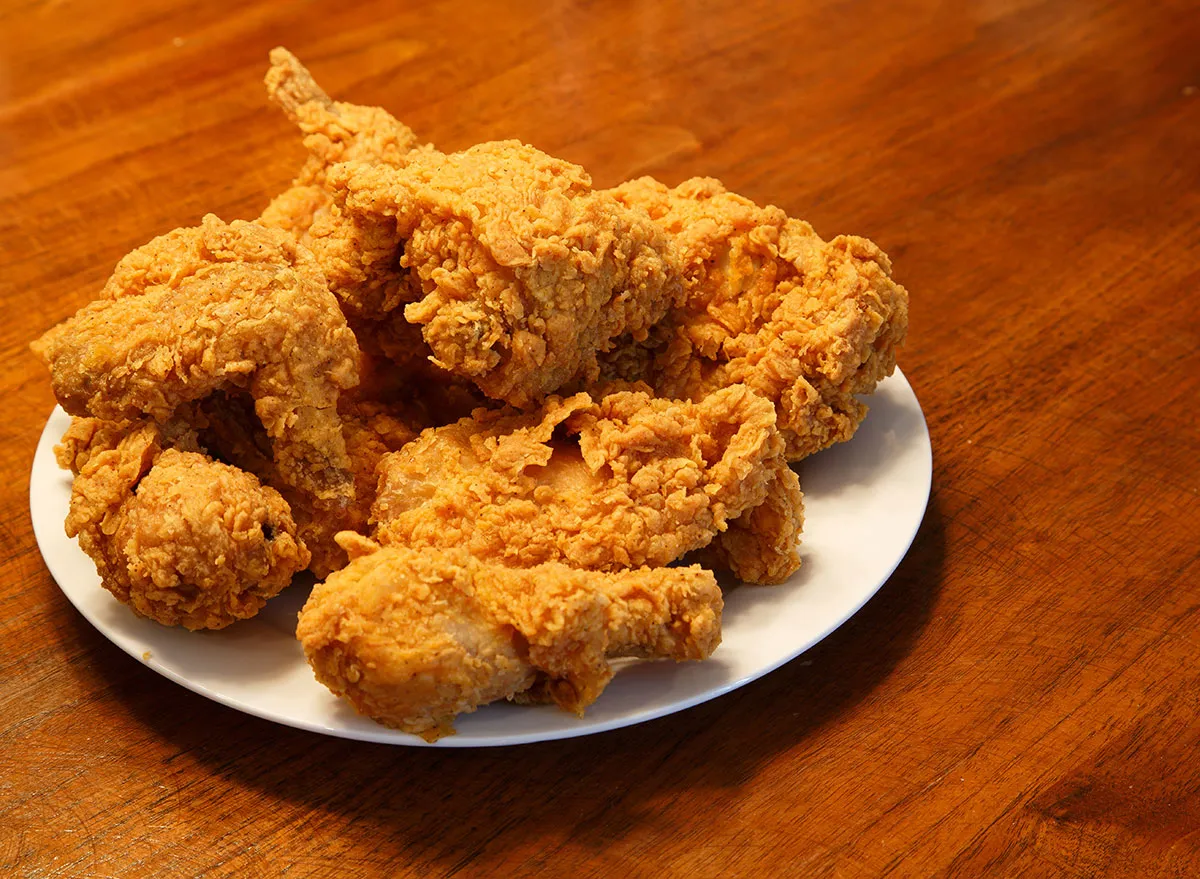

What you eat is important, but it’s just as important to consider how you cook it, according to Valentina Gallani, nutrition scientist at Hundred, a personalized vitamin and supplement company.
“Grilling, barbecue, and frying are the cooking methods that can be most harmful to health in the long term,” she says. These methods of high-heat cooking can cause carcinogenic chemicals to form, according to Lisa Richards, a nutritionist and author of The Candida Diet. She says “foods that have been grilled or fried to a point of burning or close” can quickly become carcinogenic.
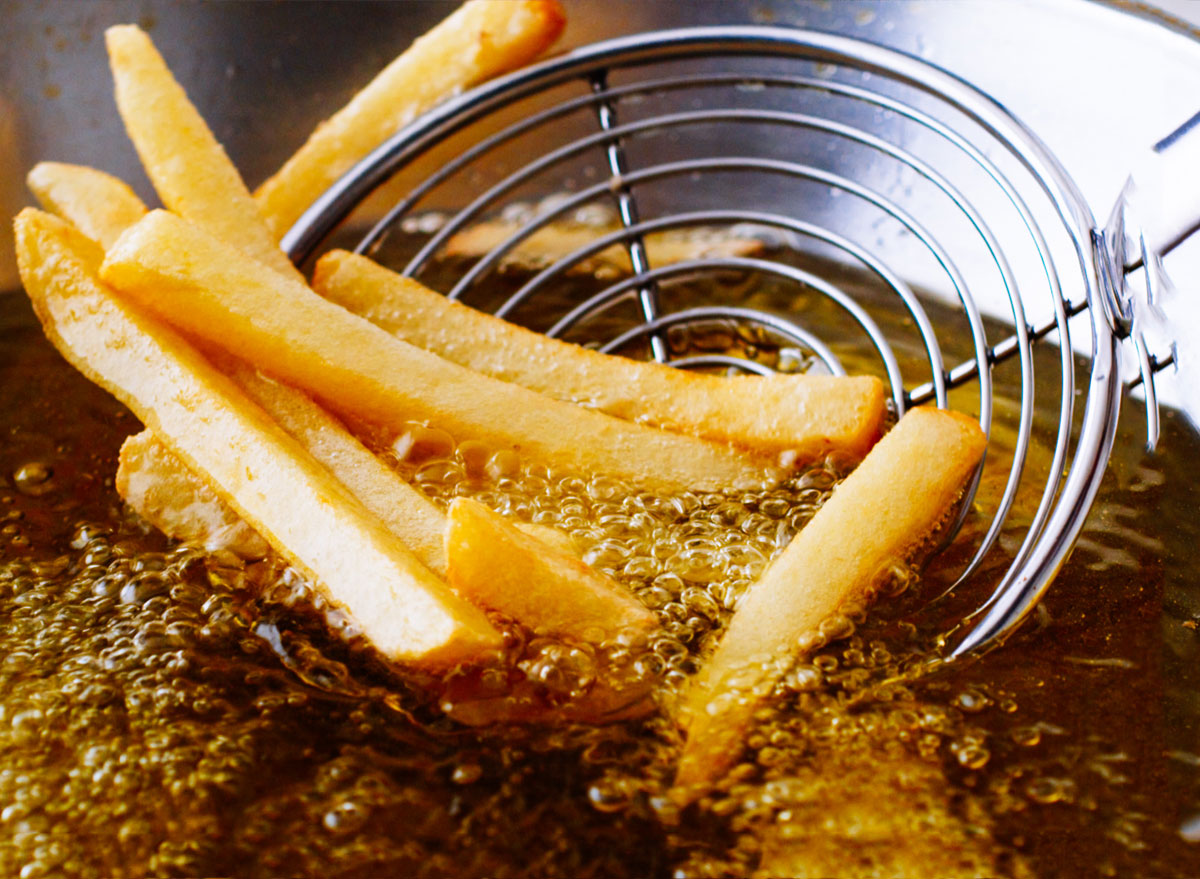

The starch in potatoes transforms to inflammatory sugar in the body. Combine this with low-grade frying oils and a high cooking temperature, and French fries are best avoided.
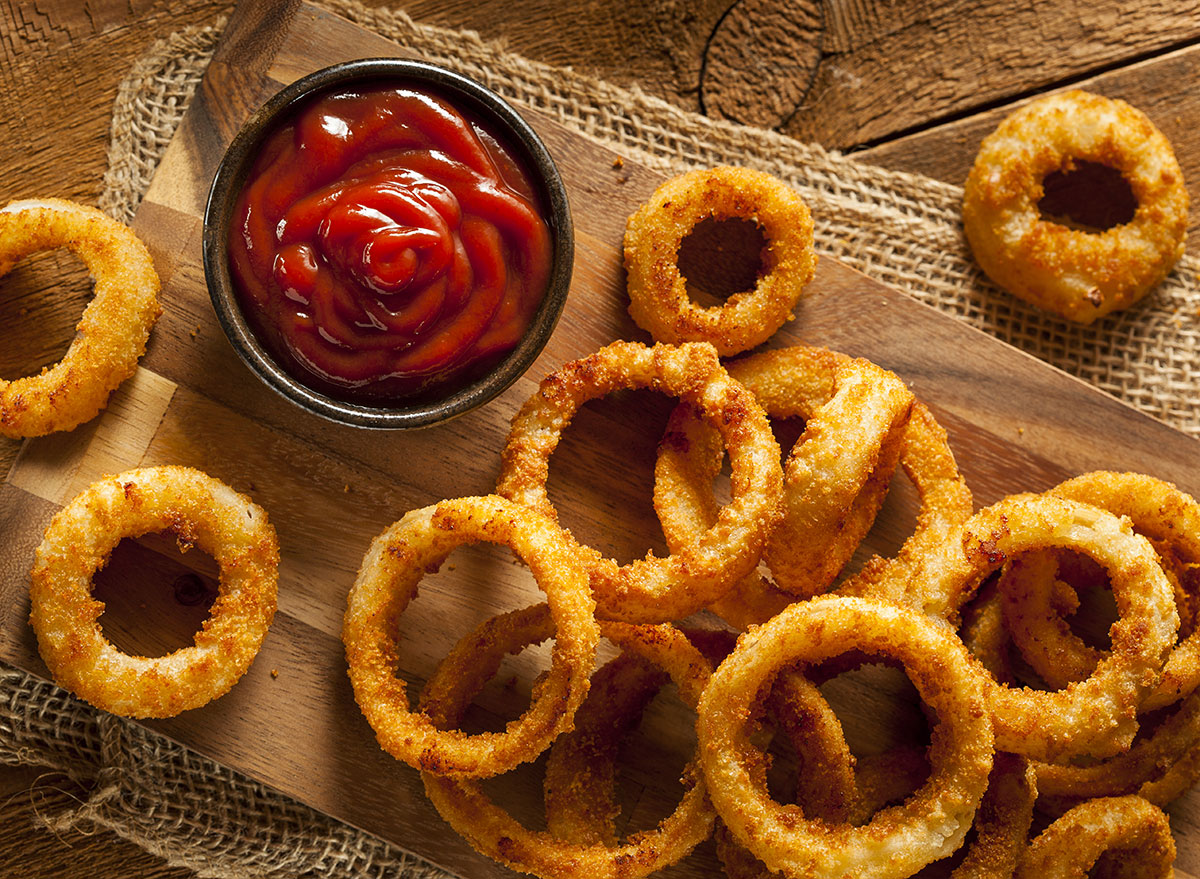

While onions themselves have actually been shown to protect against certain cancers, battering and frying them reduces their benefits significantly. Thinly slice onions and pickle them for a delicious cancer-fighting condiment instead.
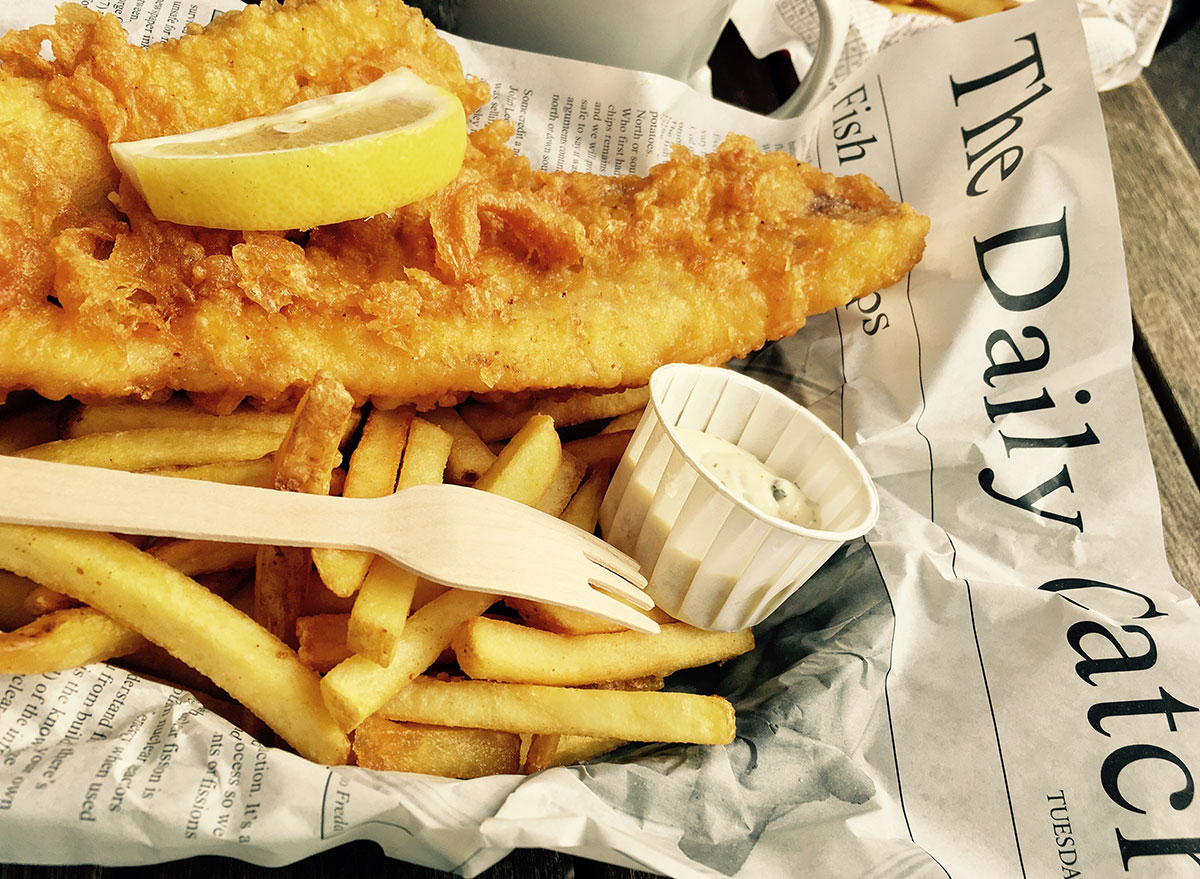

Not only does this British favorite feature French fries, it also negates the health benefits of consuming a portion of fish by dousing it in beer batter. Poach fish or cook it en papillote with a bit of lemon for something far more heart-healthy (and anti-carcinogenic).


Frying isn’t the only problem with this beloved Southern staple. Refined flour present in the batter on chicken only contributes to its carcinogenic properties.
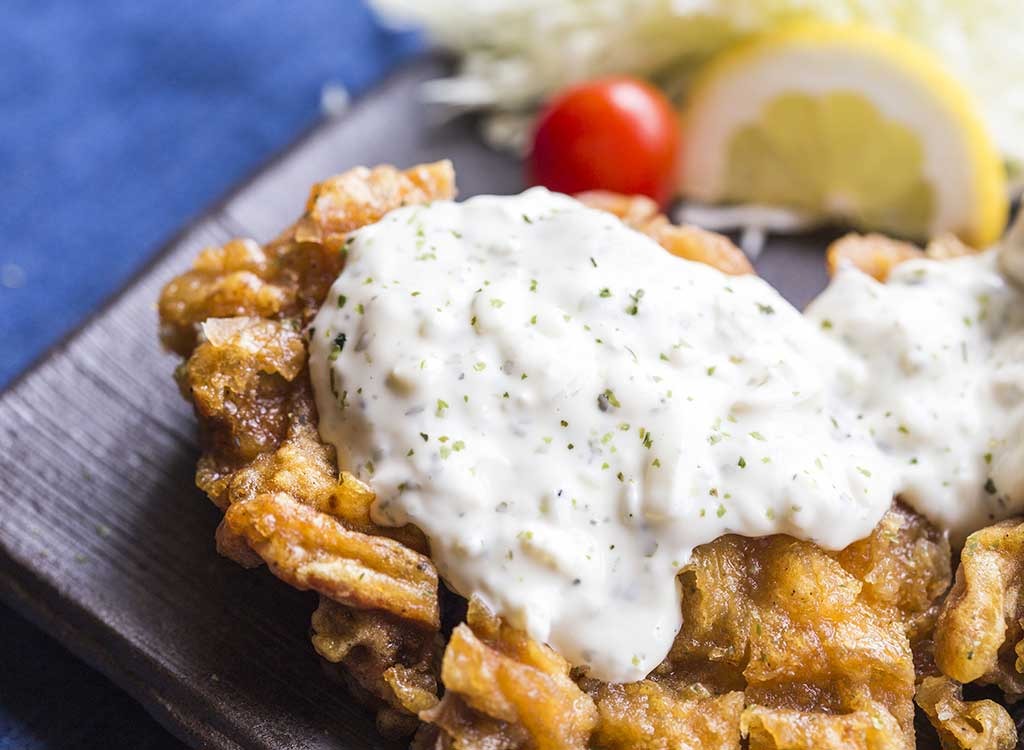

If fried chicken contributes to your cancer risk, chicken fried steak only makes it worse. The red meat used in this classic dish means it should be a special occasion option only.
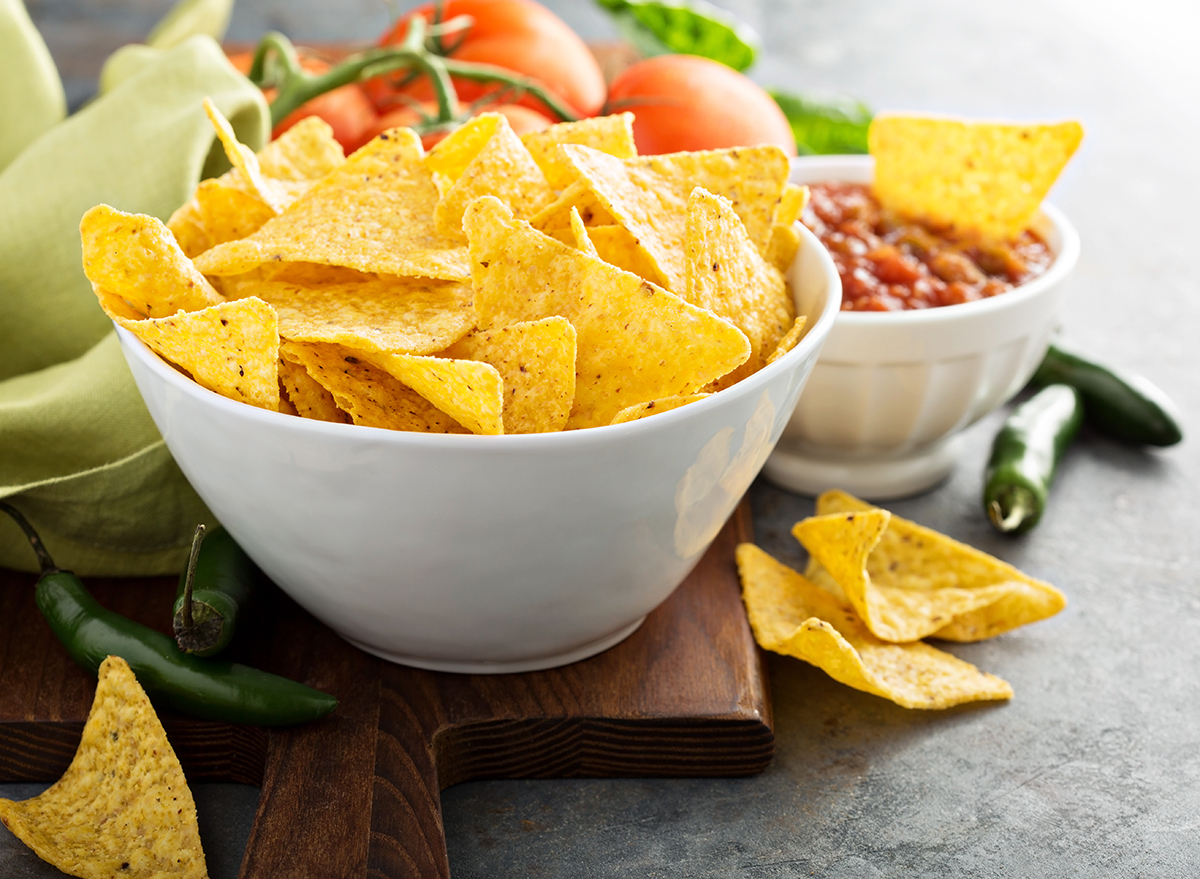

Store-bought chips are just as bad for you as French fries. This is doubly true when you choose flavored chips that might contain refined sugar and thus deliver a double whammy of carcinogenic compounds.
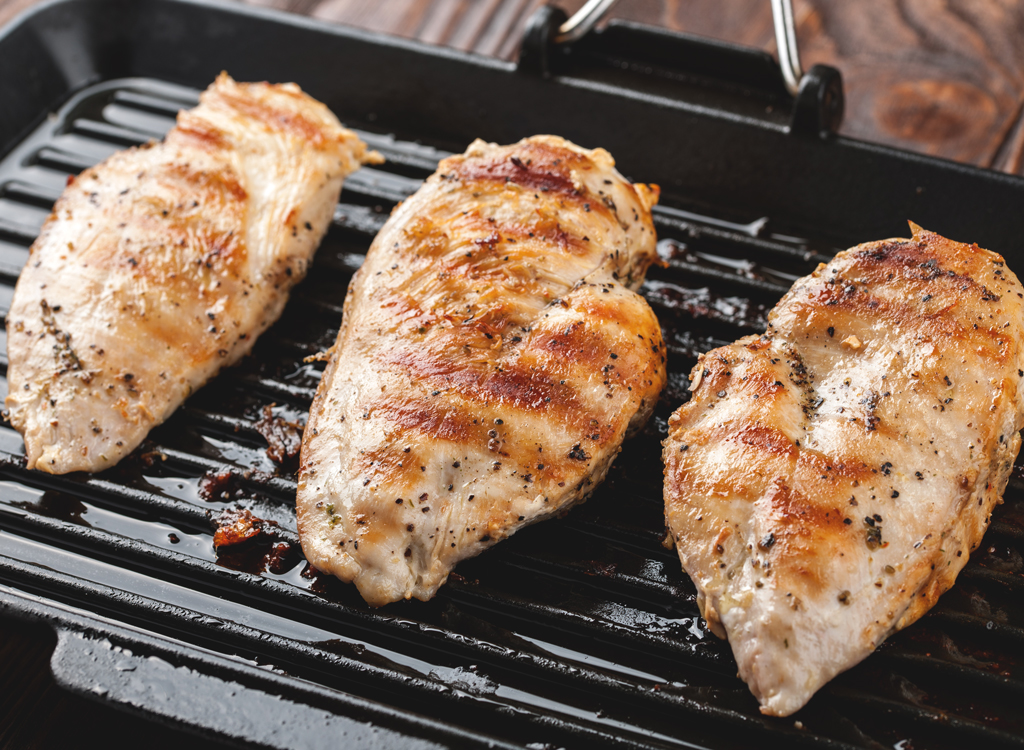

Grilled chicken might seem like a healthy choice, but even when you opt for free-range chicken devoid of antibiotics, the second those pretty grill marks form, you’re reducing its health benefits. Poach chicken gently to keep it from overcooking.
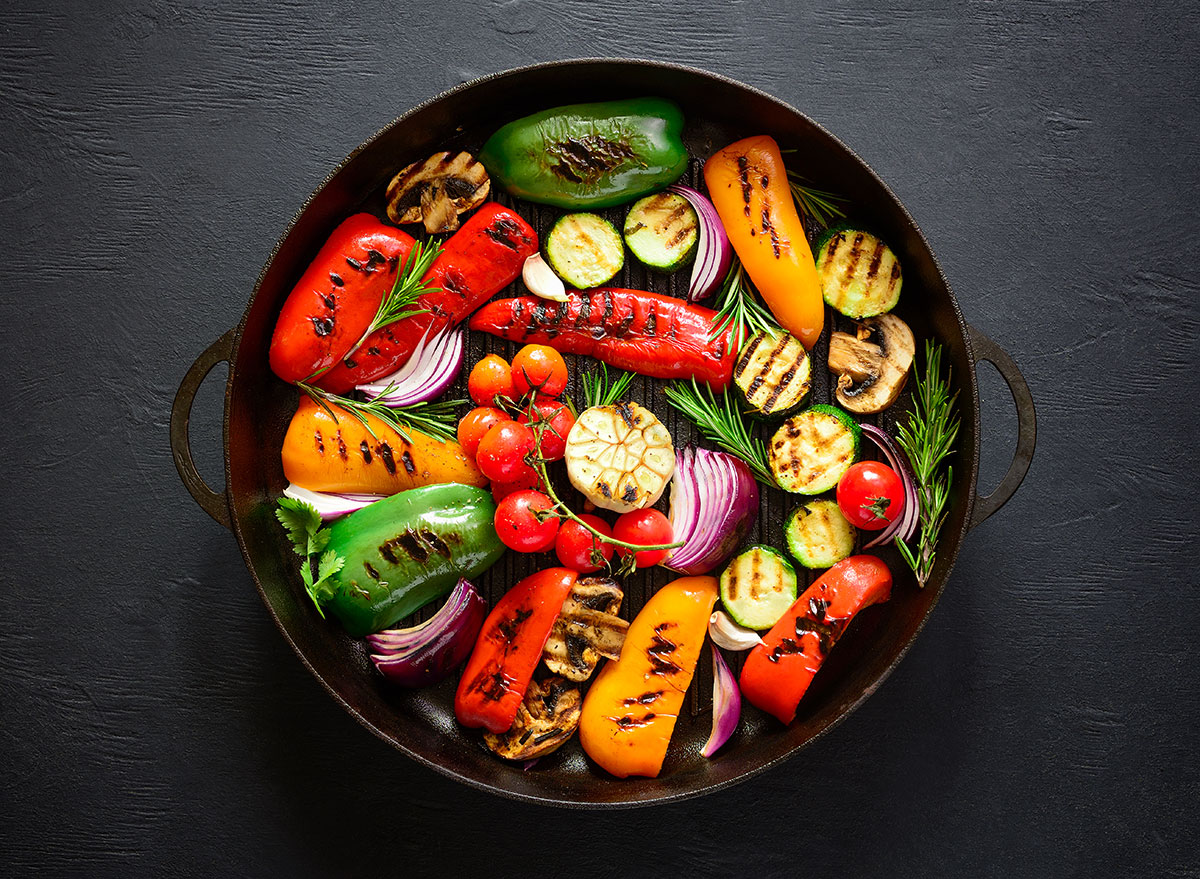

Even brightly colored, antioxidant-rich veggies lose their healthy edge when cooked to the point of charring. Stew your vegetables over low heat or enjoy them raw to reap their health benefits.
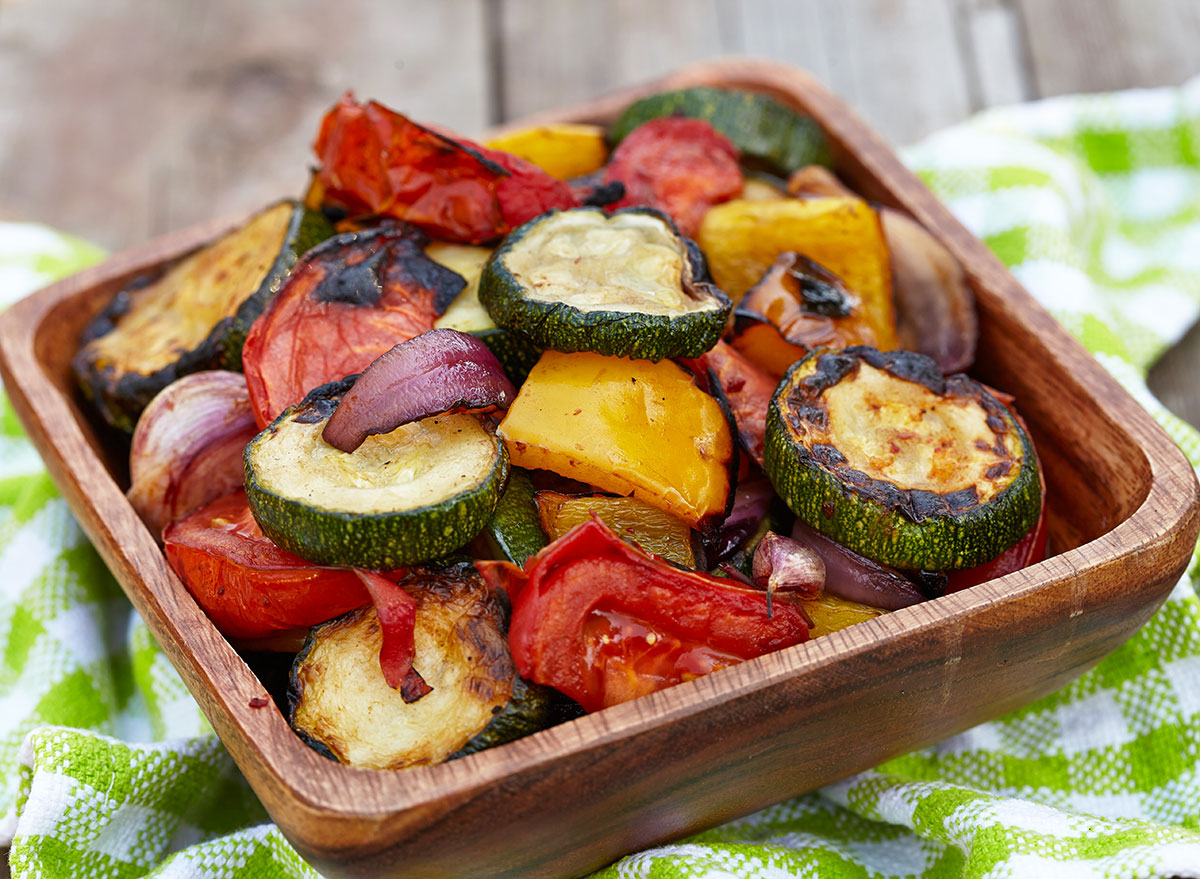

The same problems posed by grilled veggies are also posed by roasted ones if you cook them for too long. Put a bit of broth in the bottom of your roasting dish to keep from overcooking your vegetables and reducing their health benefits.
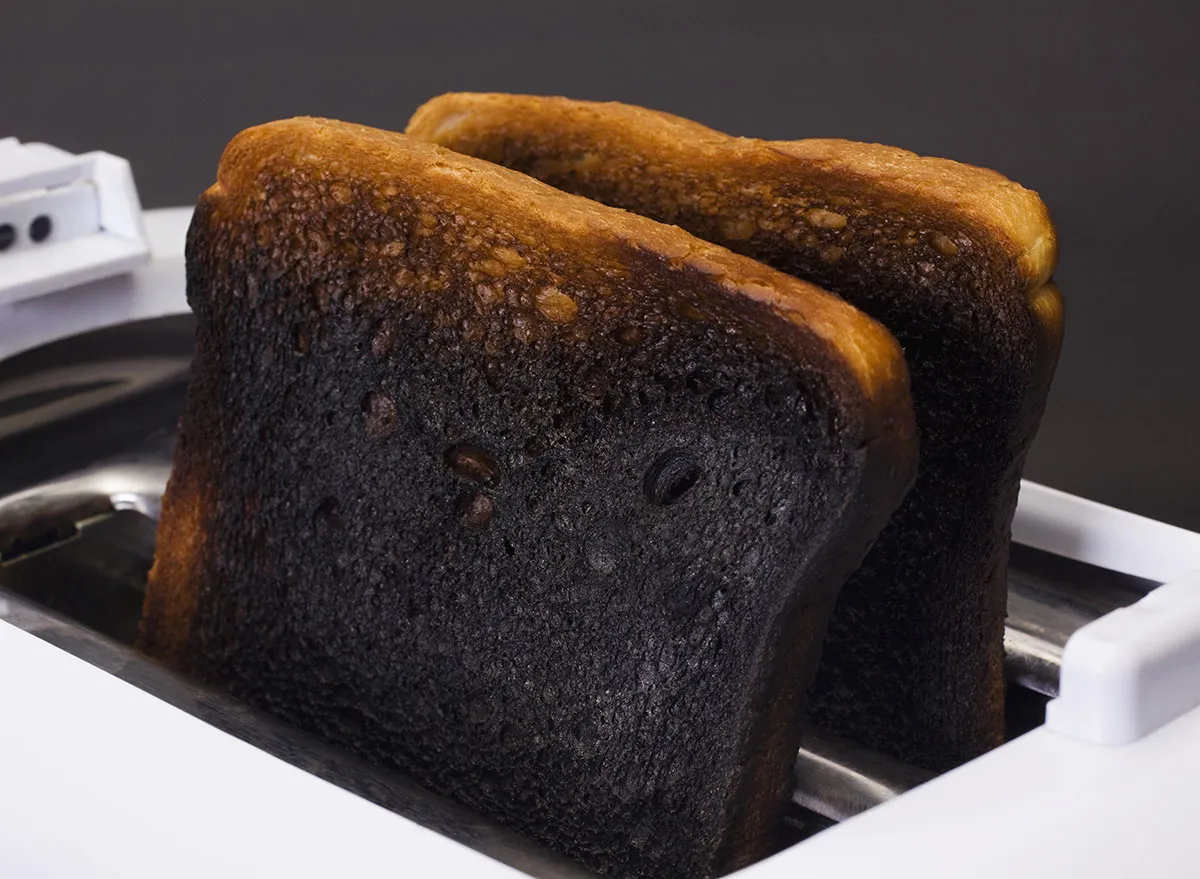

Like your toast a little on the well-done side? We don’t blame you. But crispy, caramelized toast can be carcinogenic. Spread freshly baked bread with your favorite nut butter and enjoy the healthful nutty aromas of this snack.
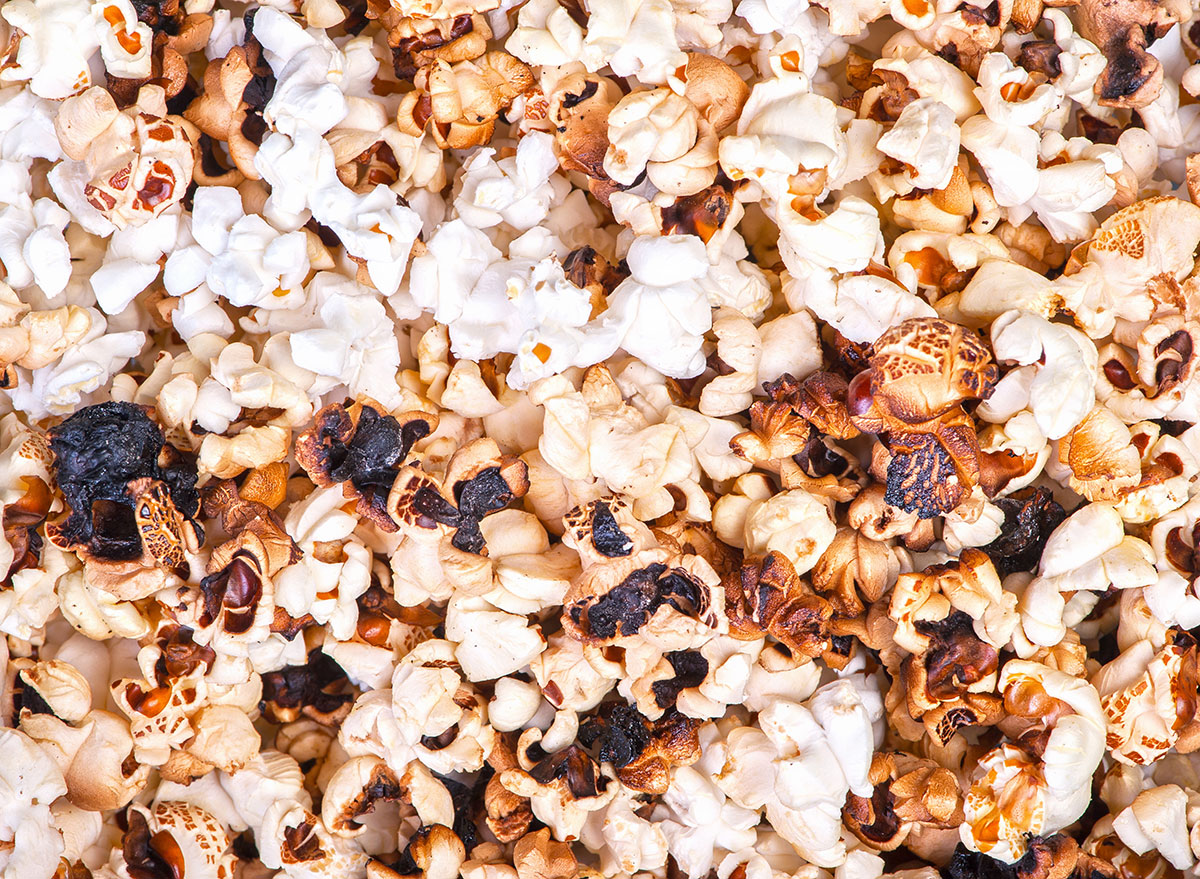

This guilty pleasure is not the best choice for anti-cancer benefits. Overcooking popcorn, especially in butter or oil, can make it a poor choice. Air pop your popcorn and enjoy it with a drizzle of coconut oil and some mineral-rich pink sea salt instead. Have you ever wondered Is Popcorn Healthy? We Had Registered Dietitians Weigh-In Once and For All.
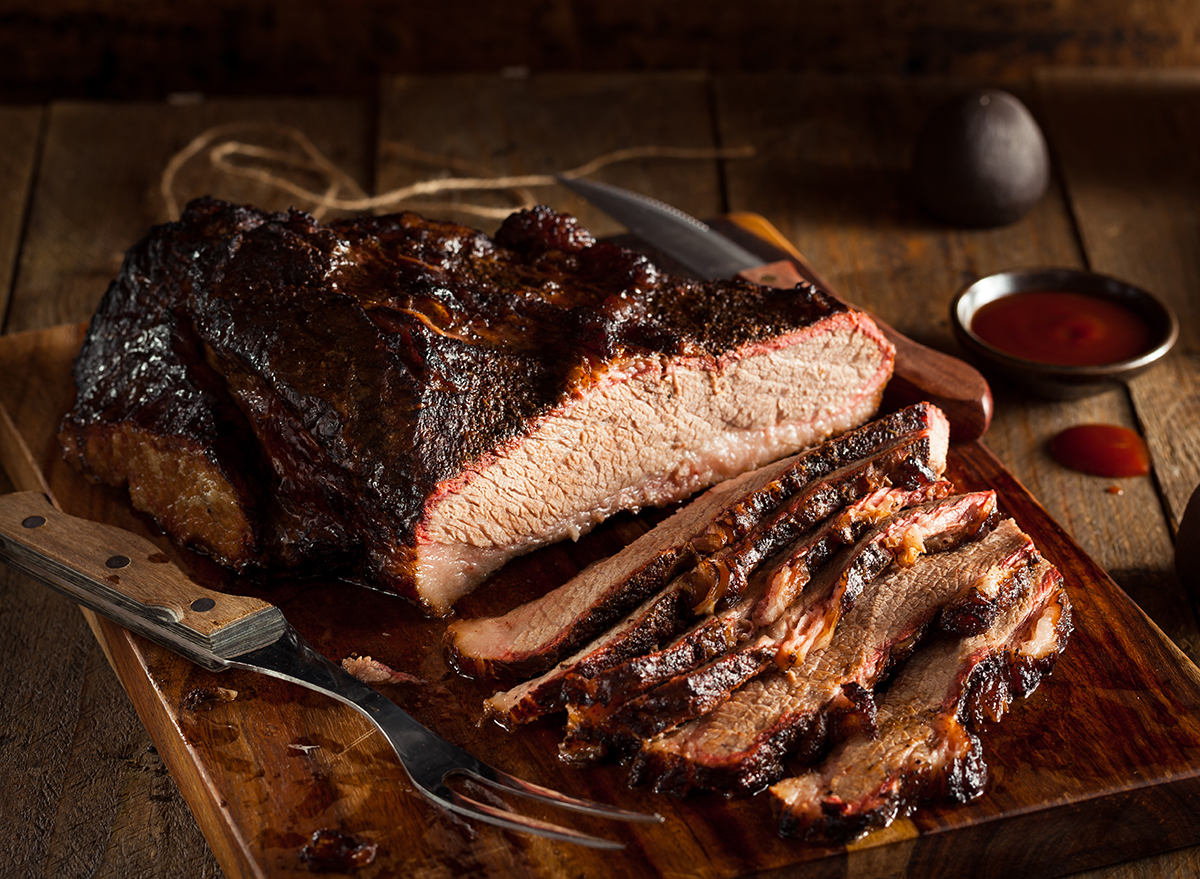

Burnt ends have become a barbecue classic, but there’s a laundry list of carcinogens associated with them. Red meat cooked to a crisp and slathered with sweet barbecue sauce? Best braise your brisket and enjoy in small quantities to avoid the health hazards here.
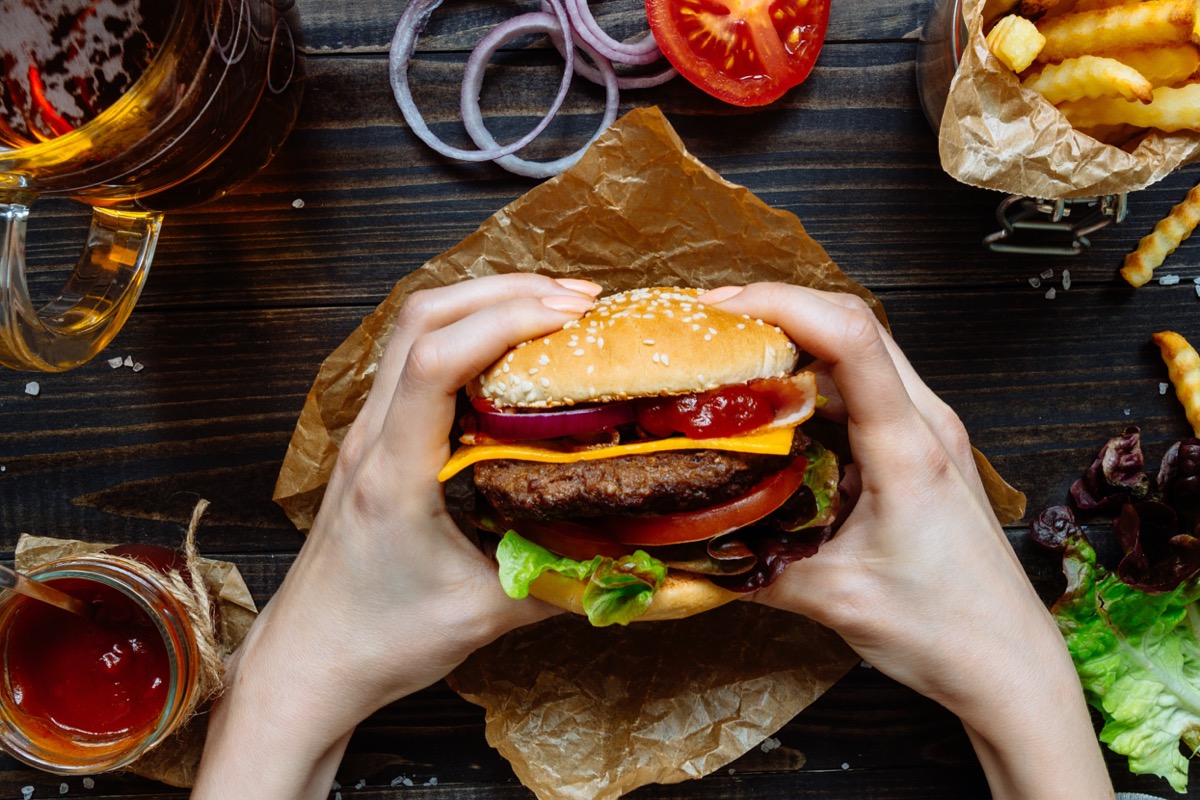

Not only is a burger a source of red meat, but grilling it on the barbecue and serving it on a burger bun makes this a true triple threat. Make your own veggie burgers for a healthier alternative.
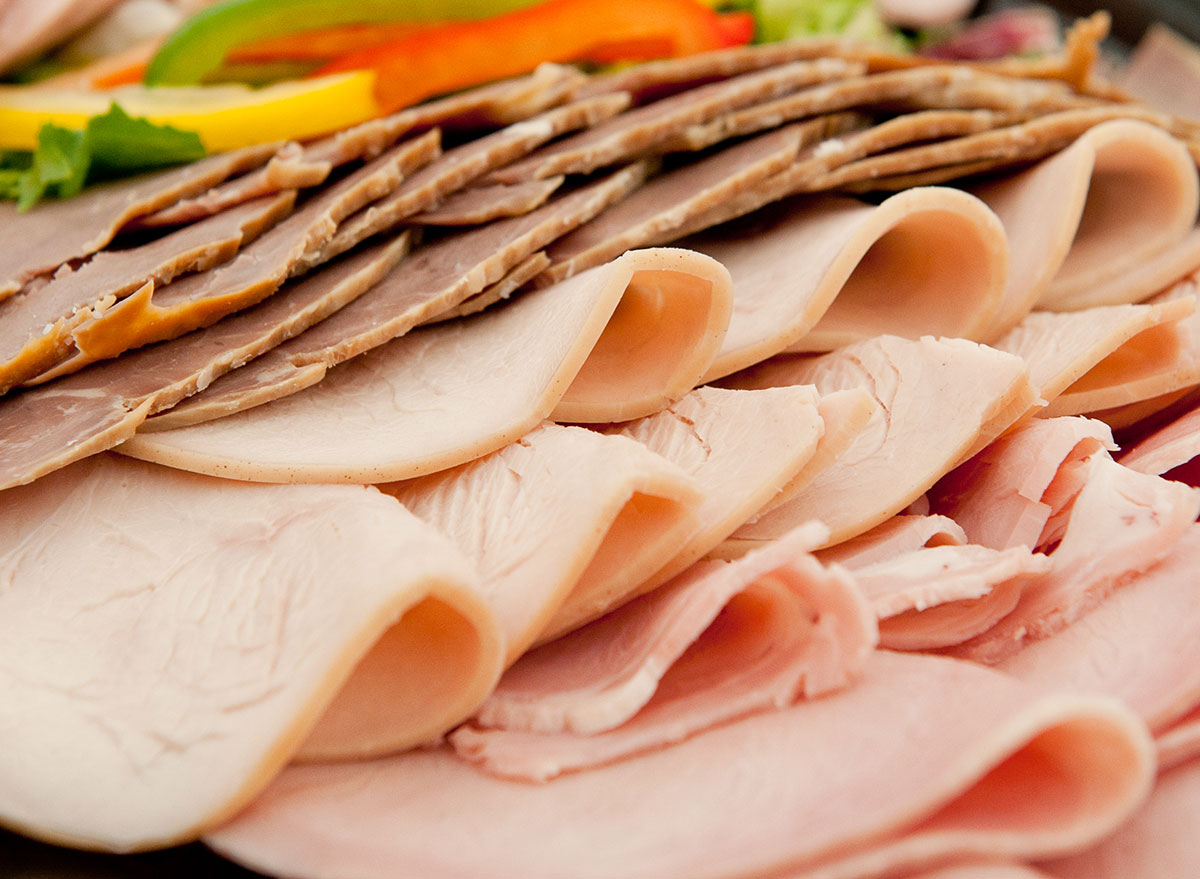

Meat’s carcinogenic properties only increase when it is processed with nitrates. In fact, in 2015, the World Health Organization officially categorized processed meats as “carcinogenic to humans.”
Wong cites this 2017 systematic review, in which the authors found that for every 3.5 ounce serving of red and processed meat consumed per day, the risk of colorectal cancer increased by 12 percent. She also calls attention to another 2018 study indicating that processed meat consumption may increase breast cancer risk.
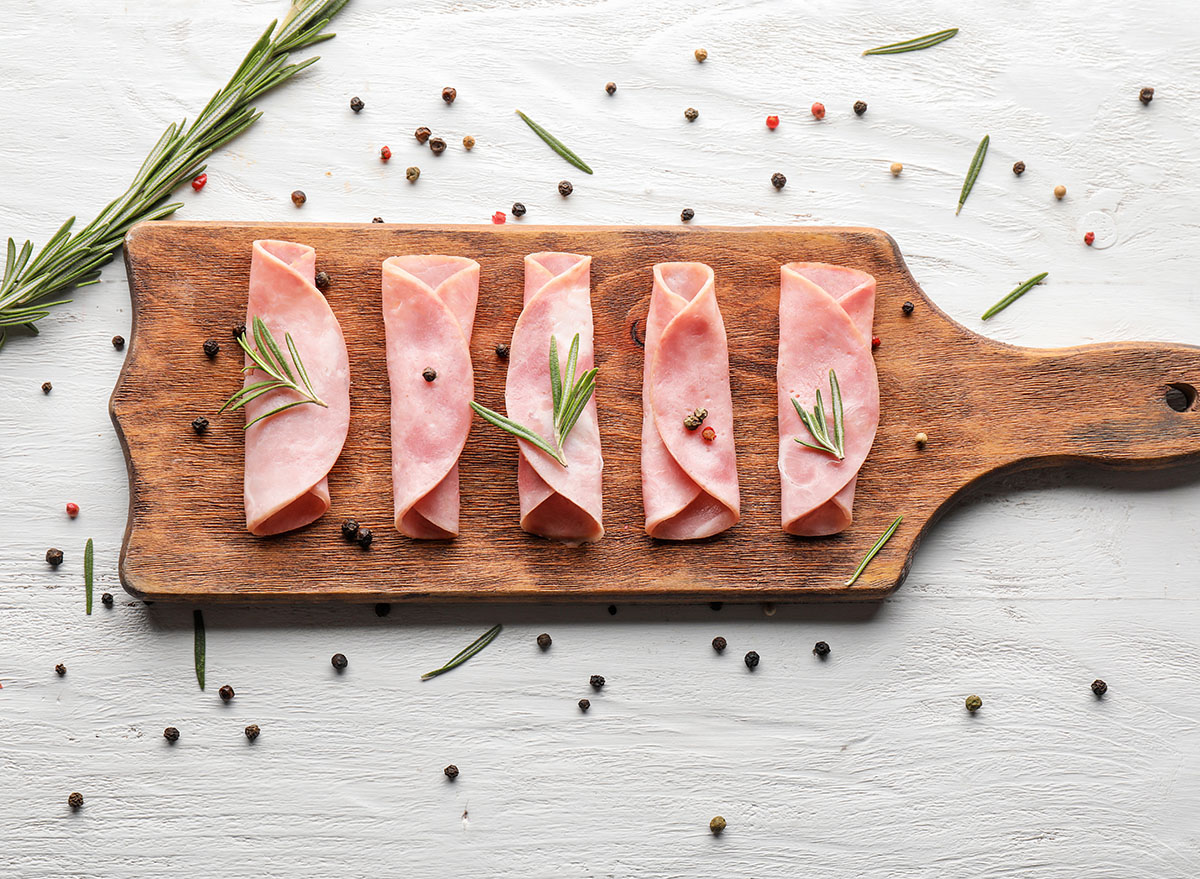

Deli meats are often preserved or cured with nitrates which, Wong explains, can create cancer-causing compounds called nitrosamines. Braise a pork roast at home and thinly slice it for sandwiches instead.
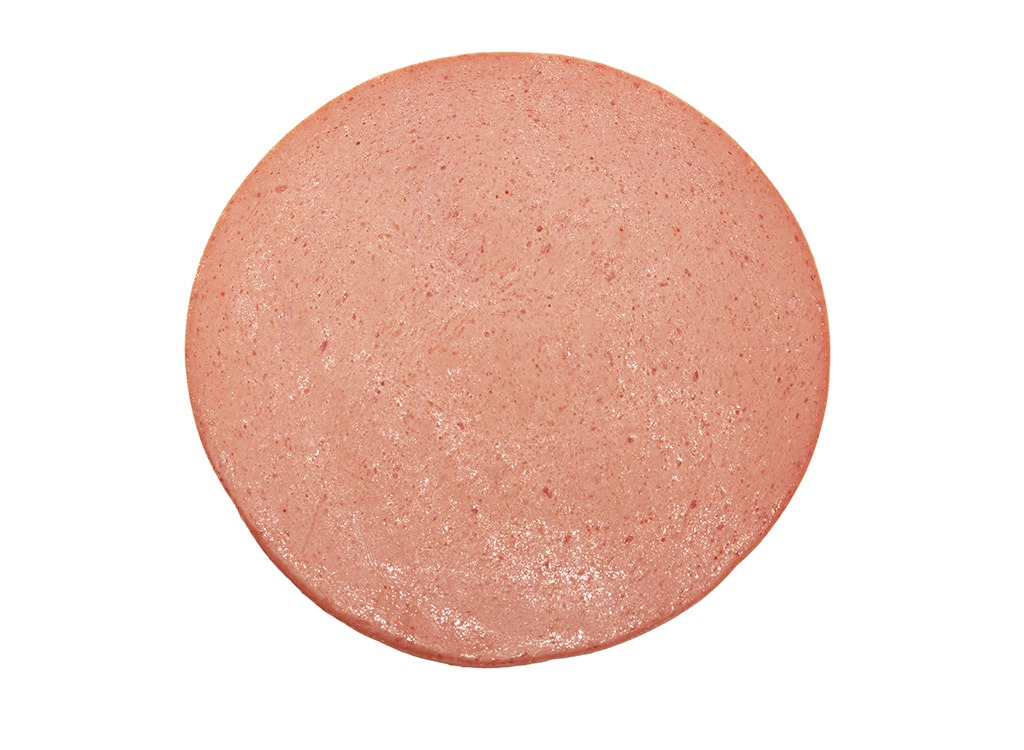

Bologna is even more processed than ham, so it’s no surprise that it’s not the best choice for your sandwich.
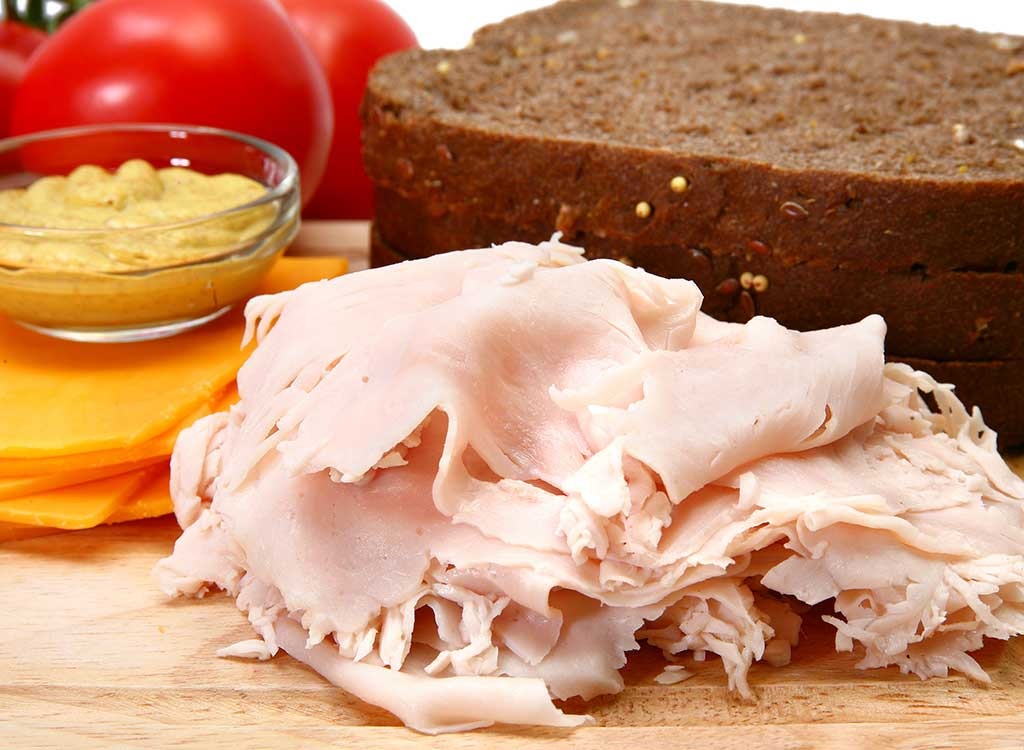

Despite not being red meat, deli turkey is often preserved with nitrates, too. If your deli counter offers sliced roast turkey, choose that for your sandwich instead.


Bacon is one of the worst offenders for nitrates. It also contains a not-negligible amount of saturated fat and salt, and some brands contain quite a bit of sugar, too. Add to this the fact that many of us like our bacon crispy, and bacon is unsurprisingly a fairly carcinogenic choice.
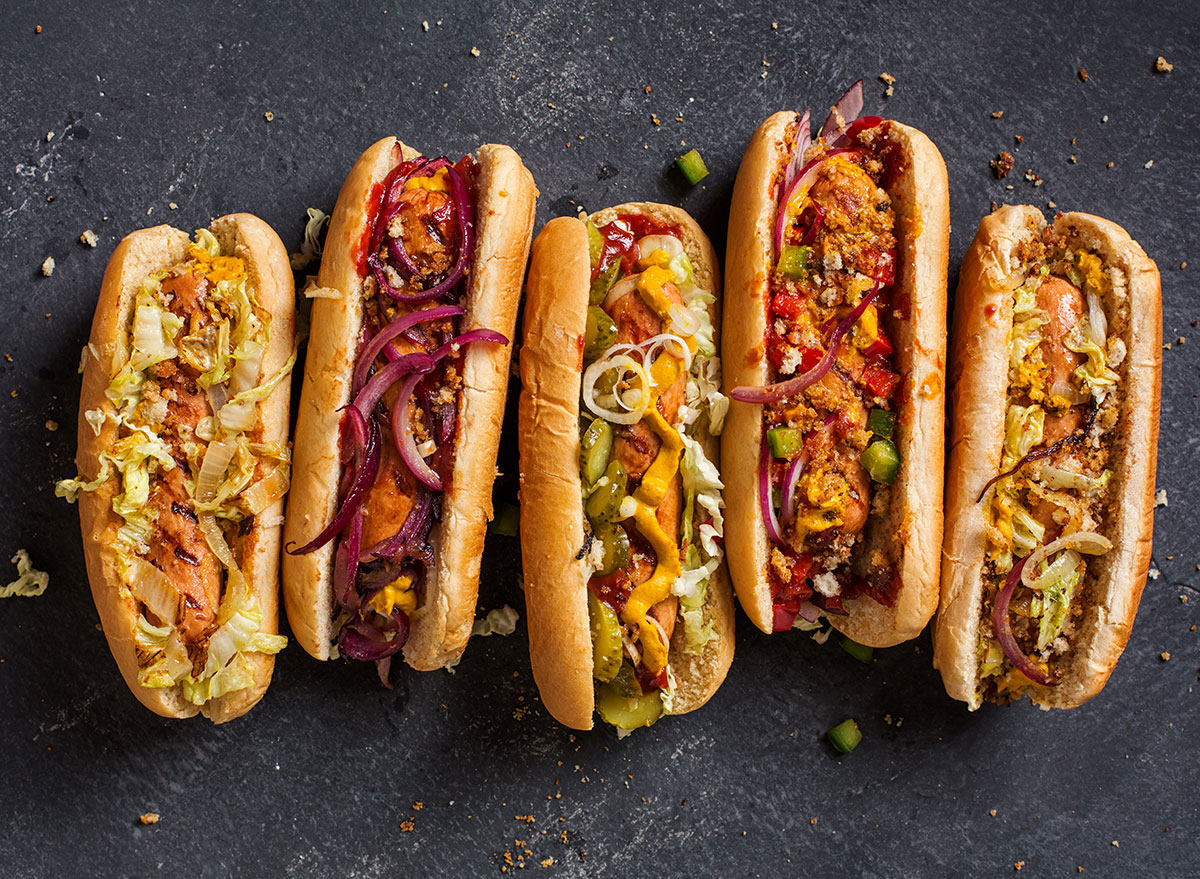

Hot dogs tick two boxes: not just processed meat, they are also part of the ultra-processed food category. Grilling them makes things even worse; best to steer clear entirely.
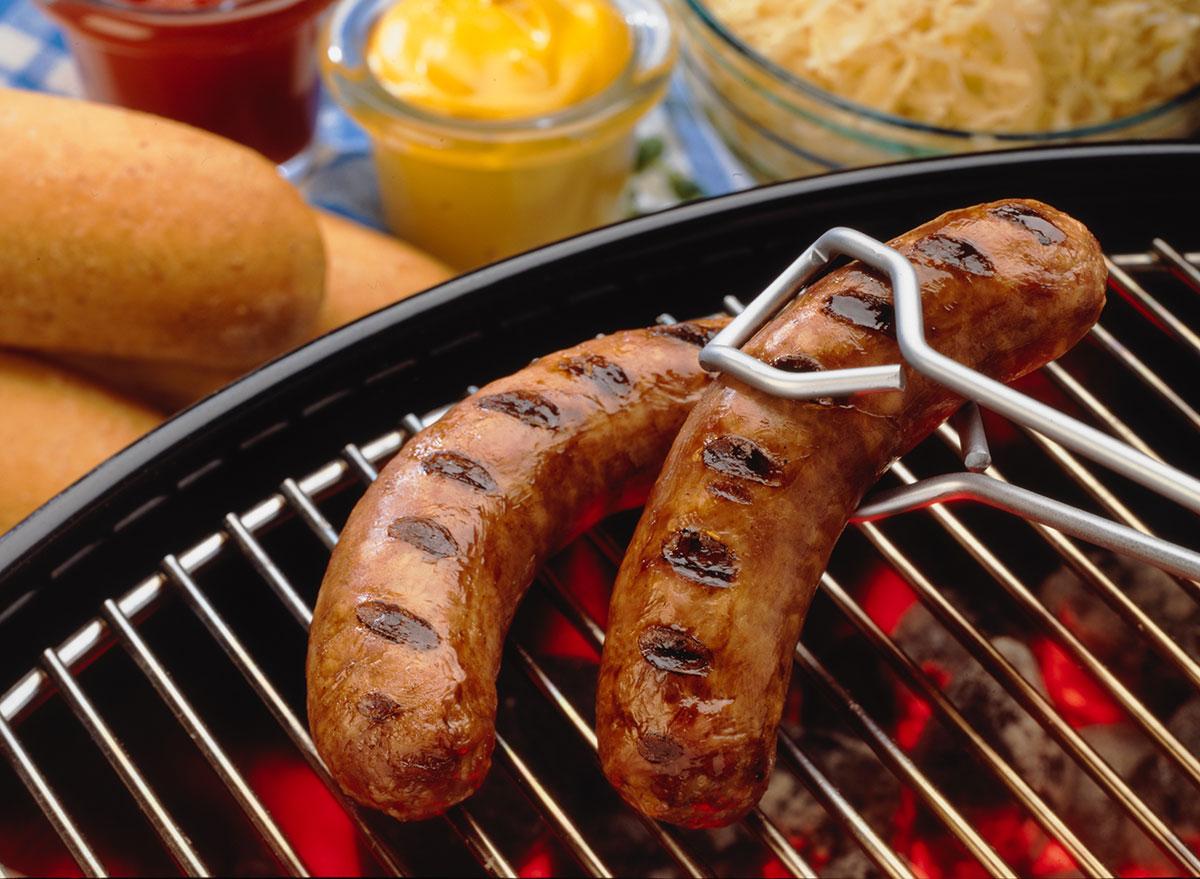

Even if your sausage is artisanal and contains only natural nitrites, Wong says “unfortunately, naturally-occurring nitrites can still increase the risk of cancer.”
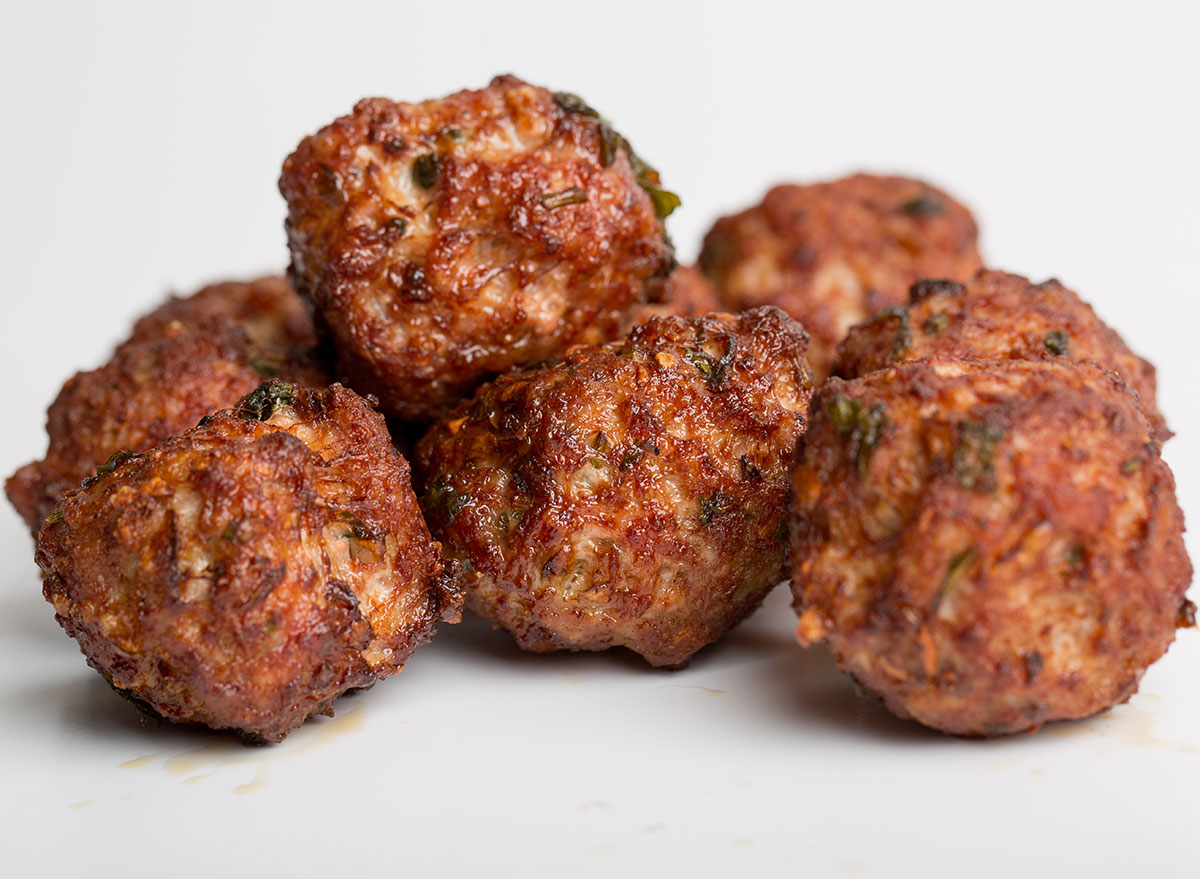

Processed meatballs may or may not contain nitrates, but they are part of the ultra-processed food category and also contain red meat. They may even contain bromated flour and refined sugars. Best to avoid these, too.
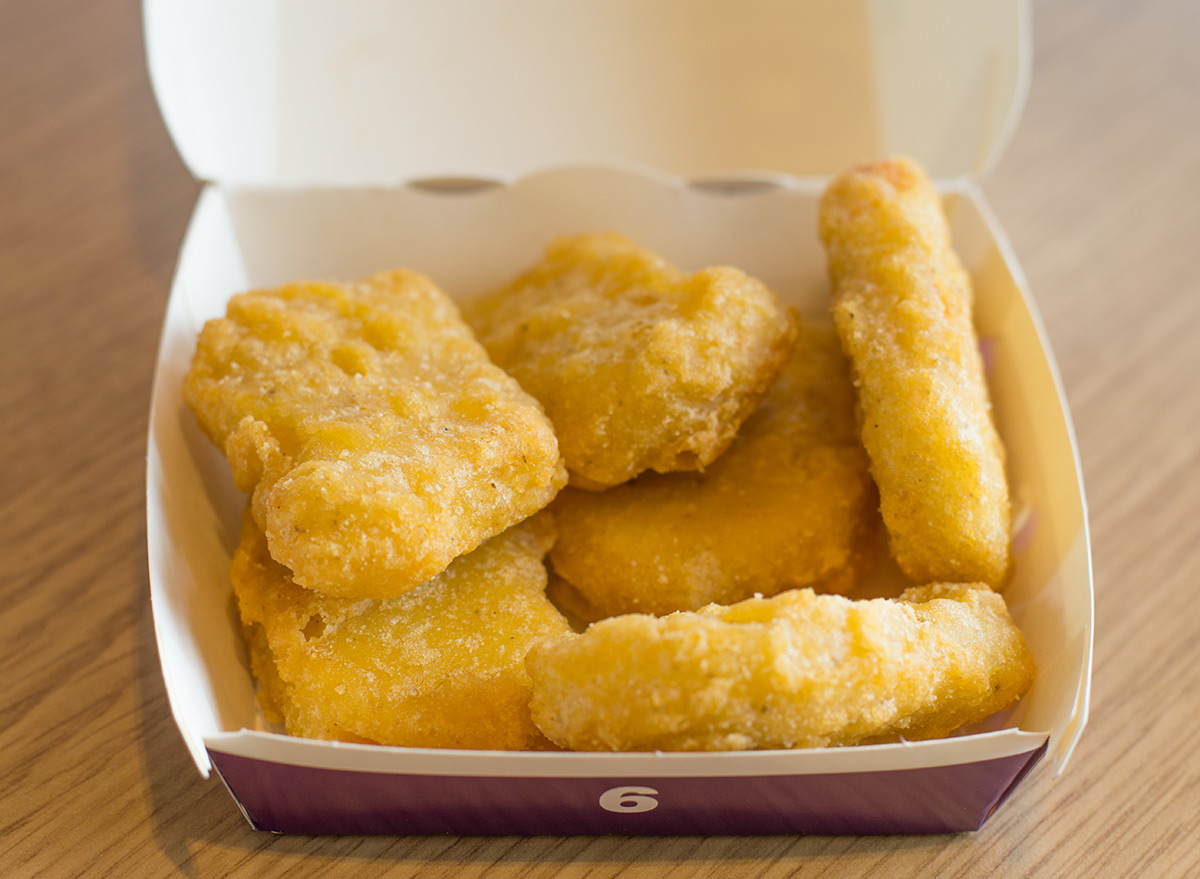

Chicken nuggets pose similar problems: coated in breadcrumbs and fried, they’re far from the best choice, especially for kids. Bread your own chicken fingers in homemade bread crumbs and bake them for a far healthier alternative.
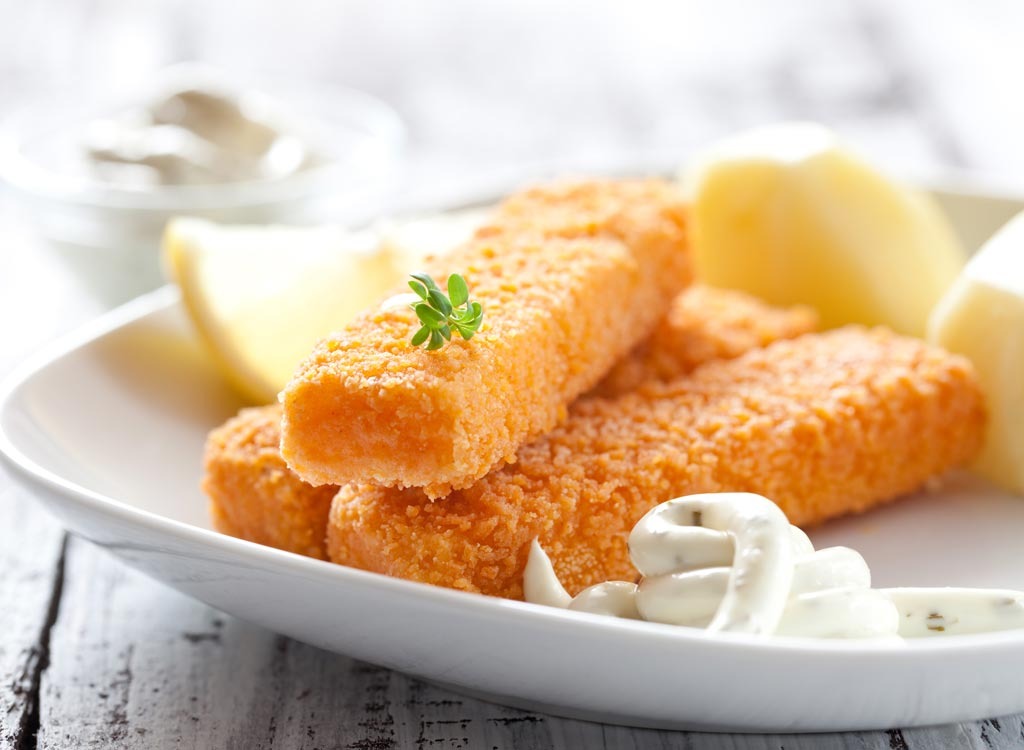

Fish sticks were once painted as a simple way to add more fish to your diet, but the additives in them make them far from the best choice. If you’re having a hard time getting your kids to eat fish, consider serving a milder fish with a flavorful, antioxidant-rich tomato relish instead.
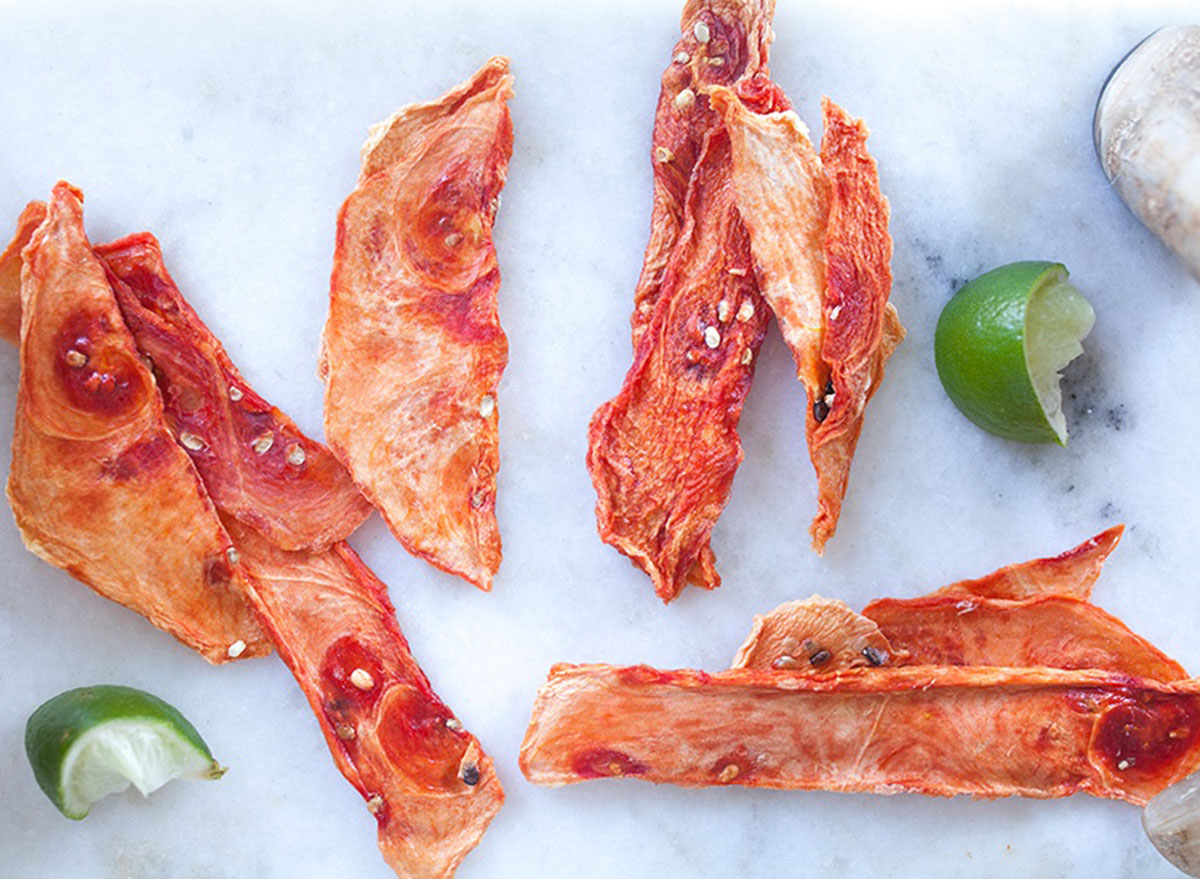

Beef jerky isn’t just made with red meat; it is also heavily processed and contains refined sugar, another major culprit in cancer-causing foods. Best to leave this one at the gas station.
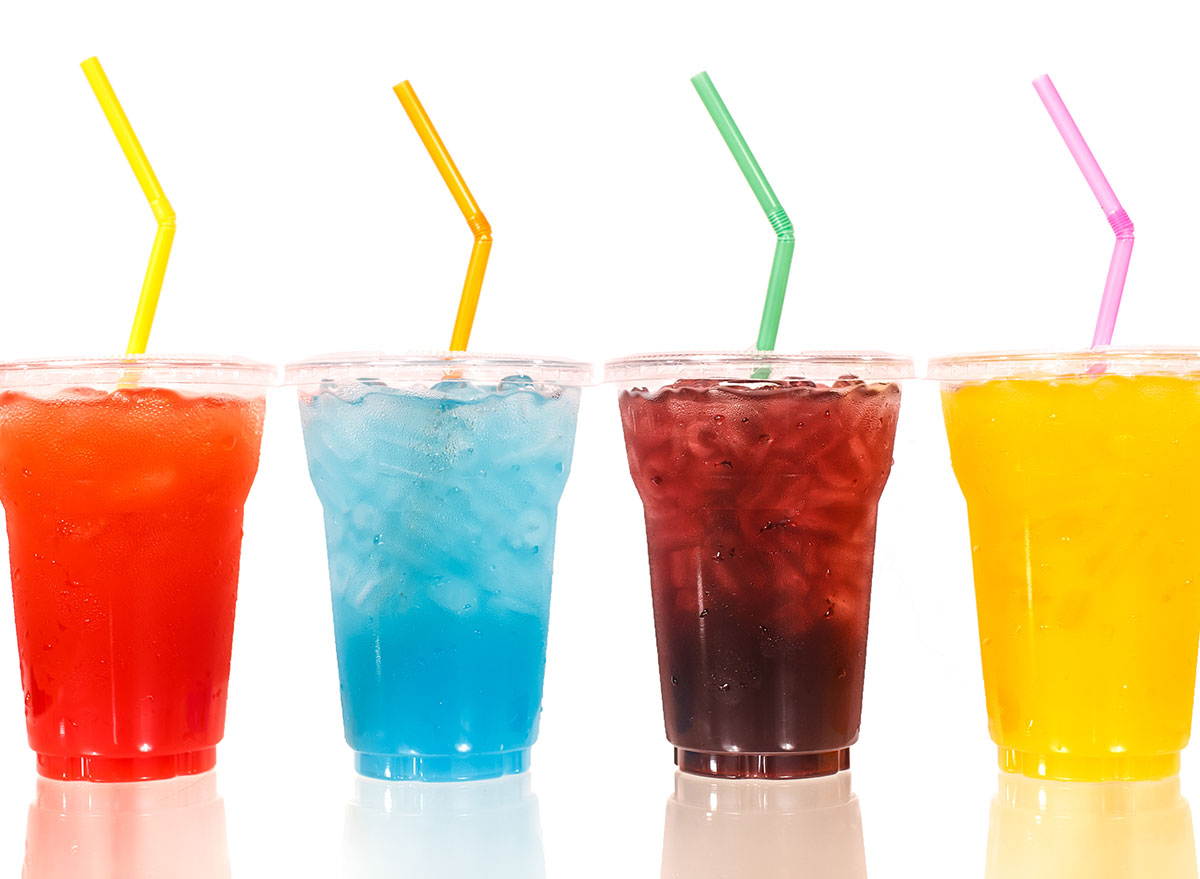

We’ve alluded to this higher up in this article, but it should come as no surprise that refined sugar is a big culprit when it comes to carcinogens. Researchers have found that spikes in blood glucose can increase the risk of several cancers.
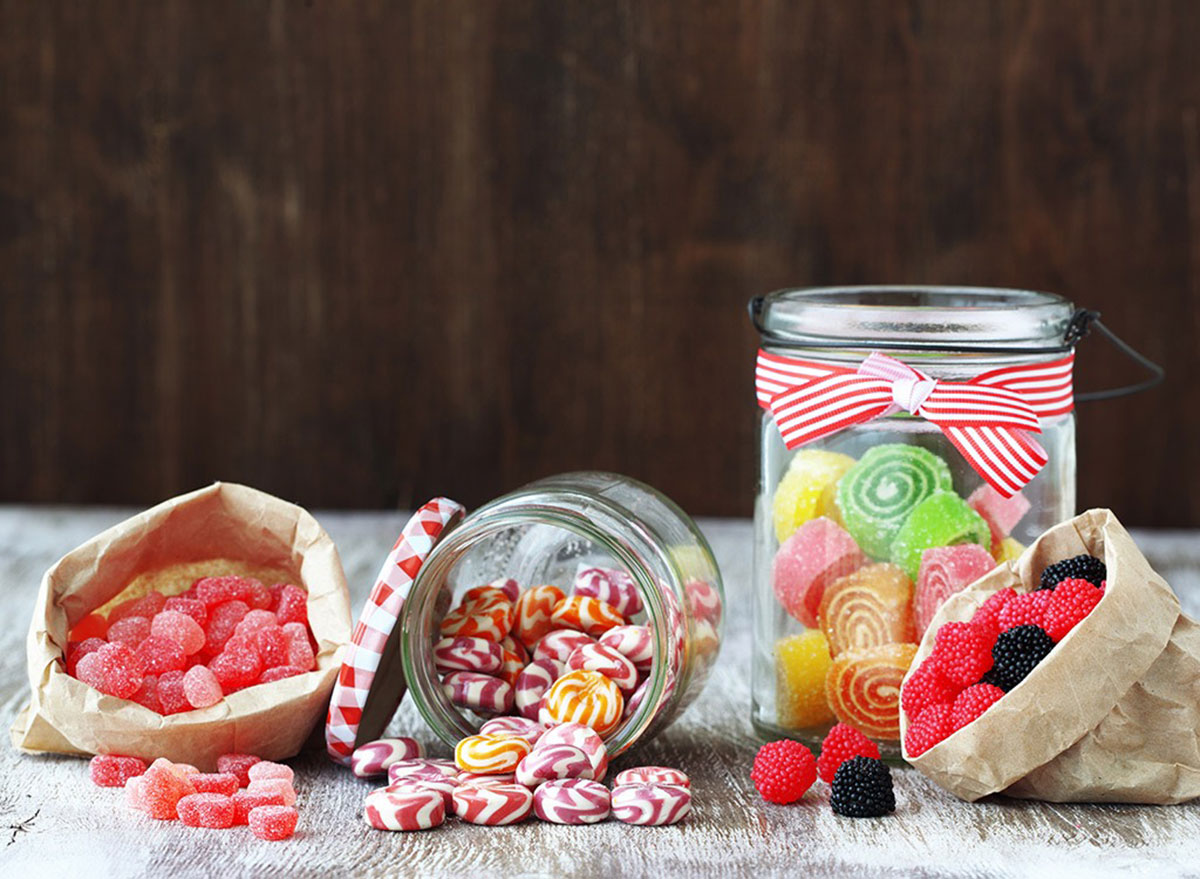

Candy is often sweetened by high-fructose corn syrup, which is metabolized more quickly by cancer cells than other forms of sweeteners. And while candy might be bright in color, it has none of the health benefits of equally bright fruits, which are a far better sweet treat option.
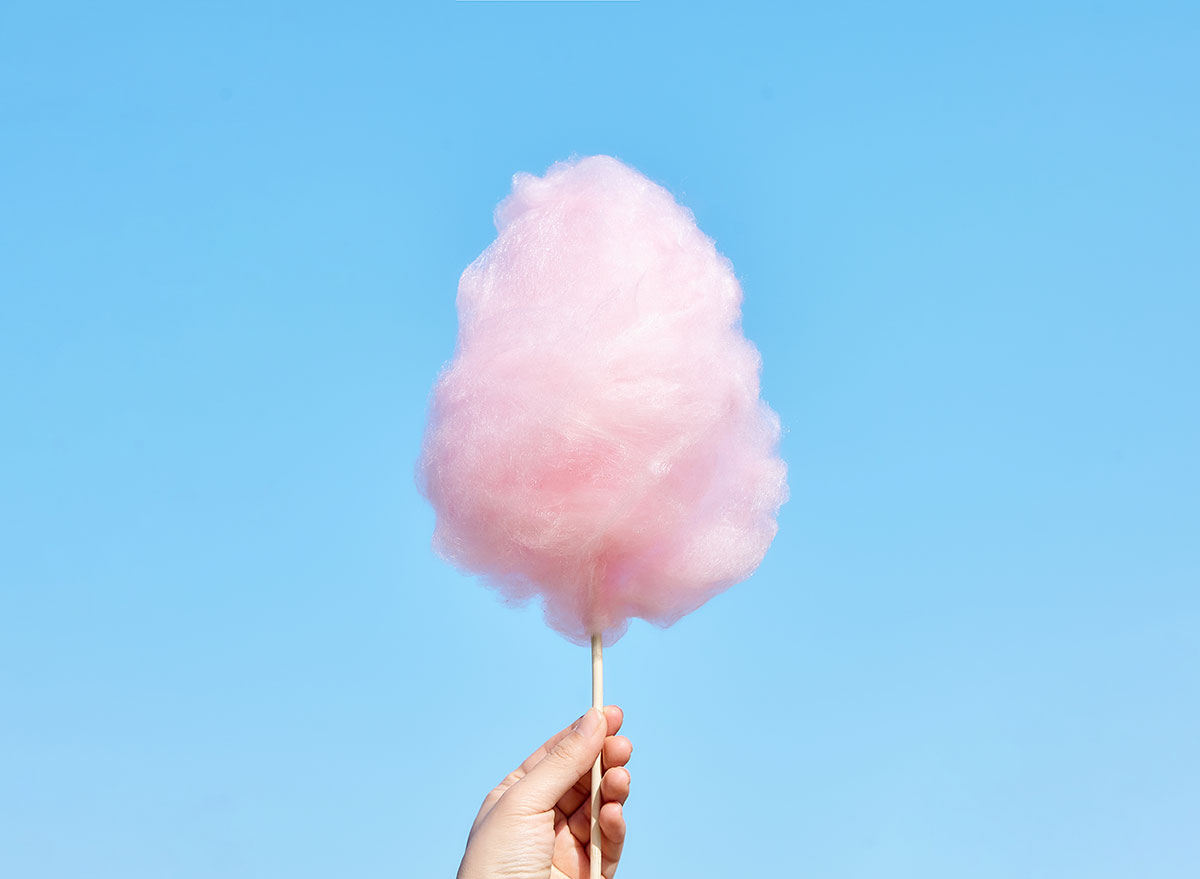

Cotton candy isn’t just pure sugar, it’s also cooked at a very high temperature. This fluffy fair food may be fun to eat, but it’s far from the best choice if you’re looking for anti-carcinogenic foods to enjoy.
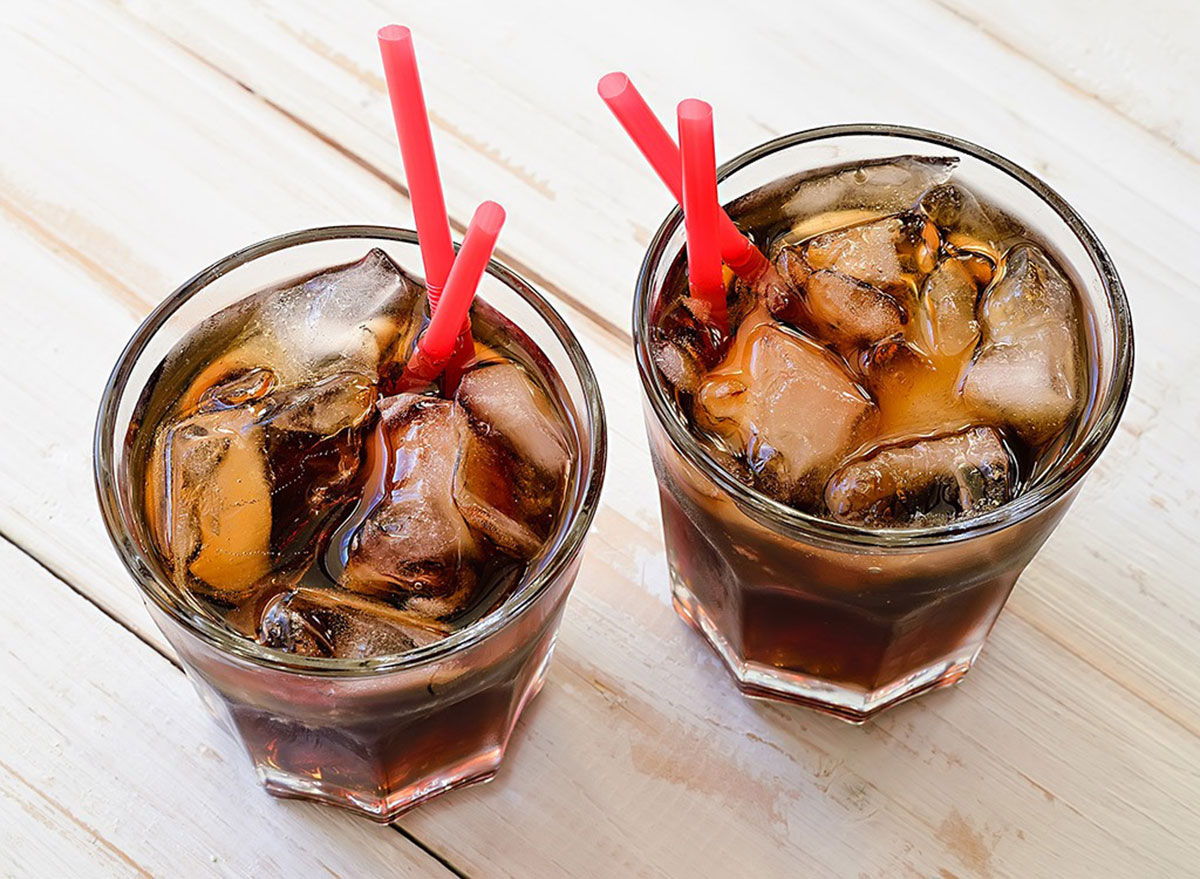

Soda is almost entirely made of high-fructose corn syrup. To fulfill these cravings, stick to fizzy water with real fruit instead.
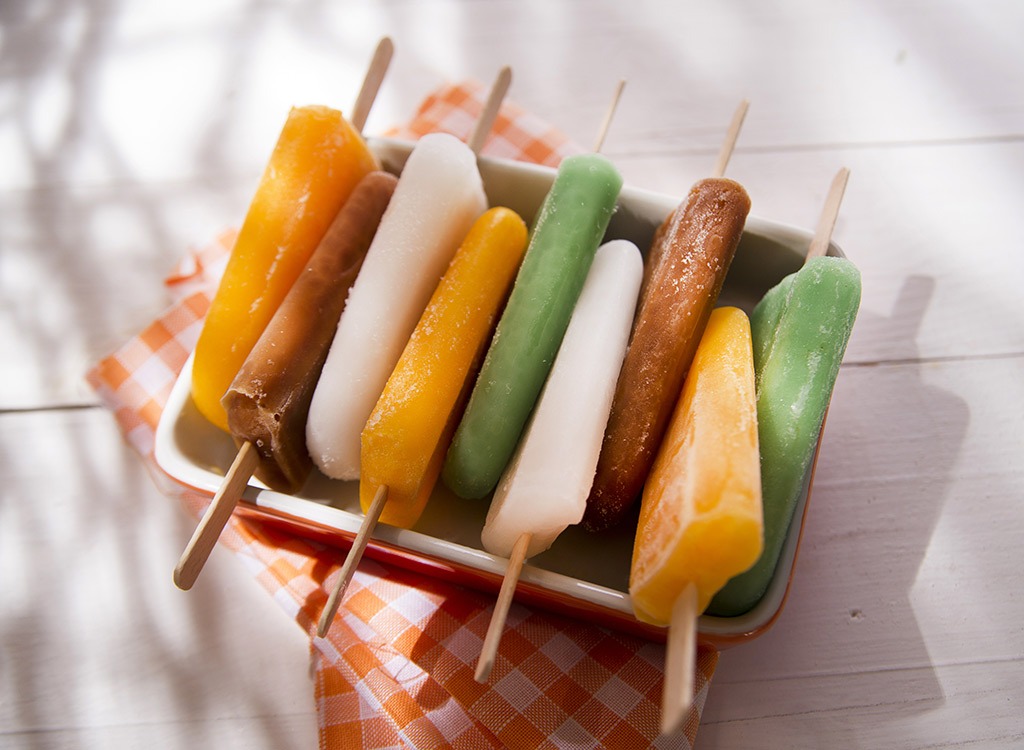

This summertime treat is almost pure sugar. For a homemade version that’s just as refreshing, freeze whole watermelon slices on a popsicle stick.


Donuts aren’t just packed with sugar; they’re also deep-fried! Best steer clear of these, particularly if they’re shelf-stable and made with bromated flours.
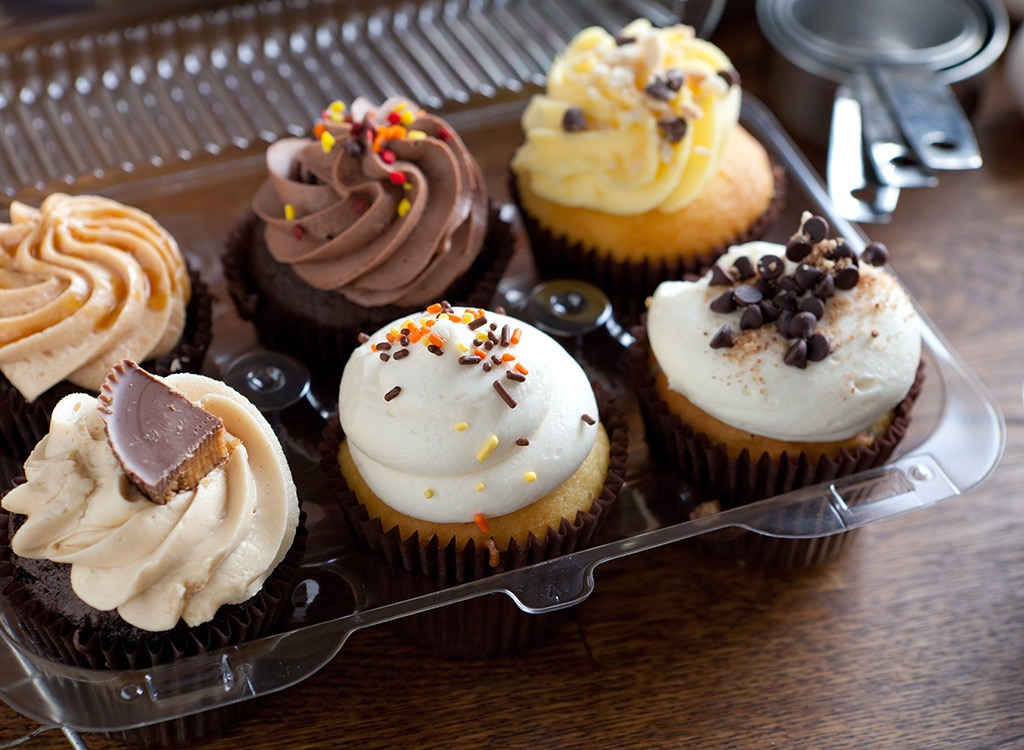

Convenience pastries and cakes pose the same problem: high in refined sugar and refined carbs, they’re inflammatory and therefore carcinogenic.


Unlike true maple syrup, which at least has some trace minerals, pancake syrup is almost exclusively high-fructose corn syrup. Drizzle it on pancakes made from a box, and you’re serving up a fairly carcinogenic breakfast.
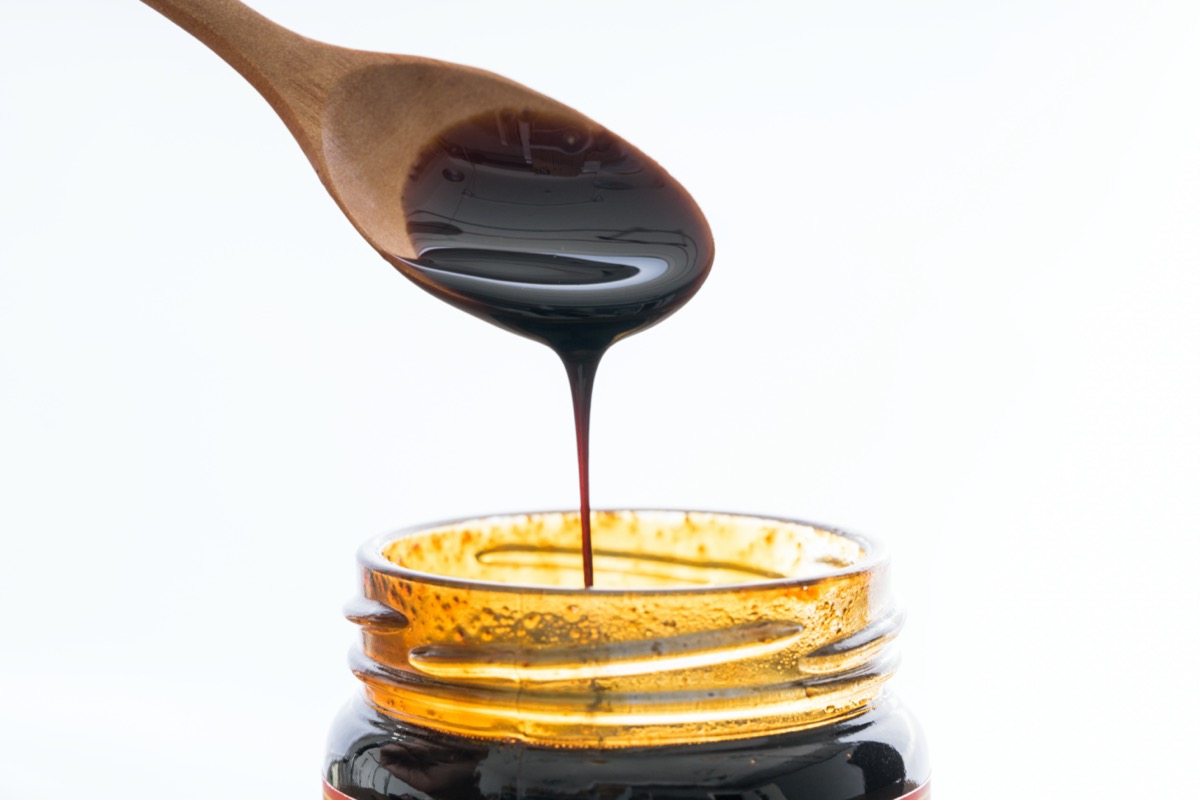

Dark chocolate certainly has some health benefits and antioxidants, but chocolate syrups are so full of high-fructose corn syrup, they negate any benefits the cocoa had. And more some unsuspecting sources of HFCS, check out 23 Surprising Foods That Contain High Fructose Corn Syrup.


Energy bars might look like health food, but most of them are filled with sugar and refined carbohydrates. For a real burst of energy, an apple is a much better choice.
READ RELATED: Why Gyms Can be COVID-19 Hotspots?
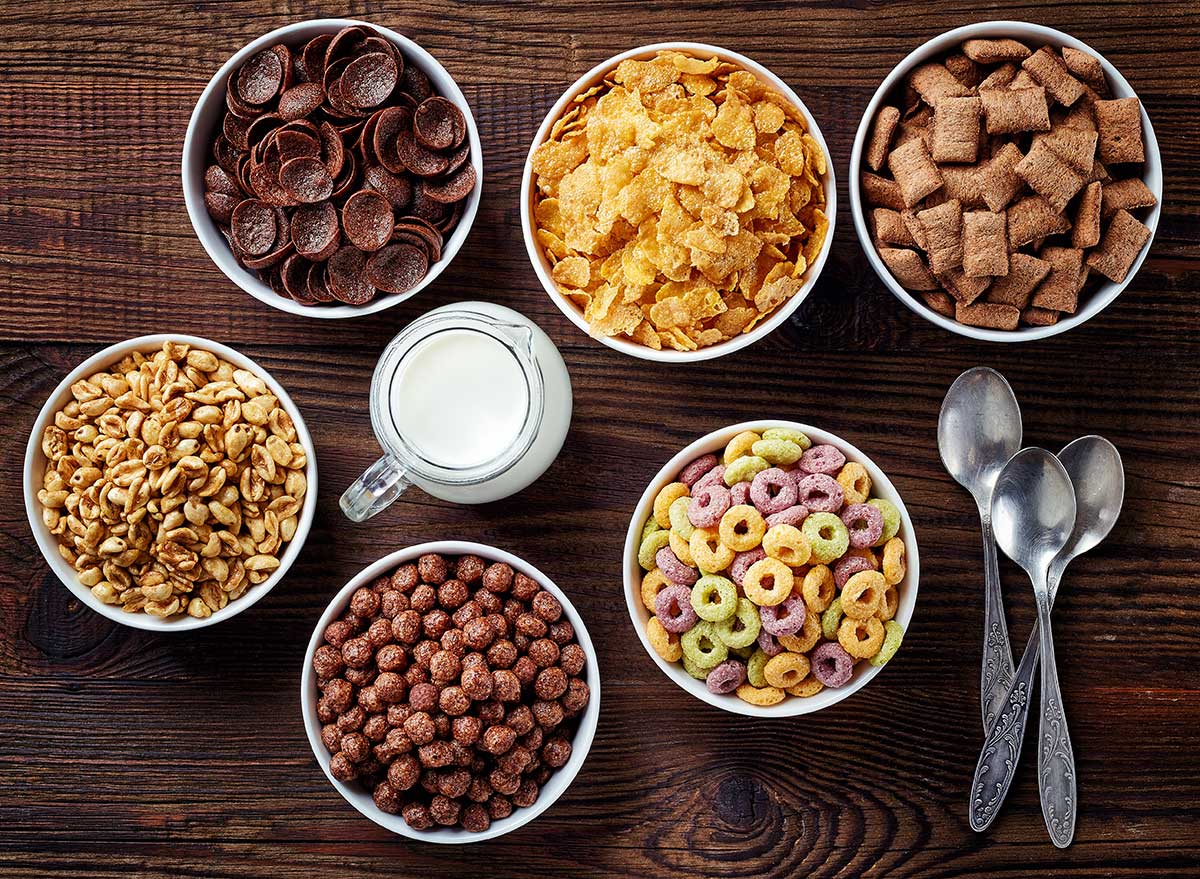

Breakfast has often been portrayed as the most important meal of the day, but start your day with certain breakfast cereals, and you won’t be doing your body any favors. These refined, highly-processed options are loaded with refined sugar.
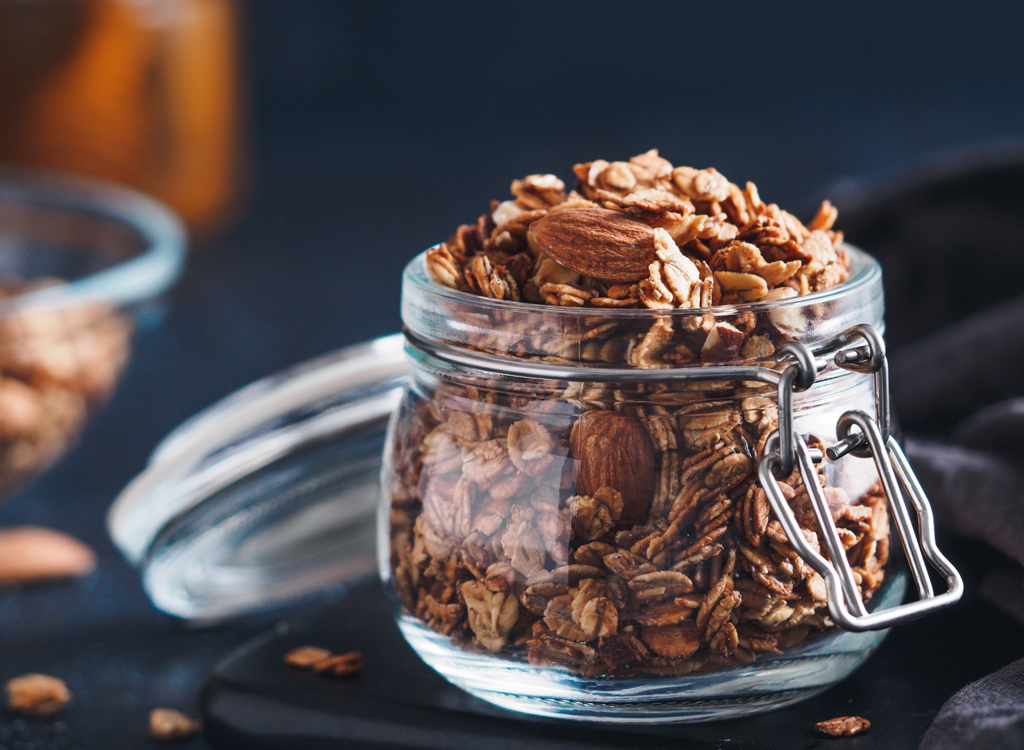

Granola seems like the healthier option, but like with energy bars, this is often just down to good marketing. Homemade granola can be a better option, provided you make it with whole grains and nuts and don’t add too much sugar.
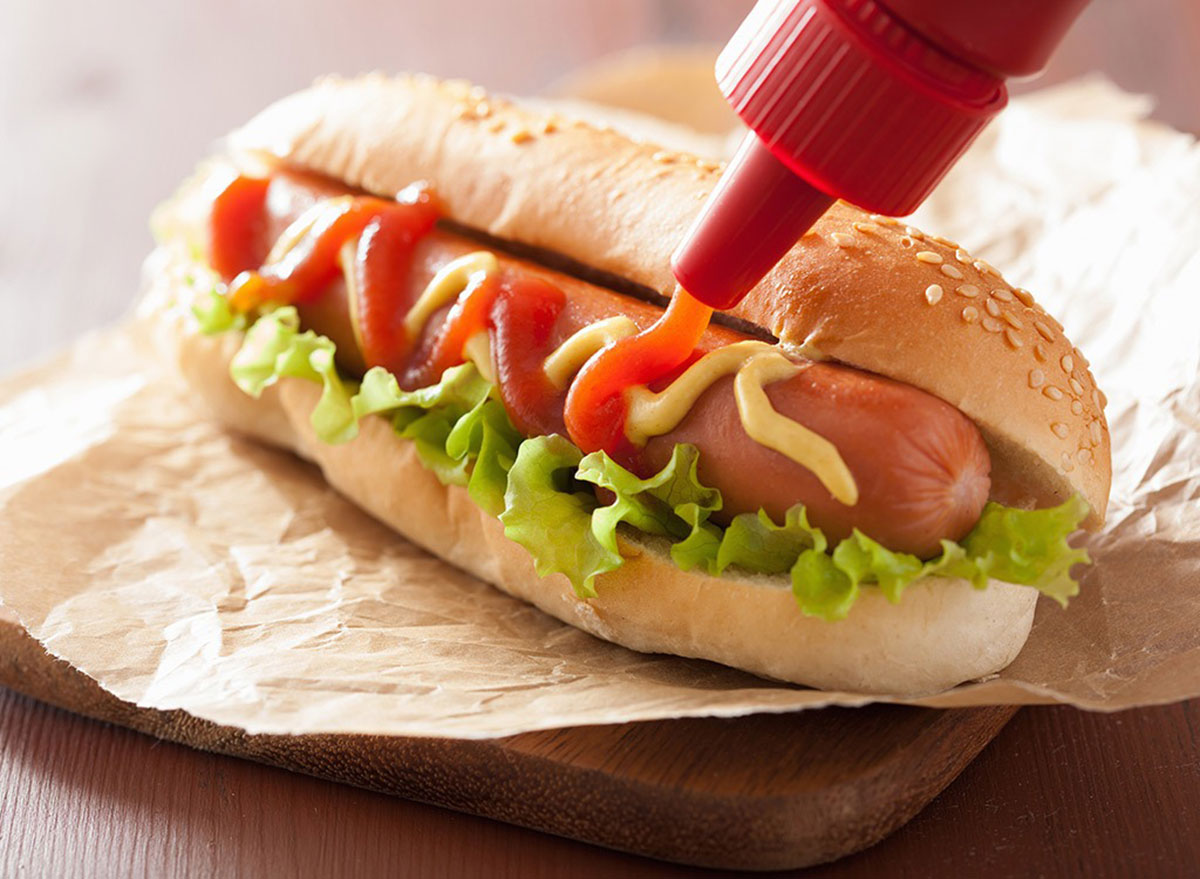

Ketchup may seem like a tomato-based sauce, but in reality, most brands are filled with high-fructose corn syrup. Making your own ketchup at home allows you to choose the quantity and quality of the sugar you use.
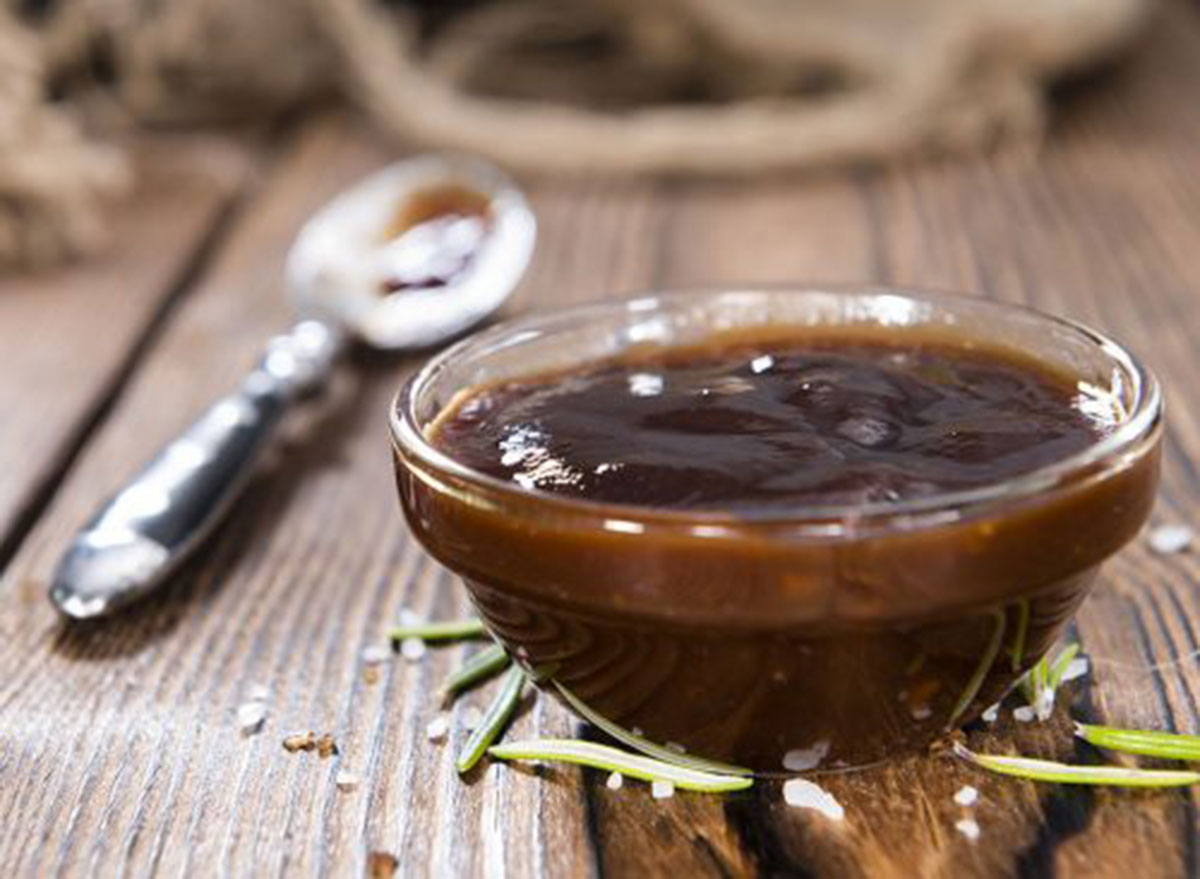

Just like ketchup, store-bought barbecue sauce is mostly sugar. Making a spice rub is a far better way to add flavor to your favorite meats.
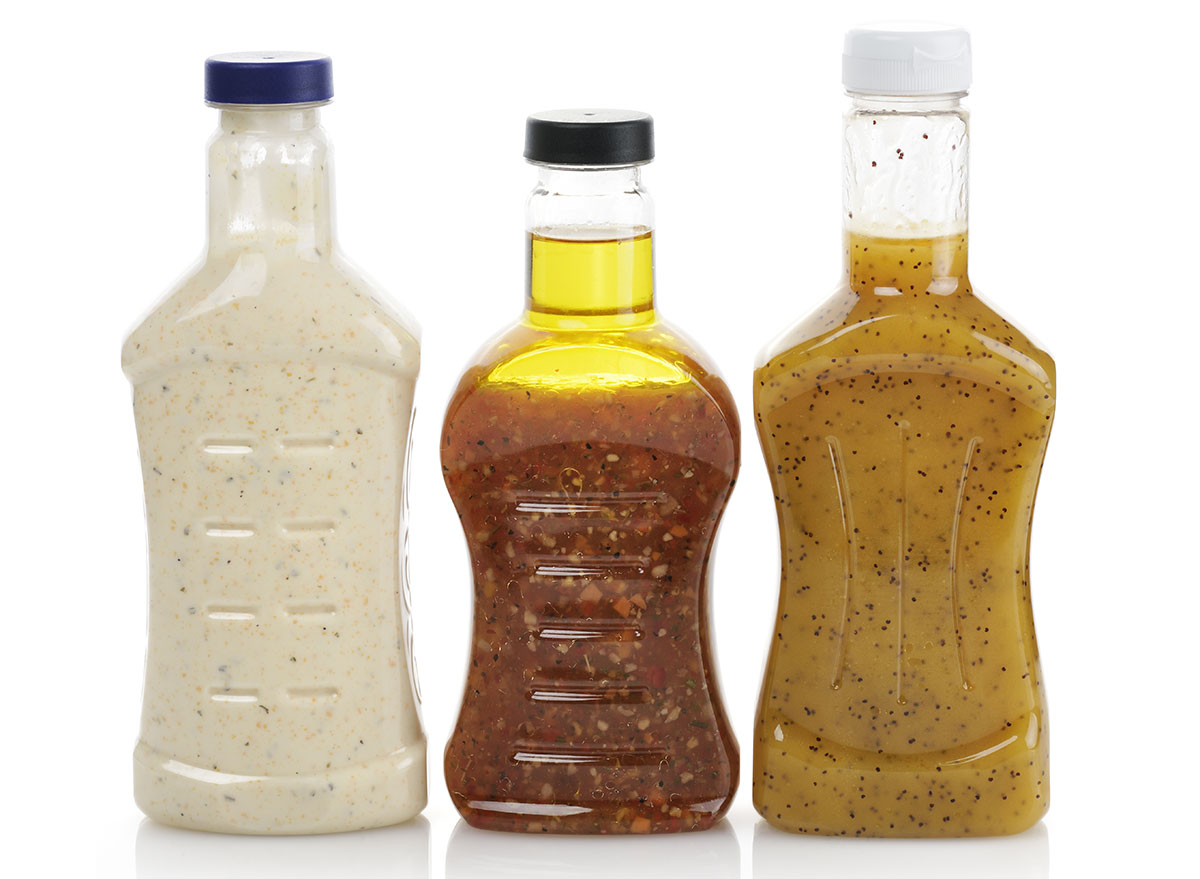

Prepared salad dressings can be filled with additives including sugar. Luckily, it’s so easy to make your own at home. Just combine a heaping tablespoon of mustard with two of vinegar and four of heart-healthy extra-virgin olive oil. Whisk to combine, season to taste with salt and pepper, and enjoy!


Applesauce might seem healthy at first, but most brands are filled with sugar. Make your own at home or opt for low-sugar varieties to ensure that you’re actually making a healthier choice. Also, be sure to opt for organic to reduce the risk of pesticide contamination.
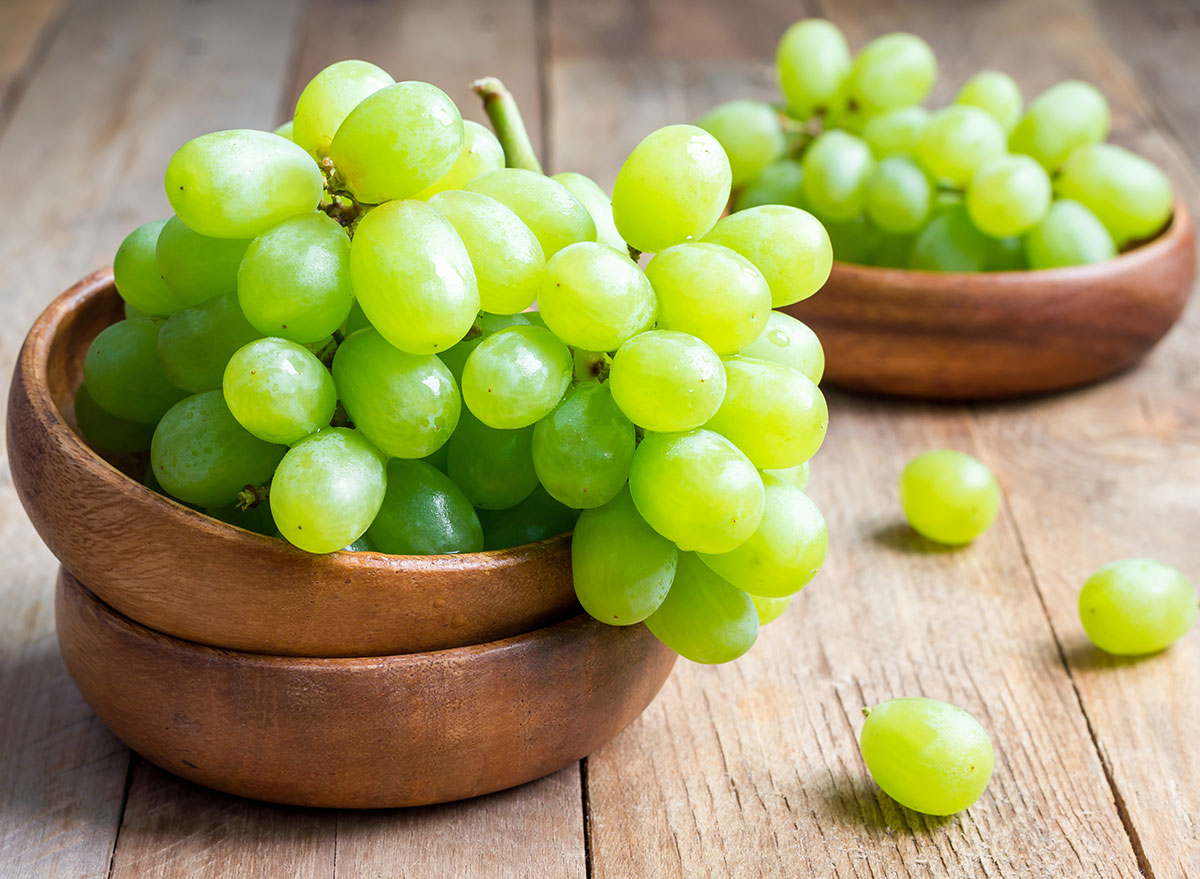

OK, so no one goes looking for pesticides and herbicides in their food—but they’re actually present in many, and nowhere more than in the Dirty Dozen. This list of the most contaminated fruits and vegetables on the American market is released every year by the EWG. Culprits on the list may contain neonicotinoid pesticides, shown to be endocrine disruptors, or glyphosate, which the World Health Organization classed as a probable human carcinogen in 2015.
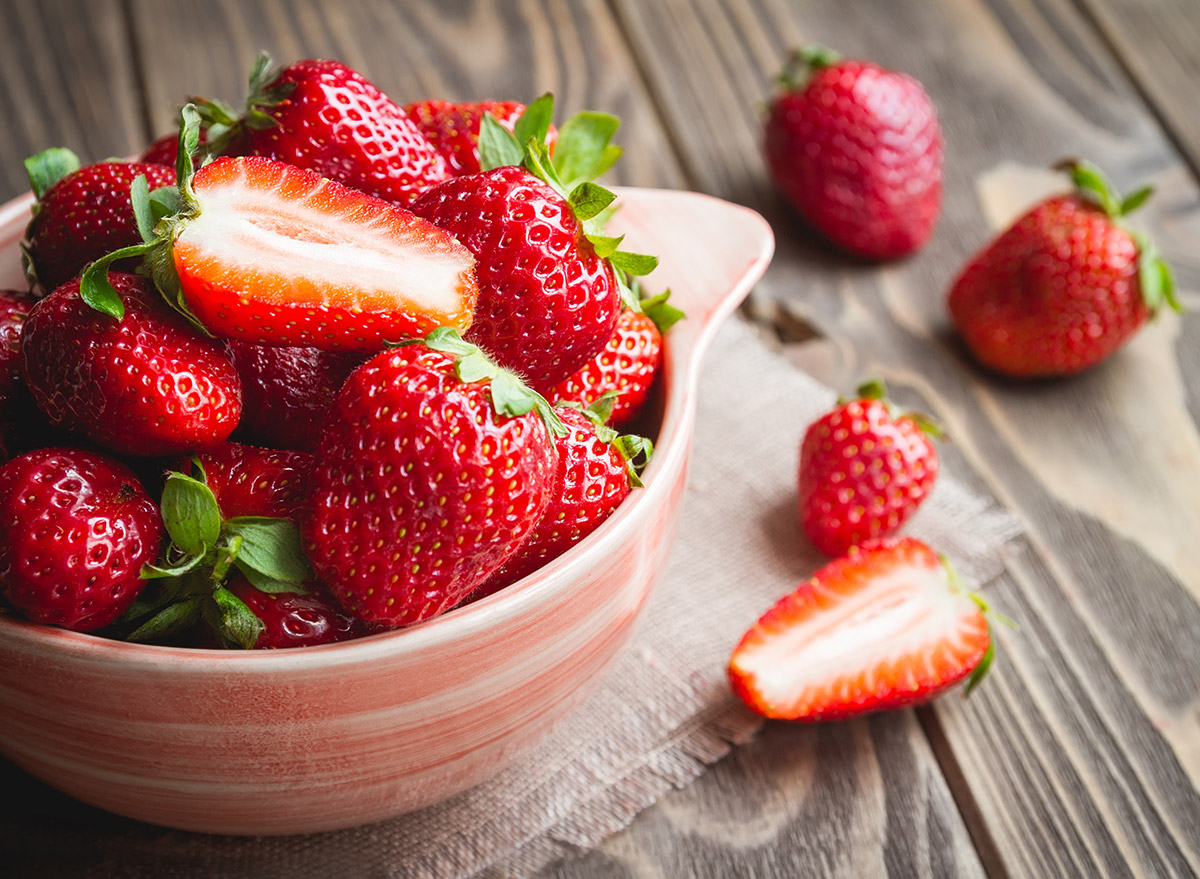

Conventional strawberries topped the 2020 Dirty Dozen, with more pesticides and herbicides than any other item on the list. Their antioxidant benefits are canceled out by the presence of these contaminants, so opt for organic whenever you can.
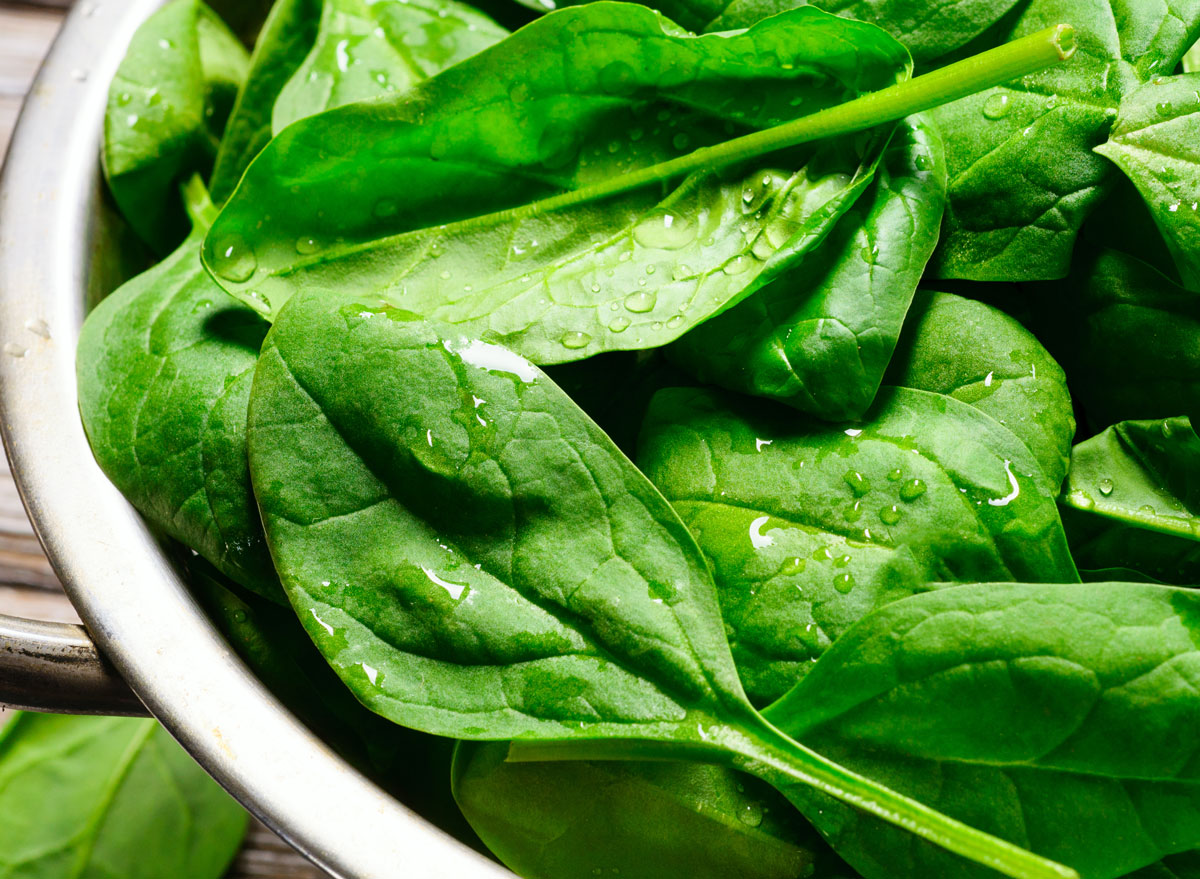

Another healthy food gone awry! Choose organic spinach whenever possible to ensure that you’re actually reaping the health benefits of this superfood.
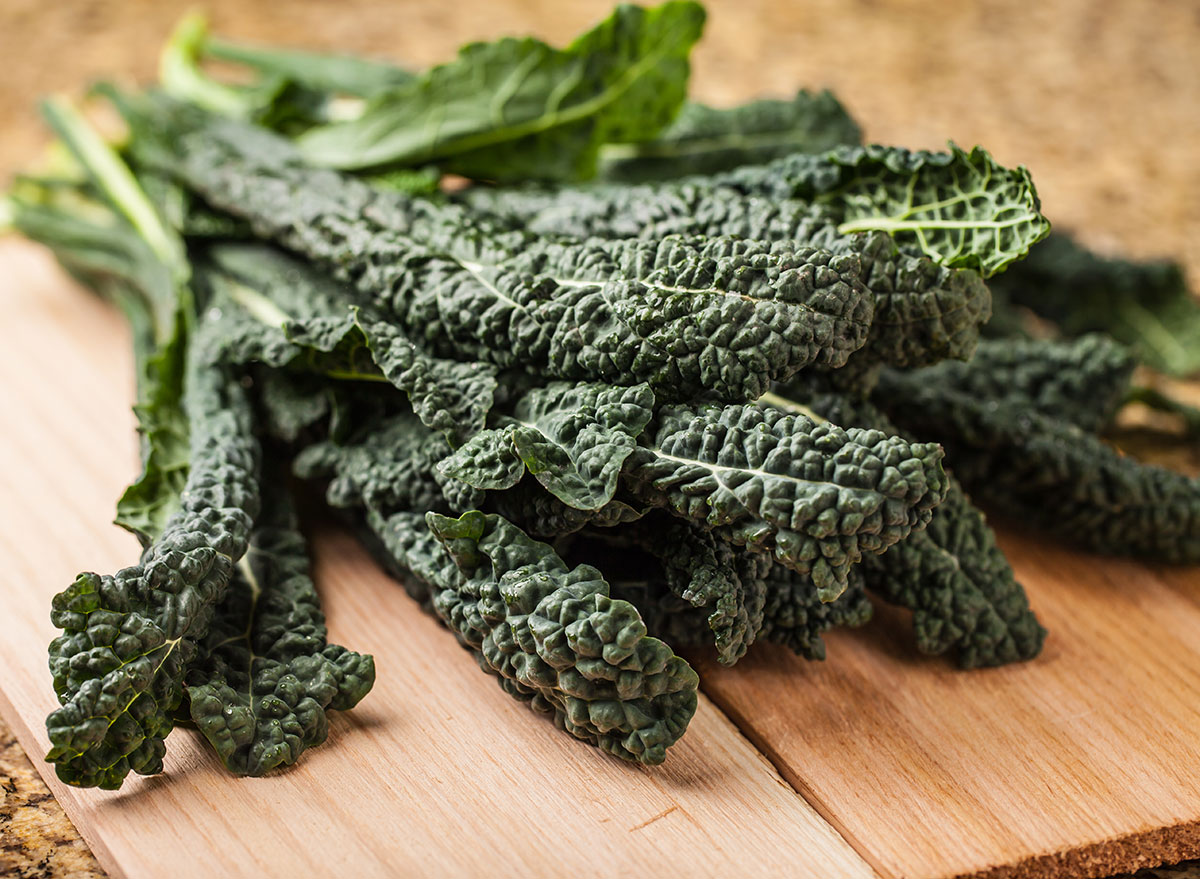

Kale has been high on the Dirty Dozen list ever since the USDA elected to start testing the popular superfood for contaminants. Choose organic kale whenever you can to avoid contaminants.
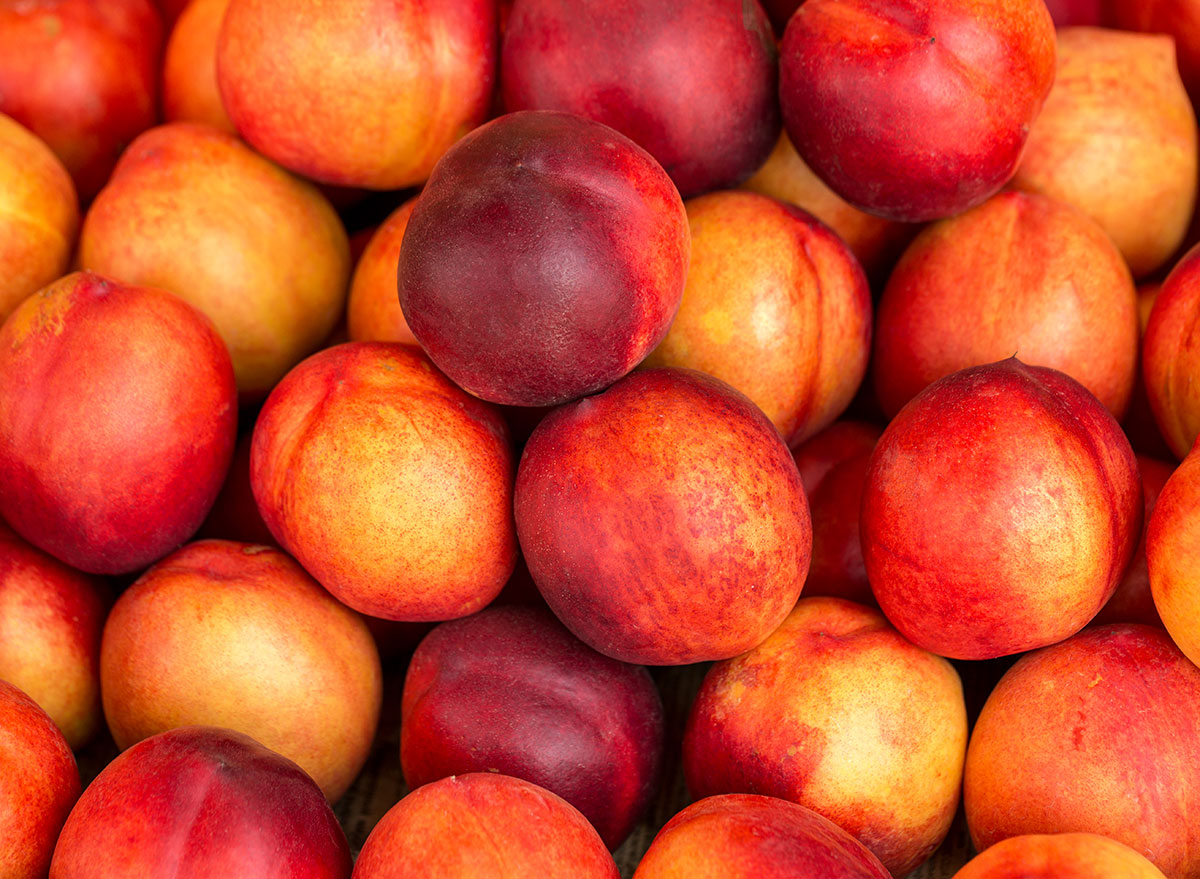

One of the most popular summer fruits is also one of the most contaminated. Be sure to choose organic nectarines whenever you can.
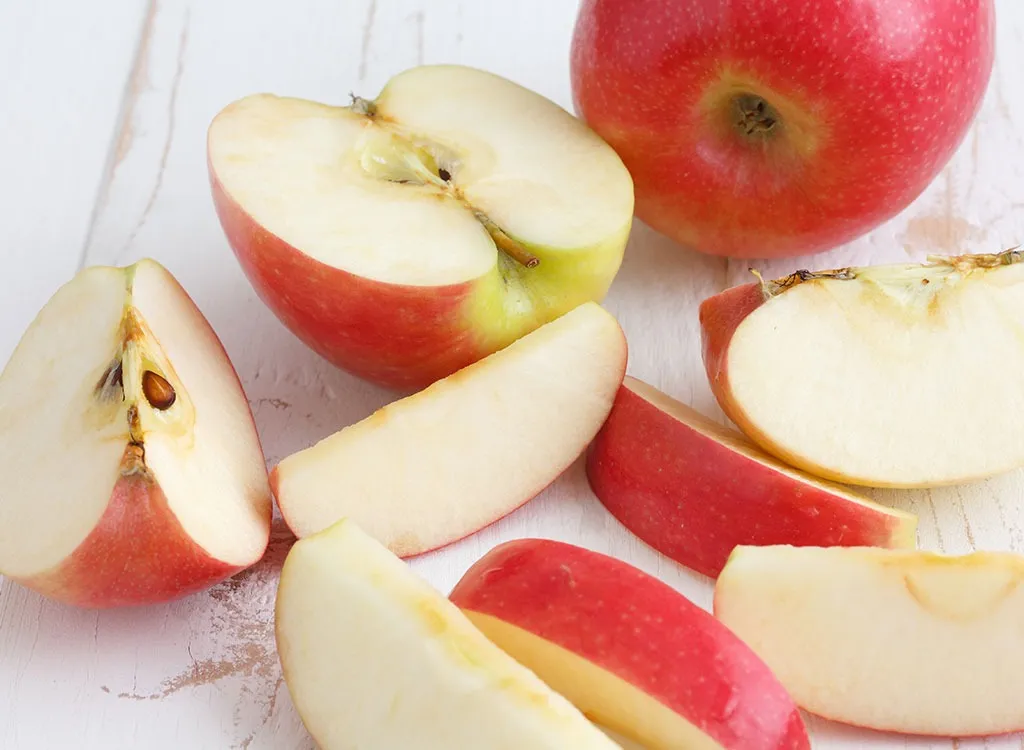

An apple a day keeps the doctor away—but not if it’s conventional! Number five on the 2020 Dirty Dozen list, apples are one of the most highly contaminated fruits on the market today.
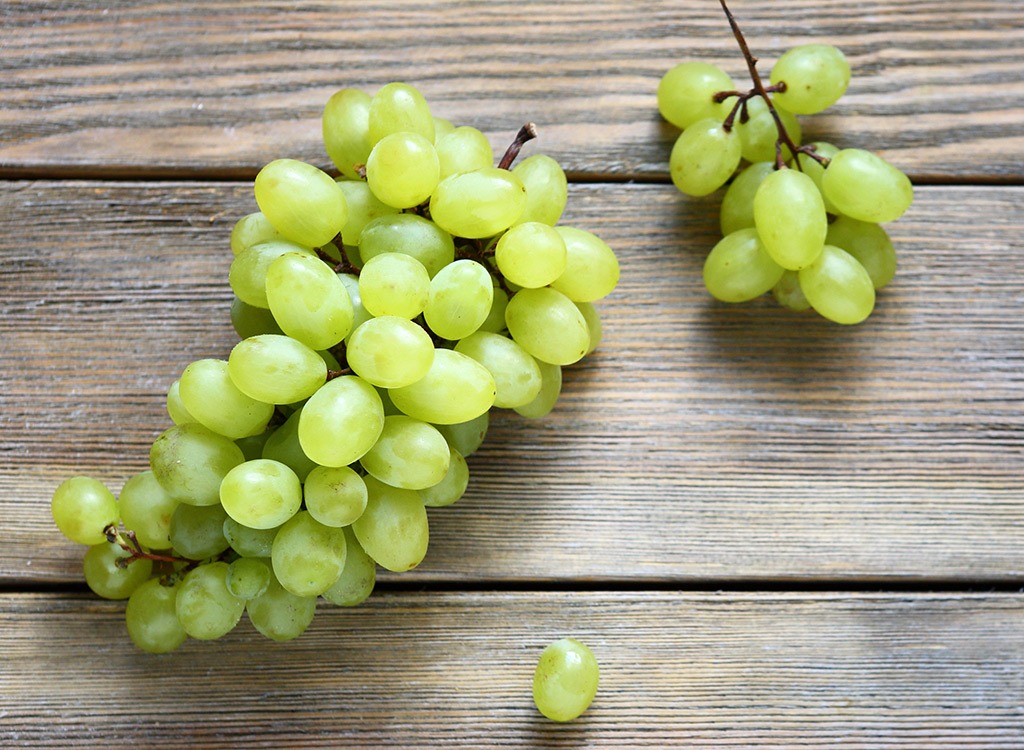

Go for organic grapes whenever you can; this highly contaminated fruit clocked in sixth place on the 2020 Dirty Dozen.


They lag a bit behind their smooth cousins, but soft summer peaches came in seventh place in this year’s most contaminated list. Organic is where it’s at.
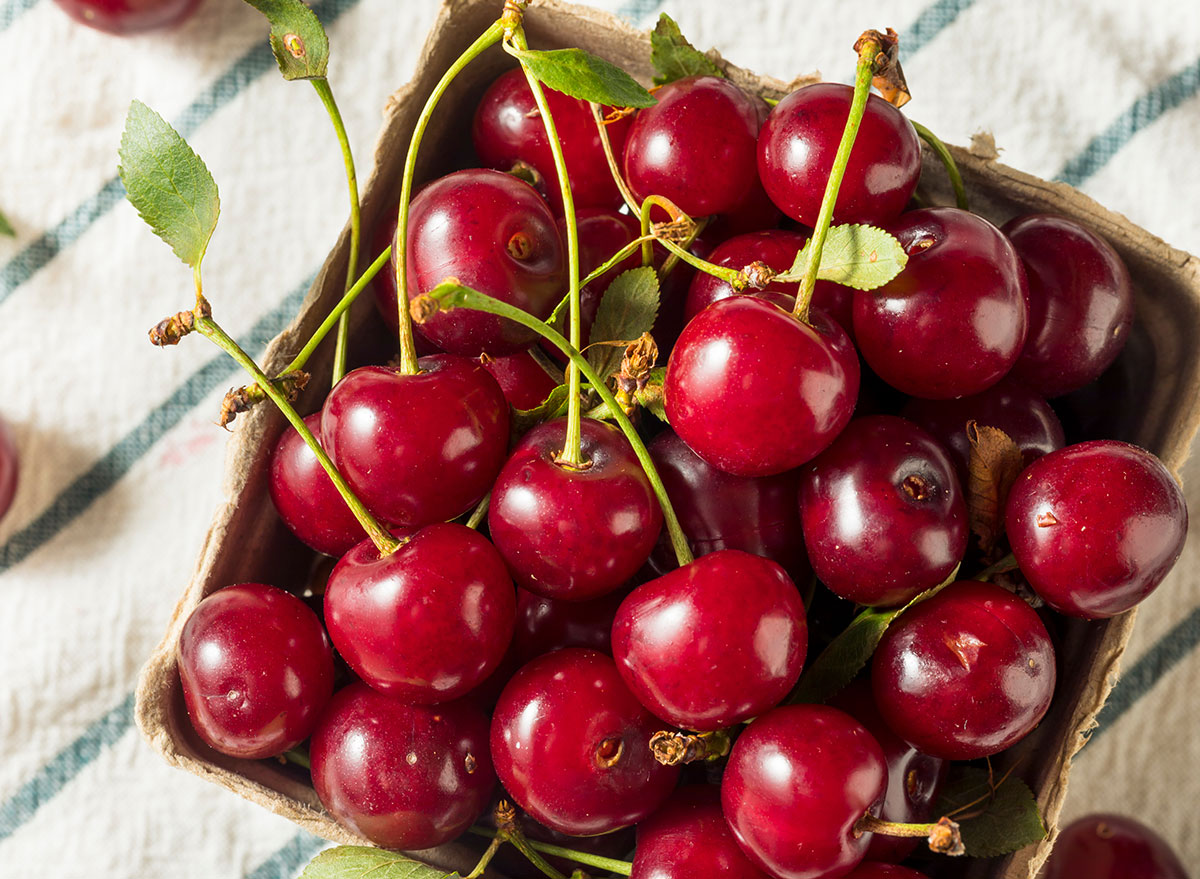

Cherries are yet another fruit found to be highly contaminated. Go for organic fresh and dried cherries to avoid contamination.


Pears are also highly contaminated, so choose organic whenever you can. And don’t think you’re helping matters by choosing canned pears—we’ll get to that in a second.
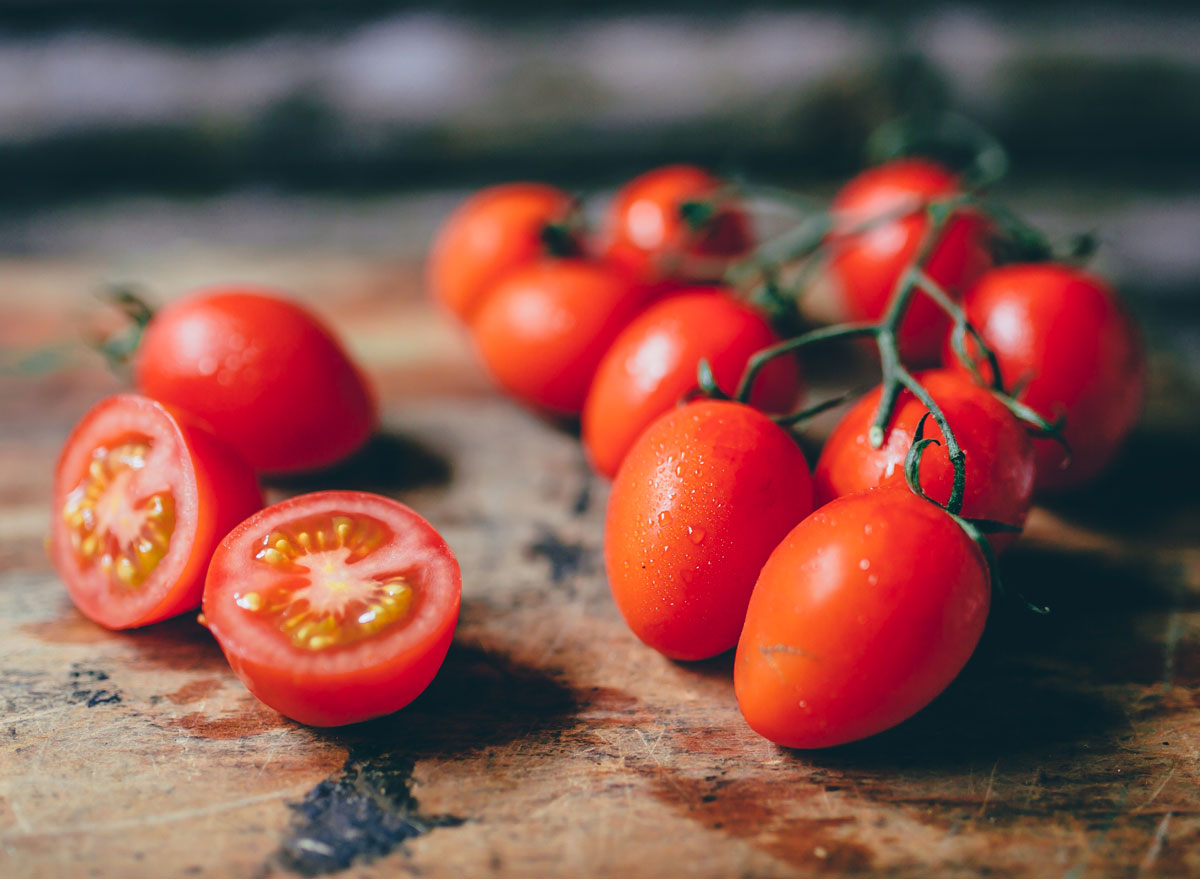

Tomatoes are one of America’s favorite foods. Rich in lycopene and vitamins, they’re excellent for your health, as long as you choose organic.
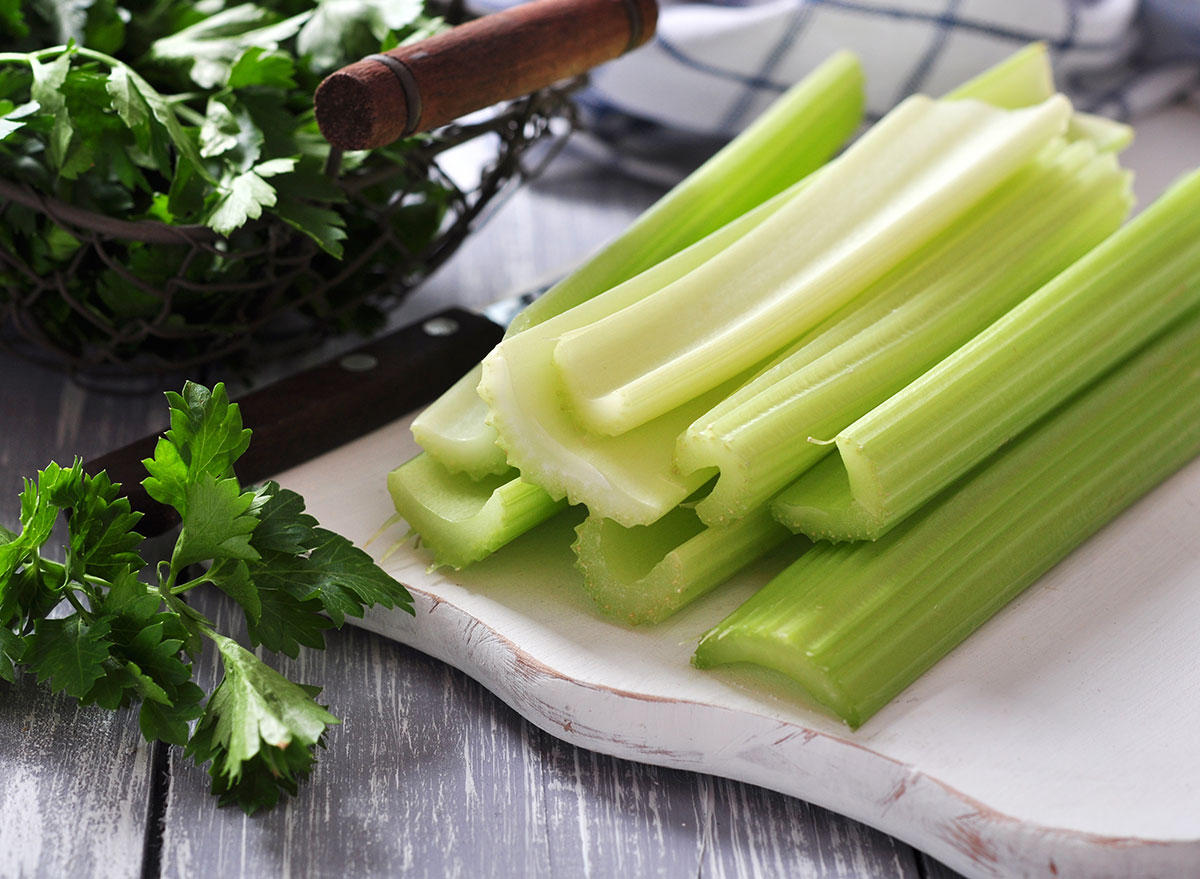

Celery is rich in fiber and low in calories, which might make it seem like the perfect healthy snack. In reality, it’s in eleventh place in 2020’s Dirty Dozen, so you’ll want to opt for organic whenever possible.
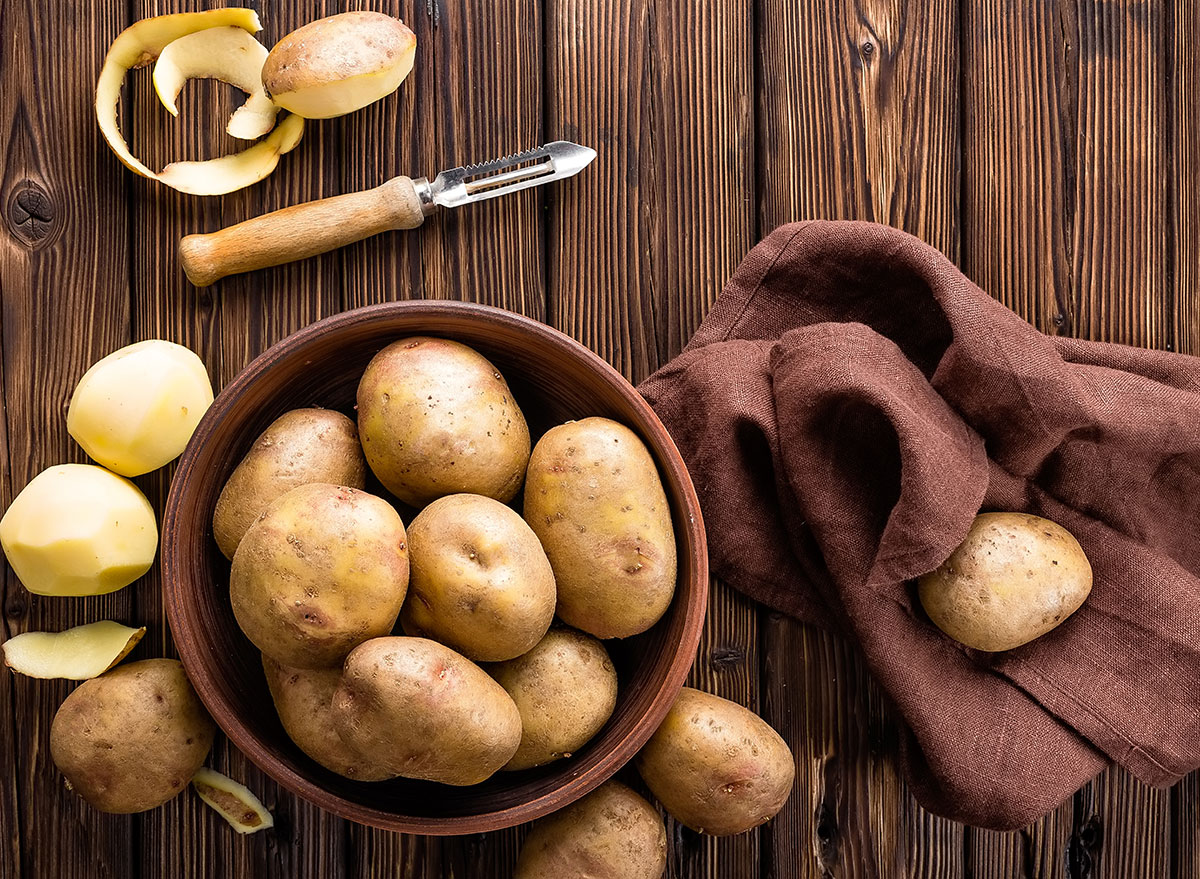

Potatoes are fairly starchy and are often fried, so they’re not always the healthiest choice anyway. But if you are going to serve them, be sure to choose organic; they’re fairly heavily contaminated. And if you’re looking for other, healthier ways to cook up spuds, be sure to check out these 13 Creative Ways to Use Potatoes.
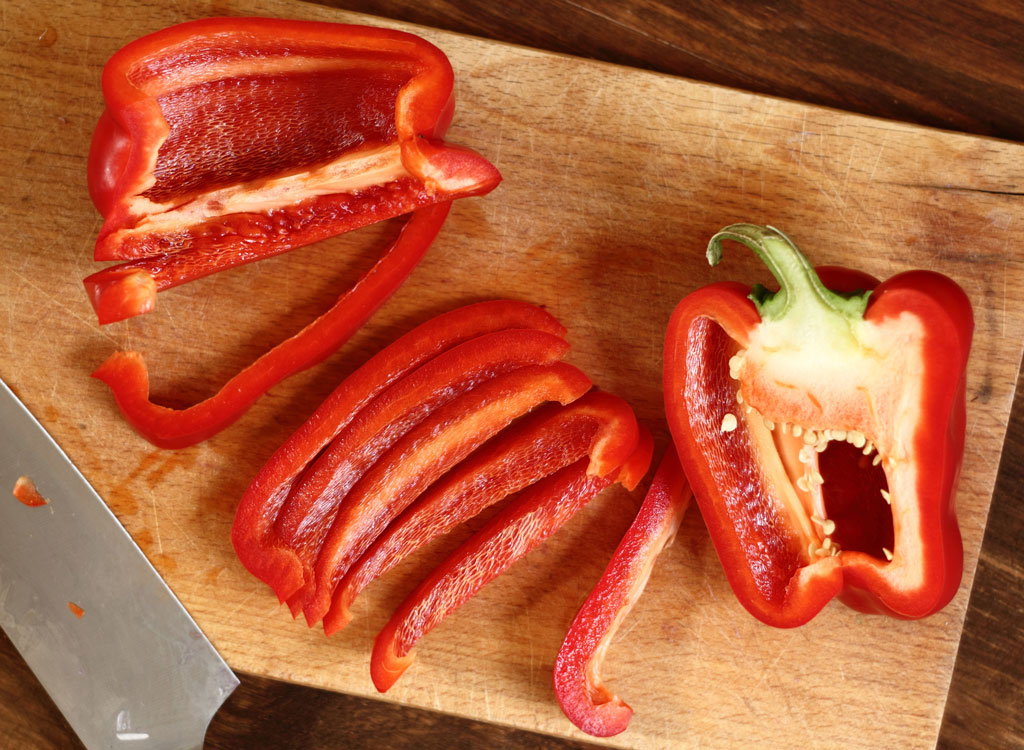

Bell peppers, especially colorful varieties, are rich in vitamins. But while they weren’t contaminated enough to make it onto the Dirty Dozen, they did come in at thirteenth place. Organic peppers are best, in this case.


Cucumbers are increasingly popular among foodies, especially when fermented into gut-healthy pickles. But be sure to choose organic cukes: EWG ranked cucumbers 16th in its list of most contaminated fruits and vegetables.


Blueberries are a darling of the health food world, as one of the richest sources of antioxidants out there. But they’re also one of the most contaminated, taking 17th place in the EWG’s ratings. Choose organic blueberries to ensure you’re reaping only health benefits from these little fruits.


Another antioxidant-rich berry, raspberries are also heavily contaminated, ranking number 22 on the EWG’s list of most contaminated fruits and vegetables.
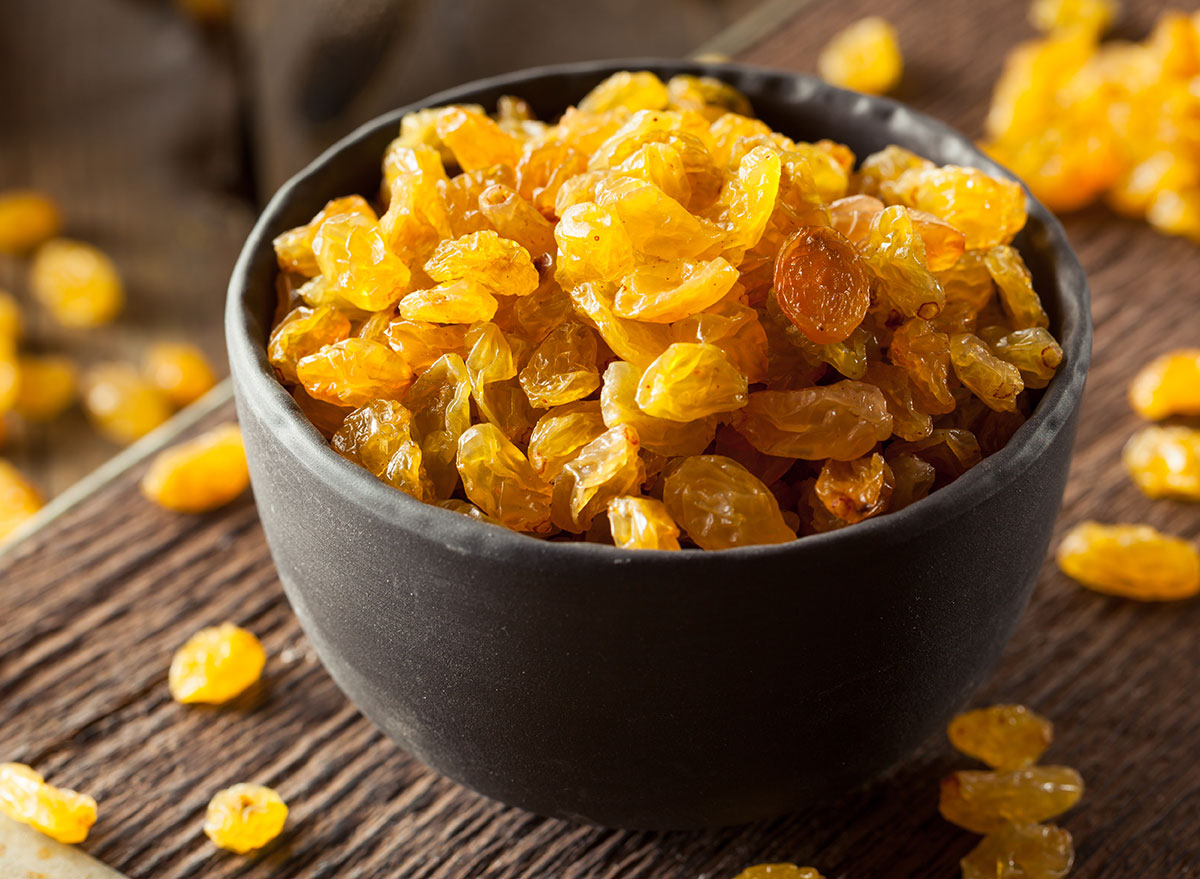

Raisins didn’t make it onto the Dirty Dozen list at all, as the EWG only classes fresh fruits and vegetables. But in 2020, the organization was shocked to find that raisins are actually far more contaminated even than strawberries. And what’s more, even organic varieties had trace residues of some pesticides. Choose other dried fruits, like prunes or dried organic cherries, to avoid contamination and carcinogenic compounds.
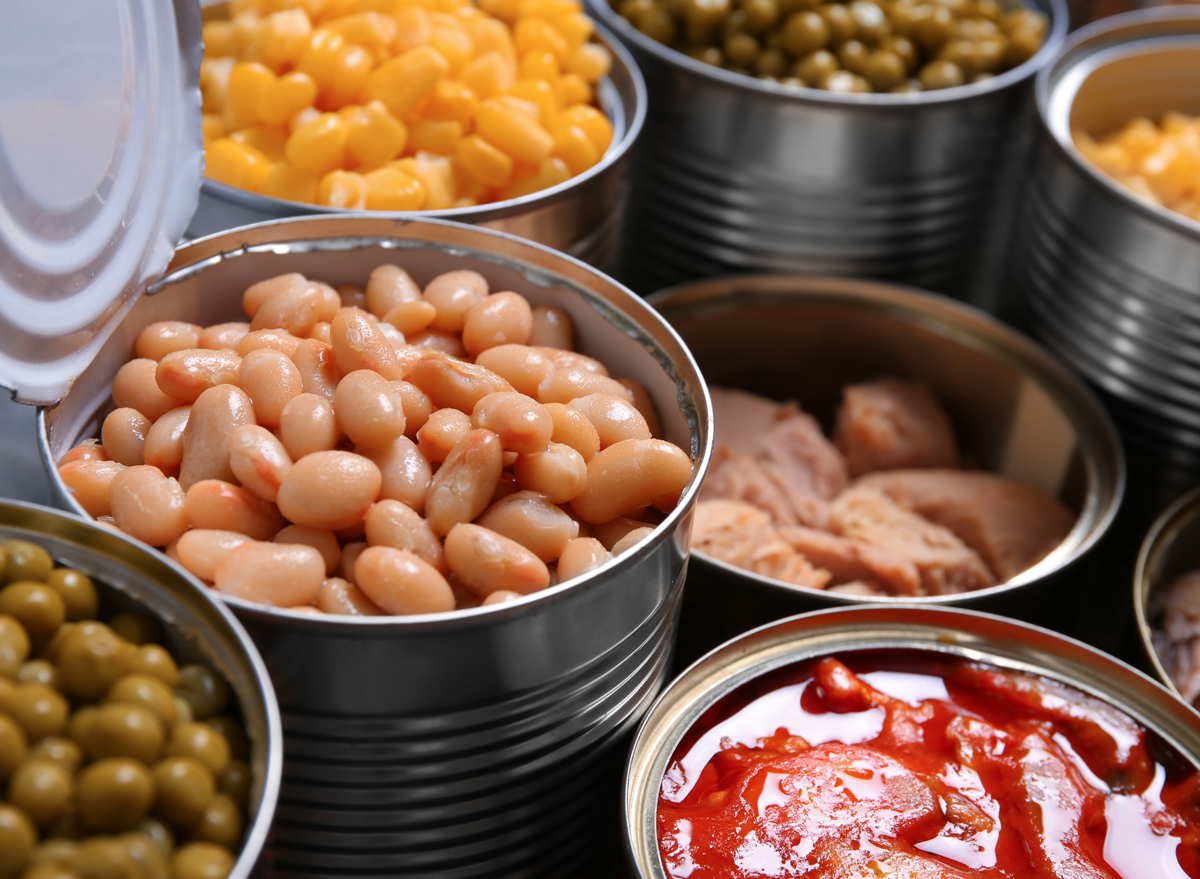

Bisphenol or BPA is a product used in the lining of some cans that has been found to increase the risk of metabolic disorders and some cancers, according to the Endocrine Society.
“While it has been removed from most baby products, plastic water bottles and most toys, this chemical is still present in many canned and plastic-wrapped foods,” says Steve Vasilev MD, gynecologic oncologist and medical director of Integrative Gynecologic Oncology at Providence Saint John’s Health Center and Professor at John Wayne Cancer Institute in Santa Monica, CA.
“Leading companies,” he says, “have recently added labels to their foods to let consumers know their products are BPA-free.” But if you don’t see that label on your favorite canned goods, chances are, the chemical is lingering in your food.
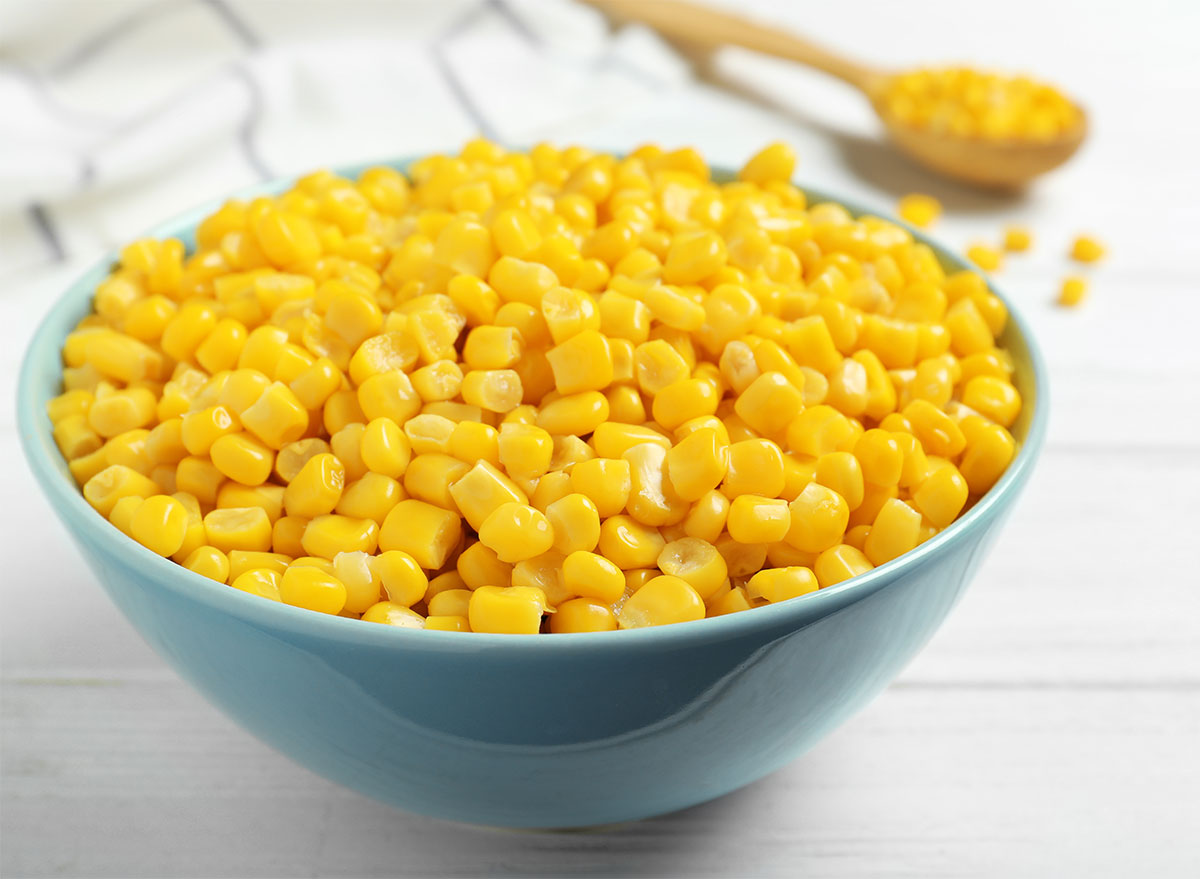

Canned corn is definitely a culprit containing BPA, and some brands even add sugar to increase the natural sweetness of the grain. Add to this that a small amount of sweet corn in the U.S. is produced from GMO seeds, and it might be best to take a miss, opting for fresh or frozen corn whenever you can.
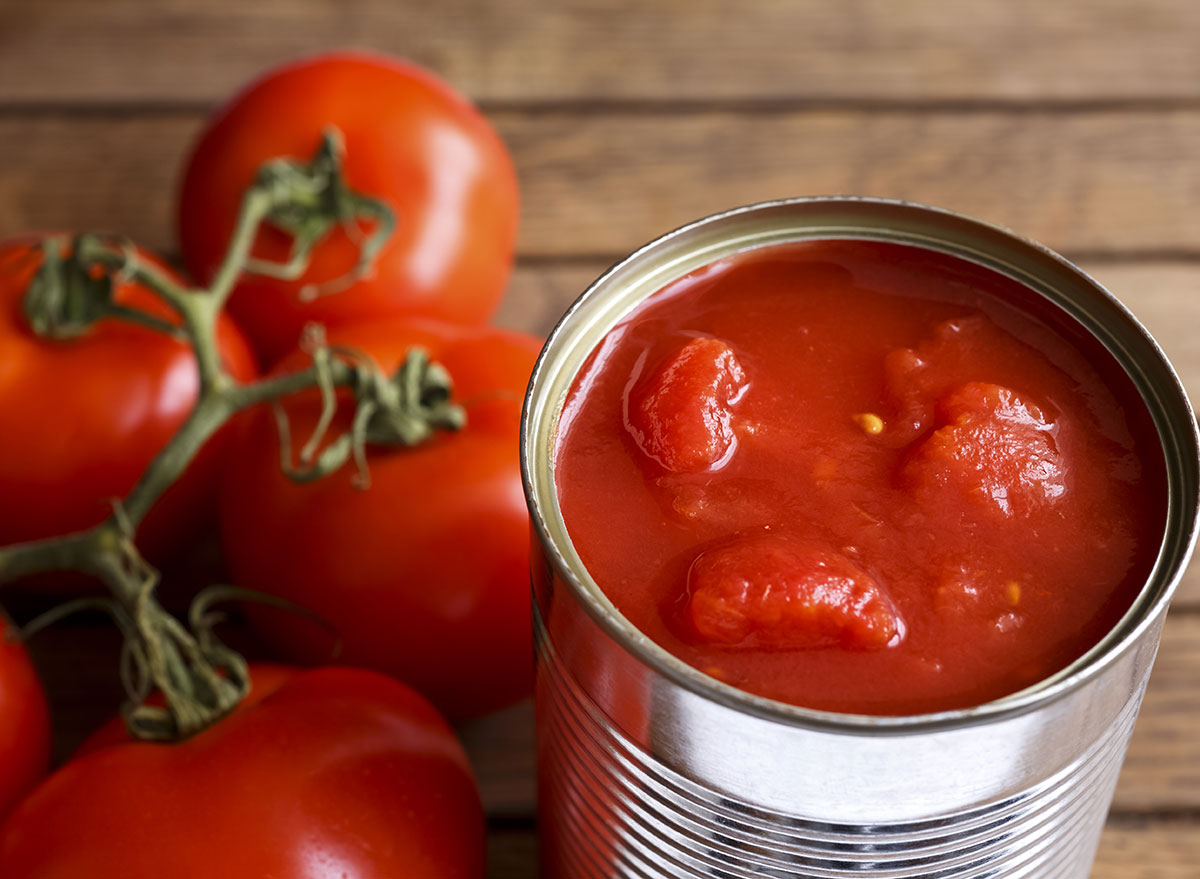

Not only do you risk contamination with pesticides when buying American-grown canned tomatoes, but the acidic nature of this fruit can actually make BPA leech from the lining of the can, contaminating it further. Opt instead for tomatoes in glass jars, or make sauces using fresh, organic tomatoes.
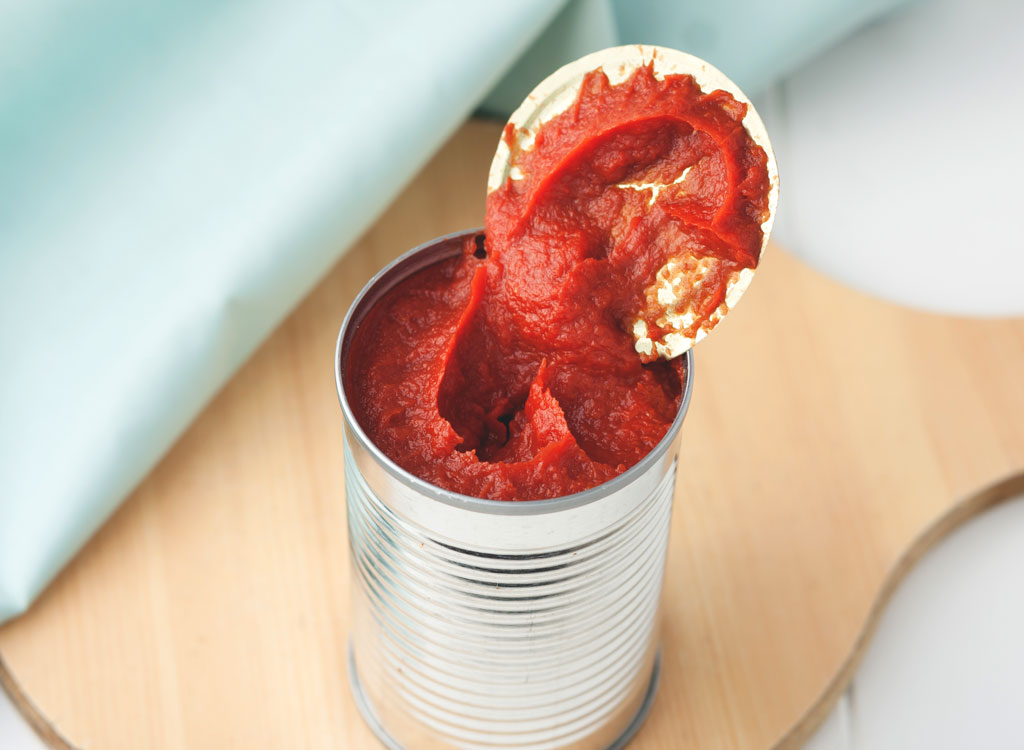

The same problems plaguing canned tomatoes also make canned tomato paste an issue. Some brands package their tomato paste in cardboard, which is a far better option.
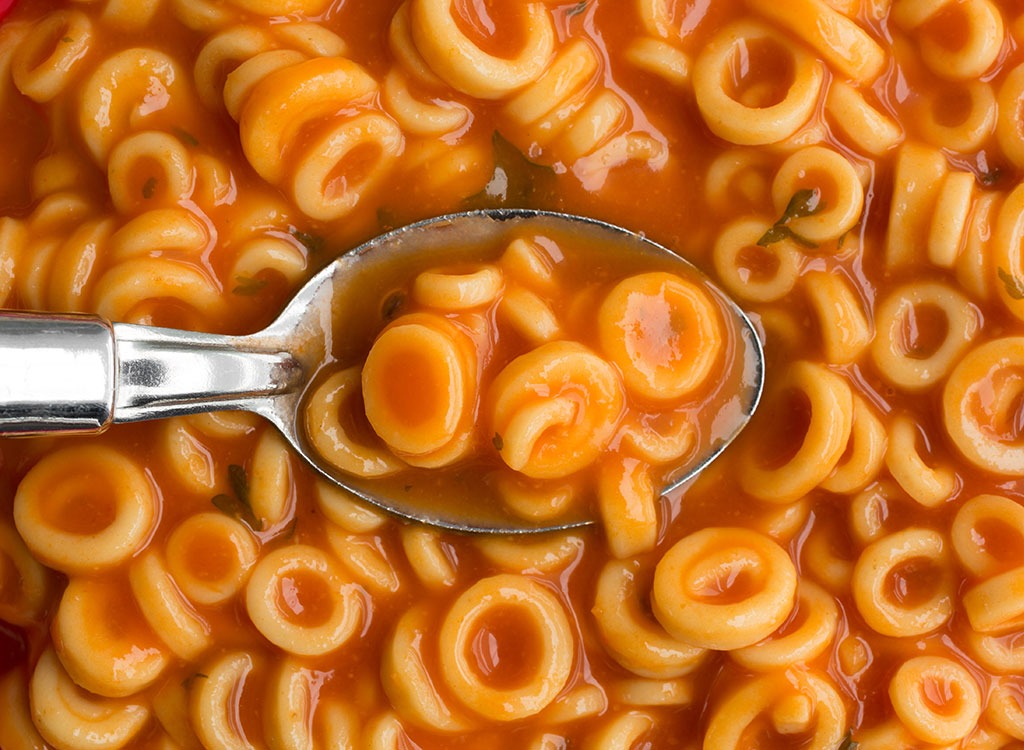

Canned pastas in tomato sauce have a host of problems, ranging from BPA to the possibility of added sugars and bromated flours. Best to make your own pasta and choose a no-sugar sauce in a glass jar (or make your own!)
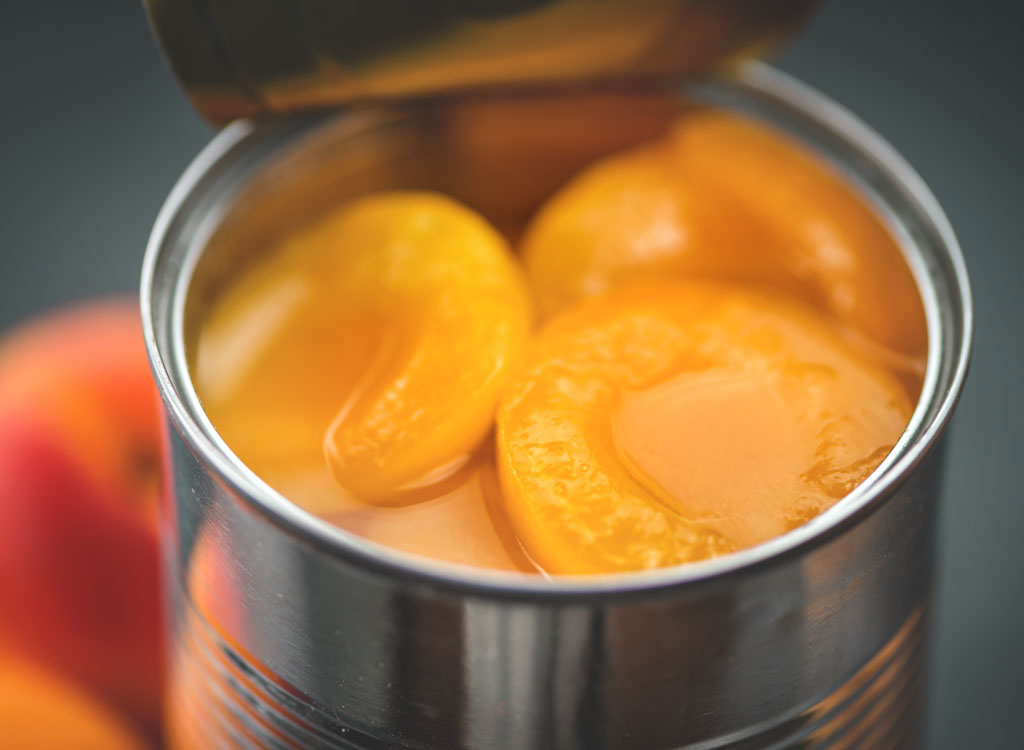

Canned fruit doesn’t just pose a problem with regards to the possibility of BPA contamination. It also runs the risk of containing added sugars and, if it’s not an organic brand, being contaminated with cancer-causing pesticides and herbicides.
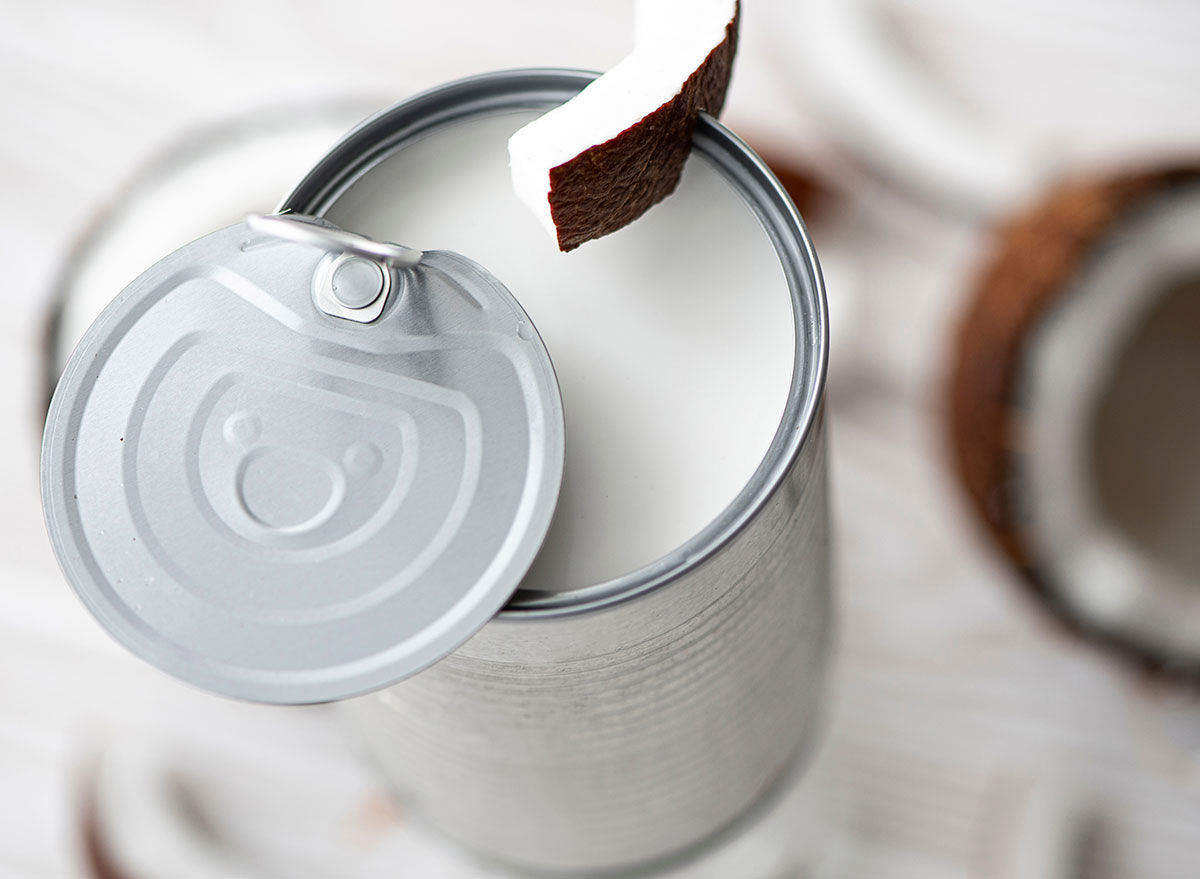

Coconut milk is a fantastic dairy substitute, and since (as we’ll address in just a moment), dairy can be problematic, it’s a great pantry staple. Instead of opting for canned coconut milk, look for brands packaged in cardboard boxes.
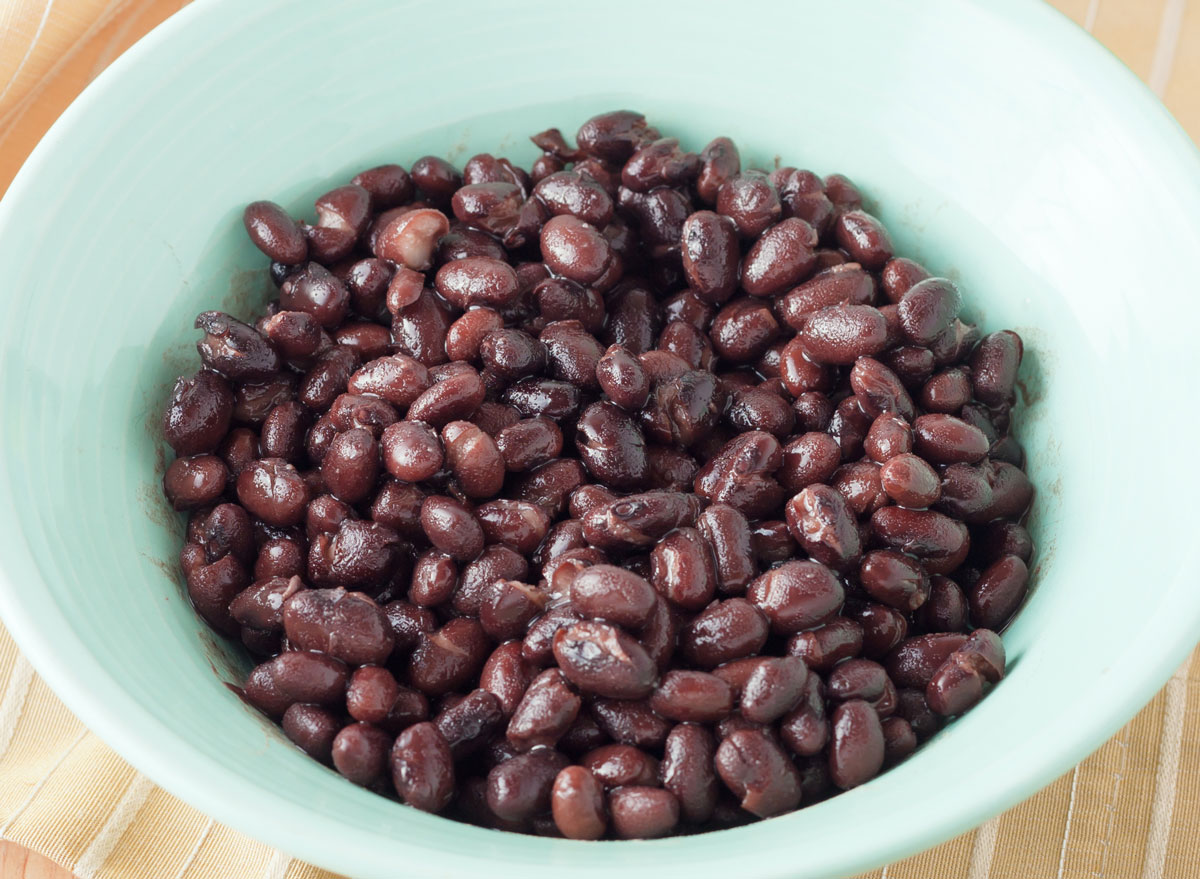

Canned beans are the ultimate convenience food, but they can also be a nightmare when it comes to BPA contamination. Buy dried beans to soak and cook yourself, or opt for beans in a glass jar to reap the health benefits of this fiber-rich plant-based protein source.
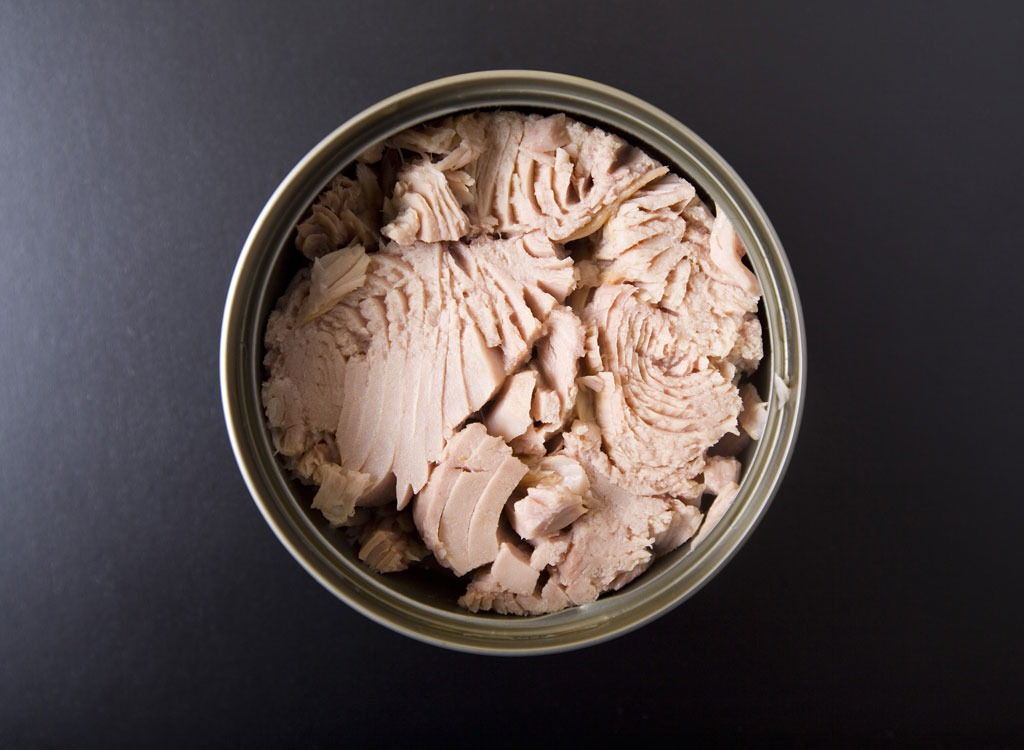

Canned tuna isn’t just problematic with regards to BPA; it can also contribute to mercury poisoning, and often, it’s not particularly environmentally conscious. Choose sustainable brands packaged in BPA-free packets, or opt instead for smaller, more eco-friendly fish like sardines or anchovies, which have the added bonus of being rich in anti-inflammatory omega-3s—all the better to help your body reduce the risk of developing cancer.


Broth is a great pantry staple, but buying it in a can negates many of its benefits. Make your own from chicken bones, or buy in a carton to keep BPA at bay.
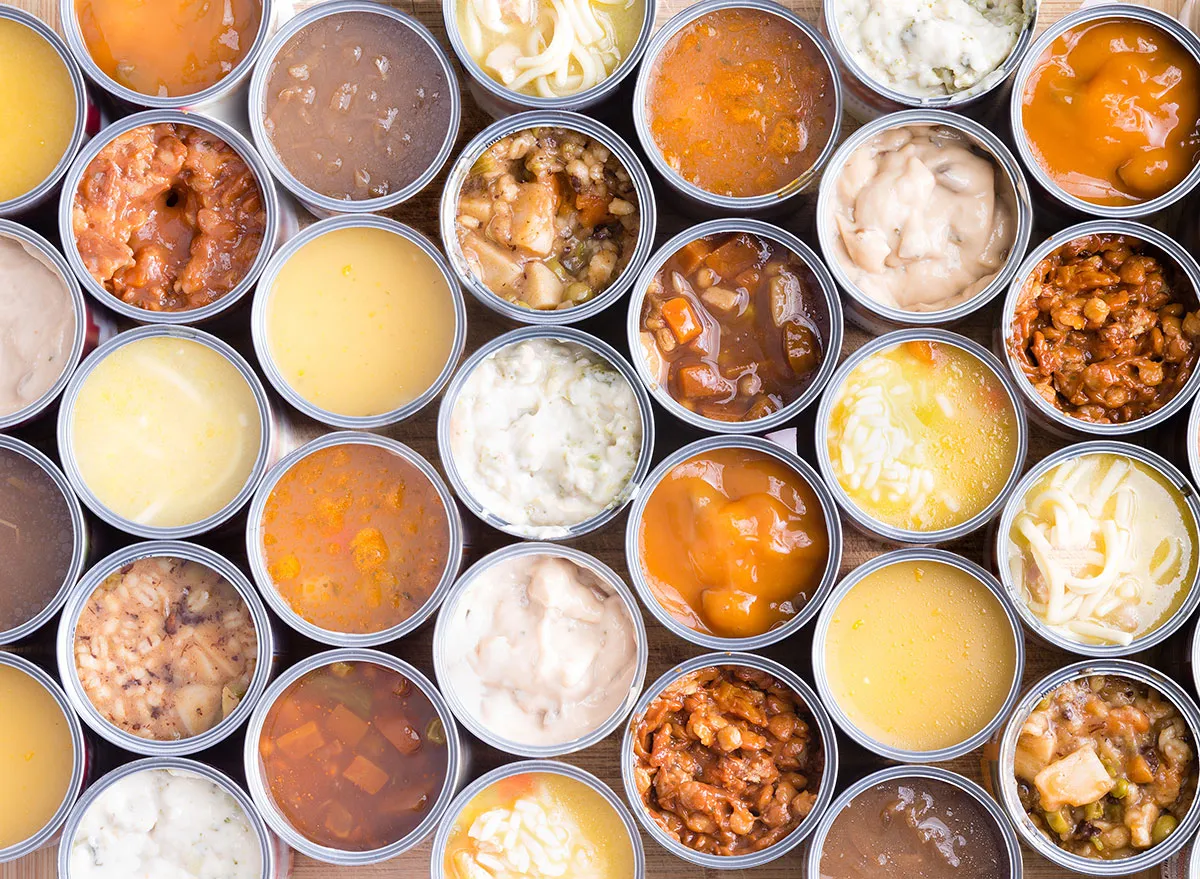

Ultra-processed canned soups are far from the best choice for a number of reasons, including added sugars, stabilizers, and starches. Pick up a few cartons of organic bone broth, toss in a few veggies and some whole grains, and you can easily make your very own soups at home in almost the time it takes to heat up a can of the condensed stuff.
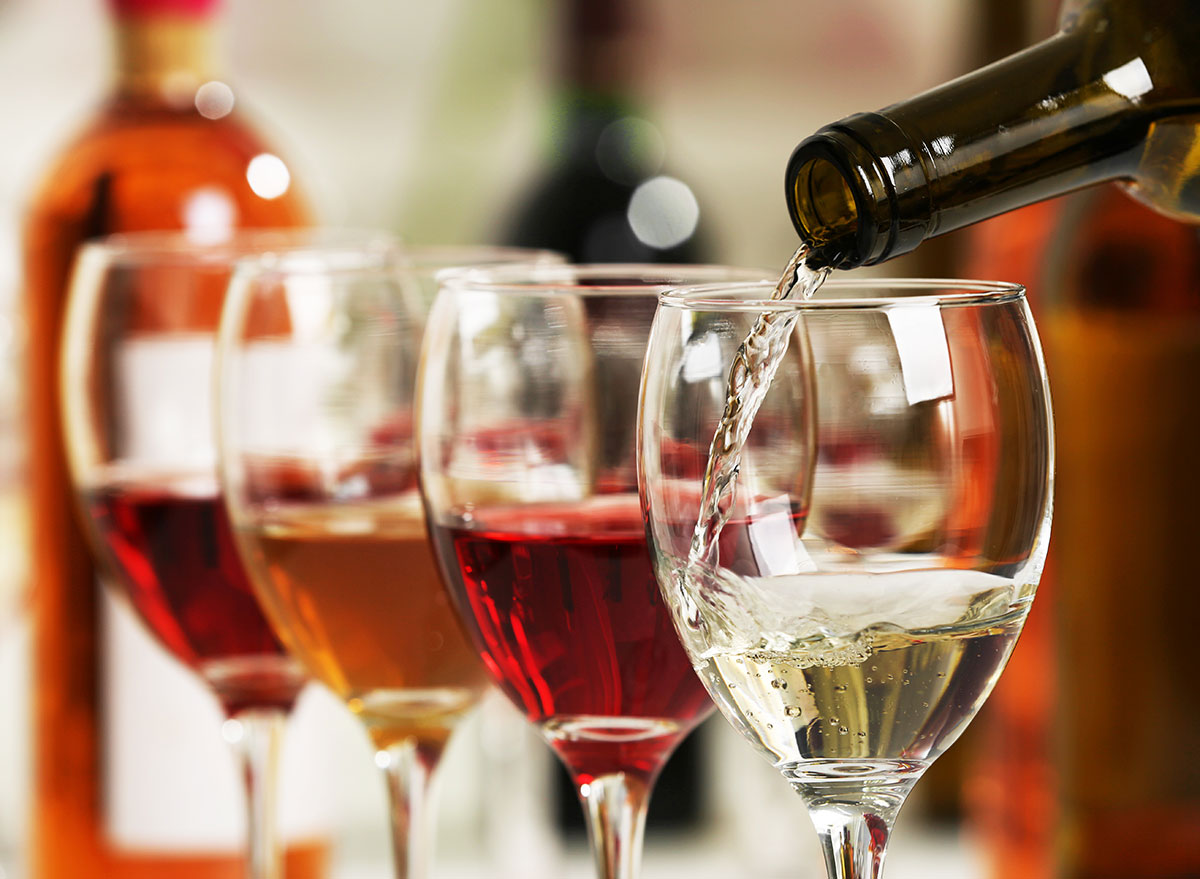

After tobacco use, alcohol abuse is the leading cause of cancer. The World Health Organization has even found that excessive consumption of alcohol is the main cause of several different cancers.
Read more: What Happens To Your Body When You Give Up Alcohol
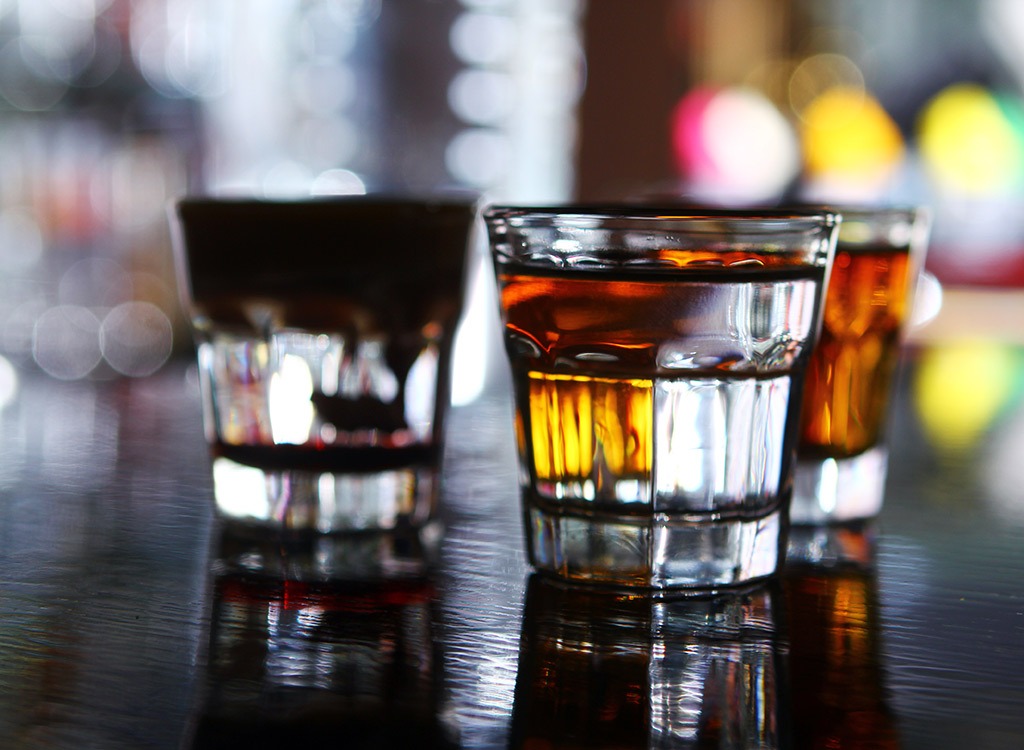

Some would have you believe that alcohol converts to sugar in the body. While this isn’t exactly true, it does disrupt your body’s sugar levels and is also harmful to your cells.
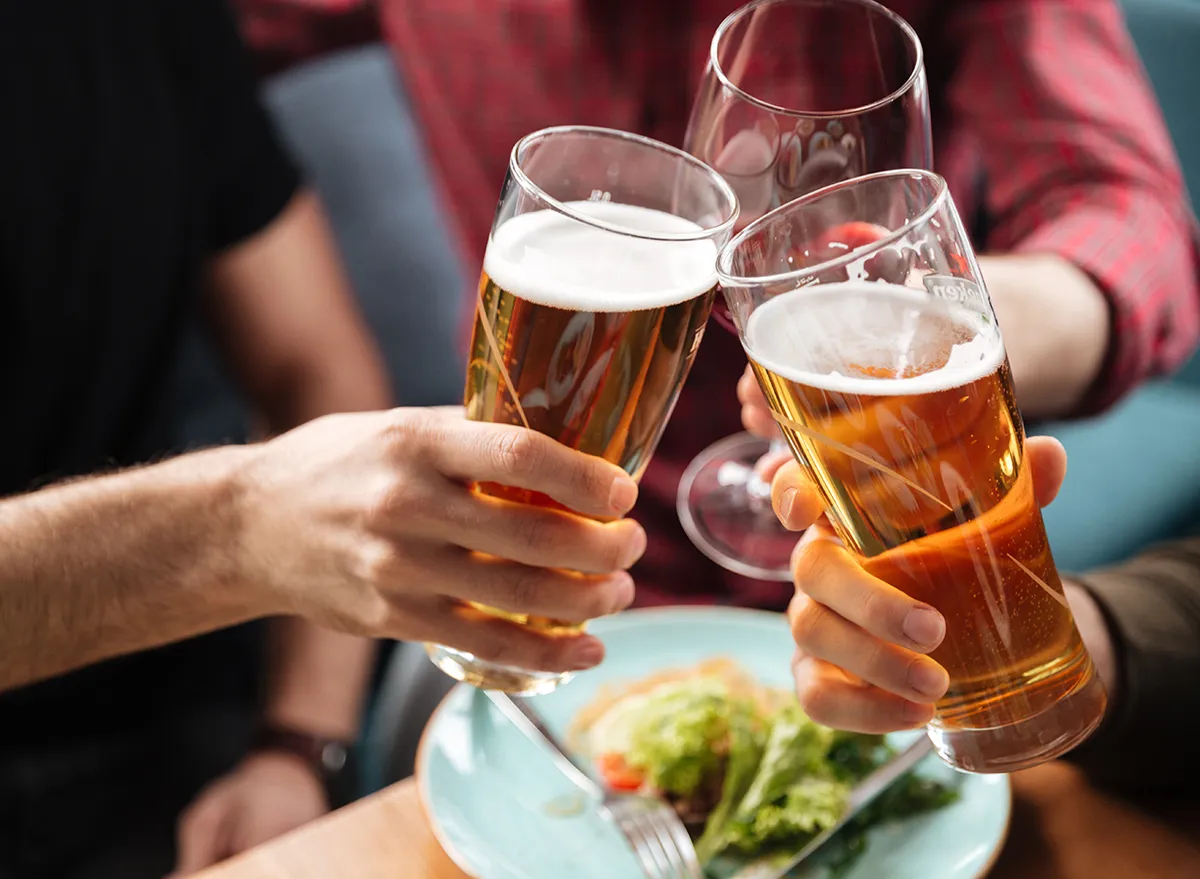

Beer is problematic for a number of reasons, and alcohol is just one of them. Beer is quite calorie-dense and nutrient-poor and can, therefore, contribute to weight gain, which is a risk factor or a number of diseases including cancer.
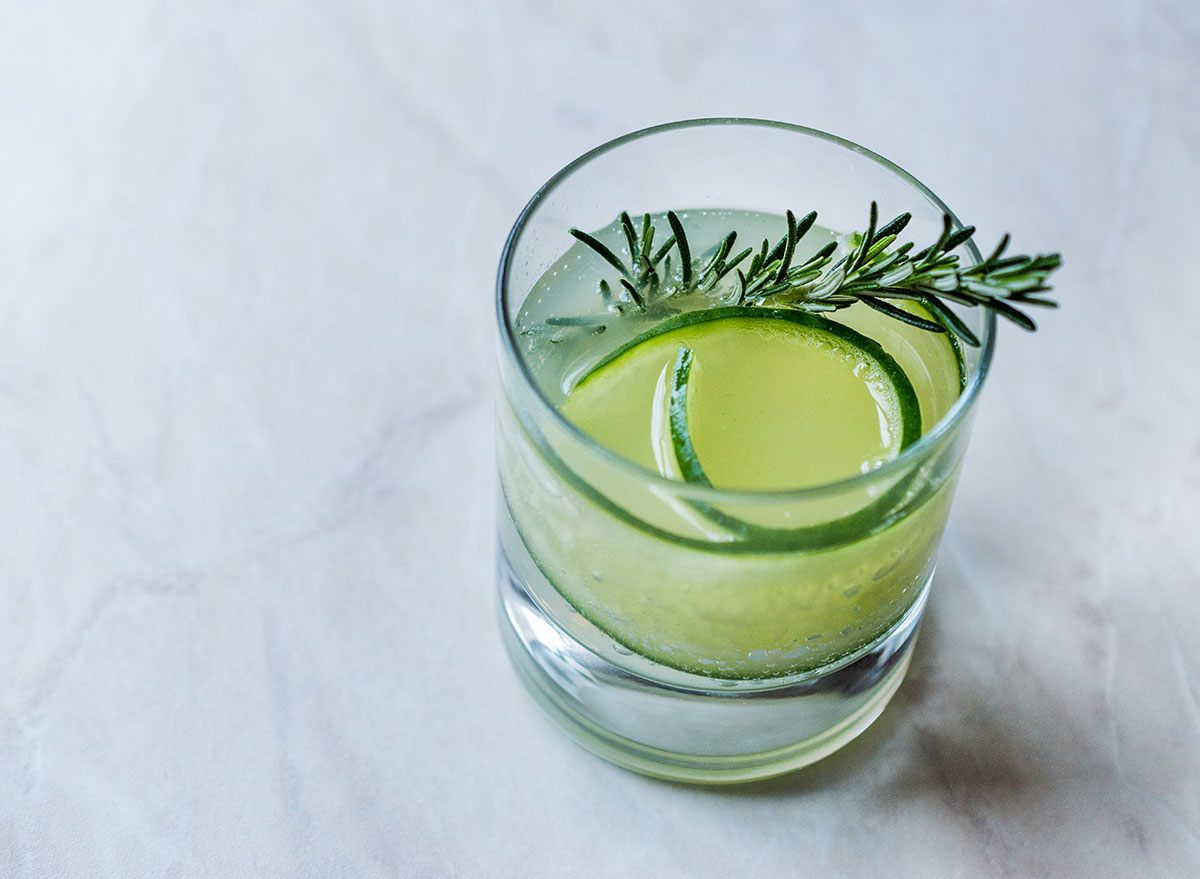

A combination of hard liquor and fruit juice, cocktails are high on our list of cancer-causing compounds. Enjoy in moderation, and opt for less sweet versions whenever you can.
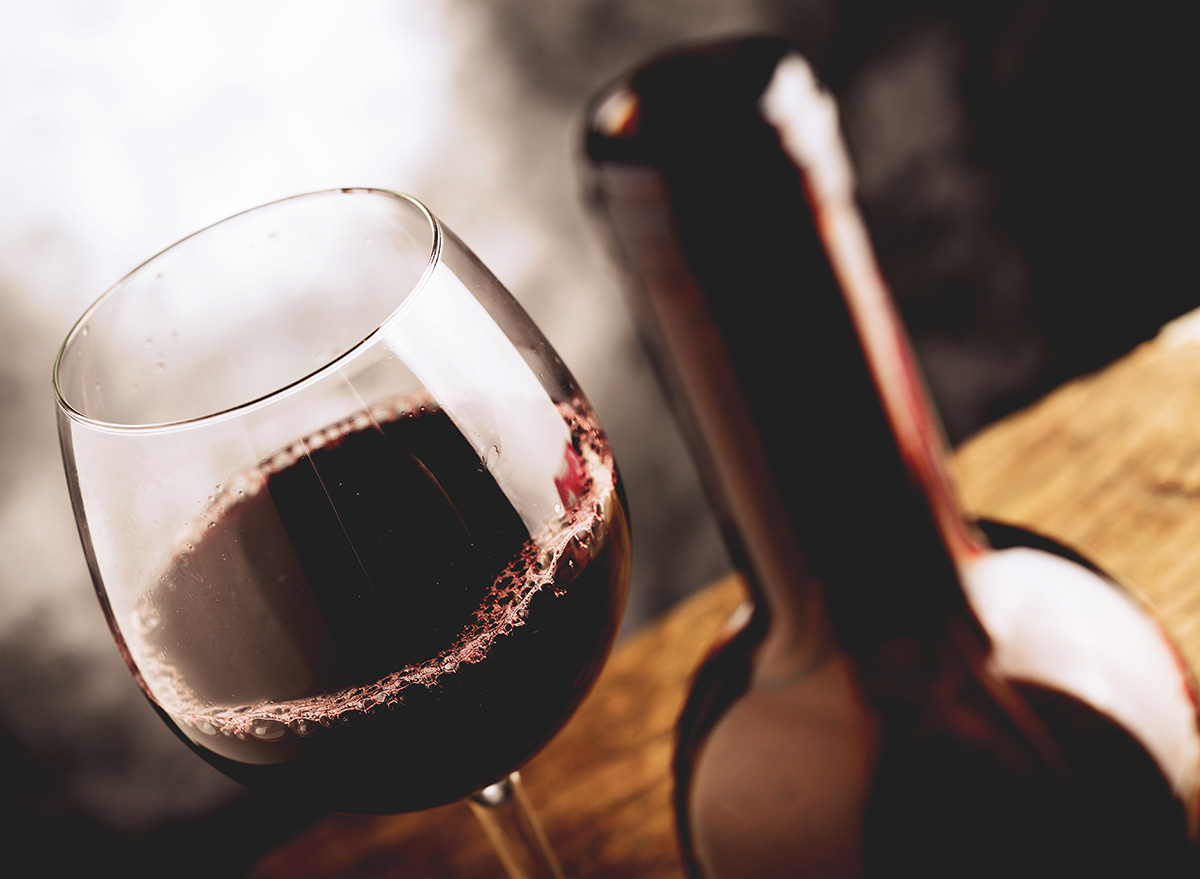

Since grapes are highly contaminated, it comes as perhaps no surprise that wine is as well. If you still want to reap the antioxidant benefits of an occasional glass of red wine, it’s best to opt for an organic version.


Calcium may be great for bone strength, but some studies have found a link between high calcium intake and the development of prostate cancer, notably a study conducted by the Department of Epidemiology at the Harvard School of Public Health.
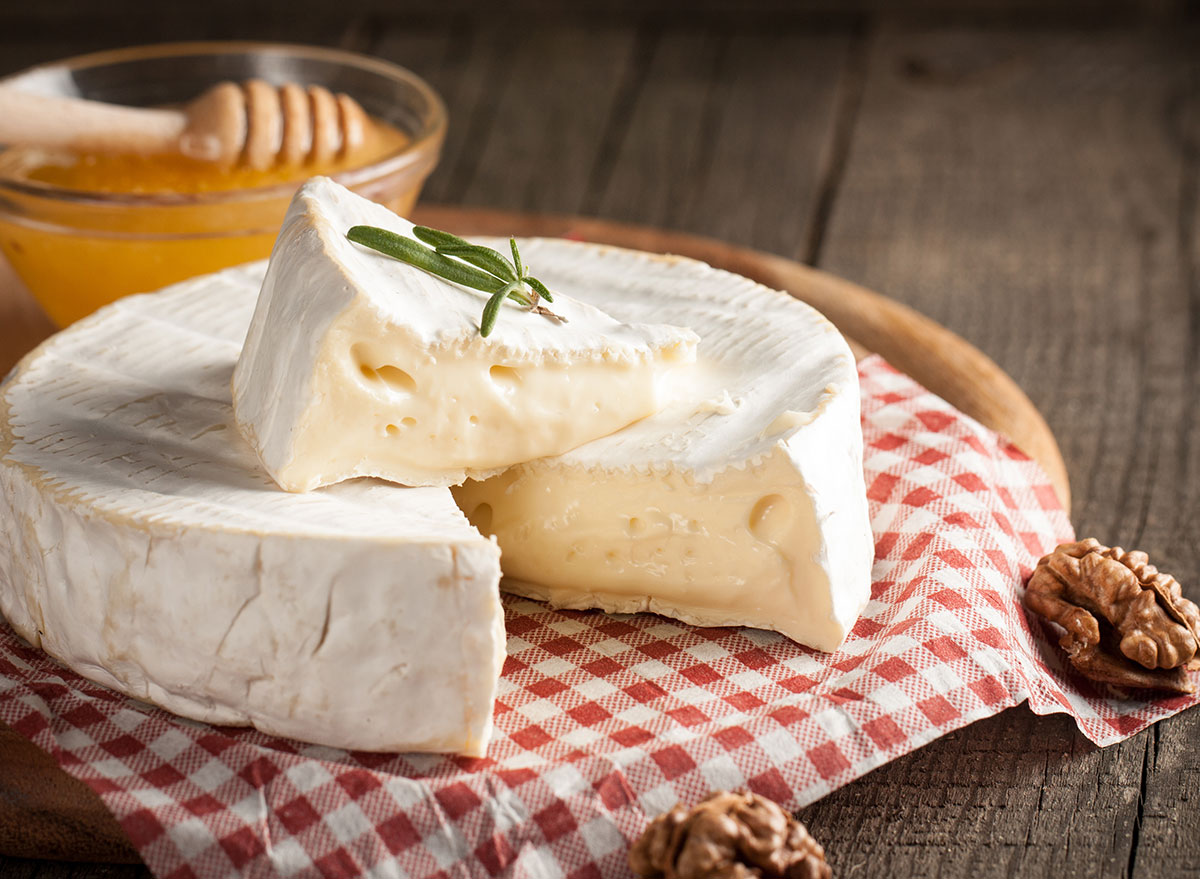

One 2017 study funded by the National Cancer Institute linked consumption of cheese to an increased probability of breast cancer. A 53 percent increase in the probability of developing this cancer was found in the women who ate the most cheese, specifically American, cheddar, and cream cheeses.
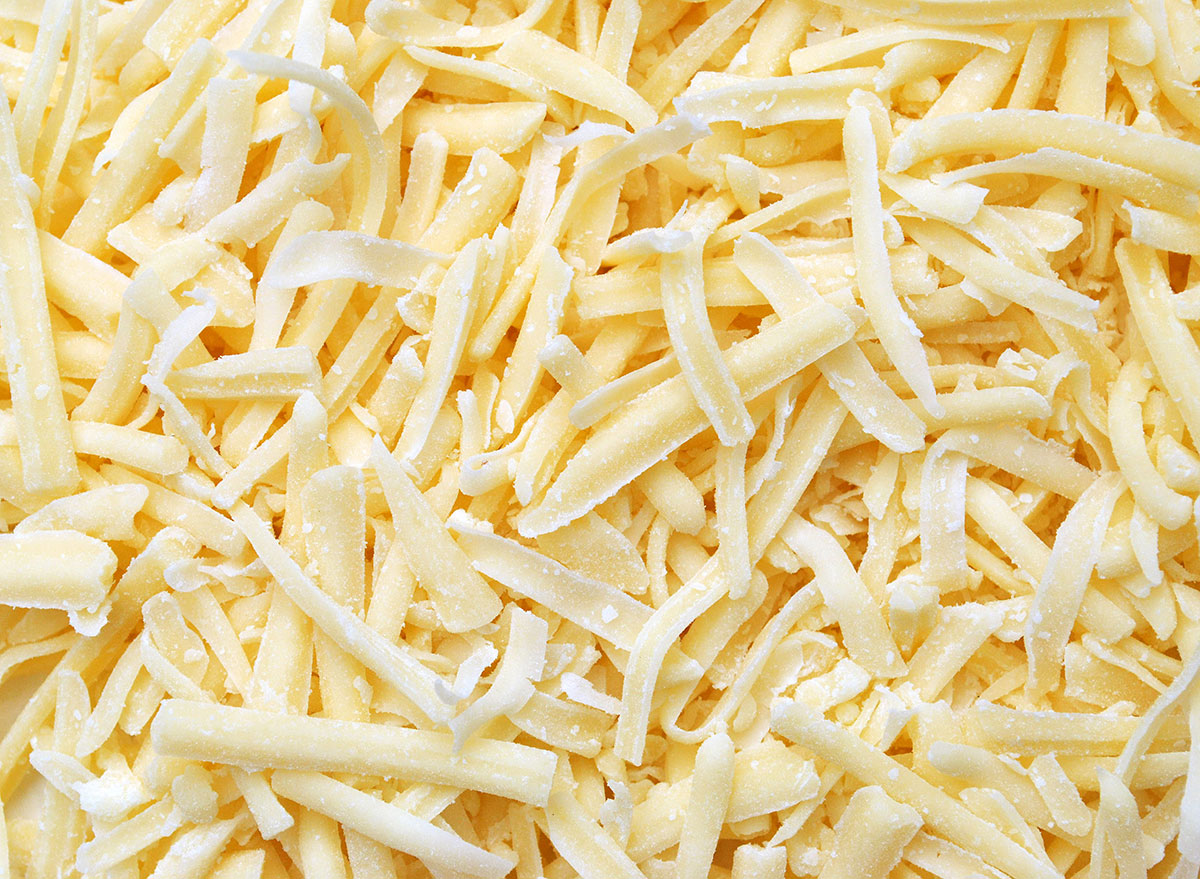

Highly processed cheeses like American cheese are perhaps the worst offenders. Not only are they processed and often filled with hydrogenated oils, some brands also contain sugar. No thanks!
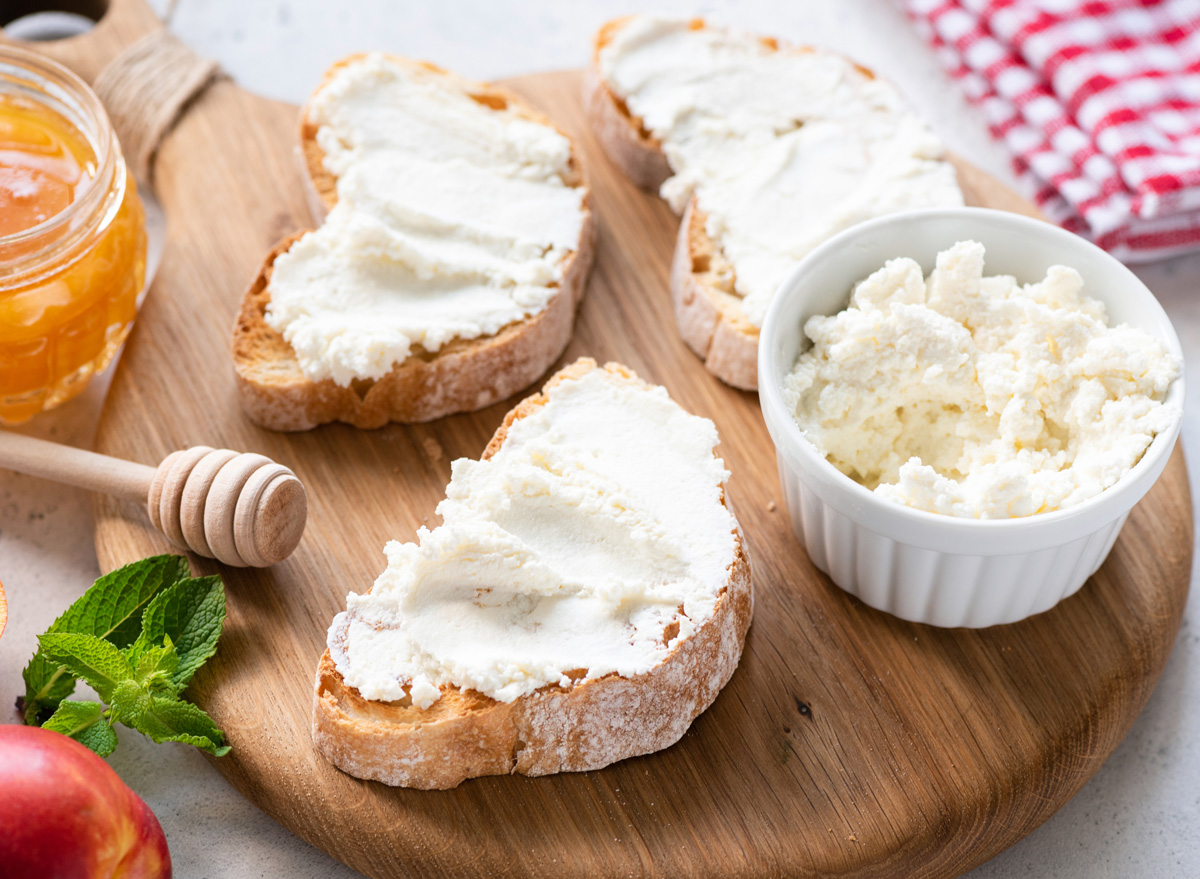

Low-fat dairy might seem like a healthier option, but in the case of most low-fat foods, another substance has to be added to account for the lower fat content. More often than not, it’s sugar.
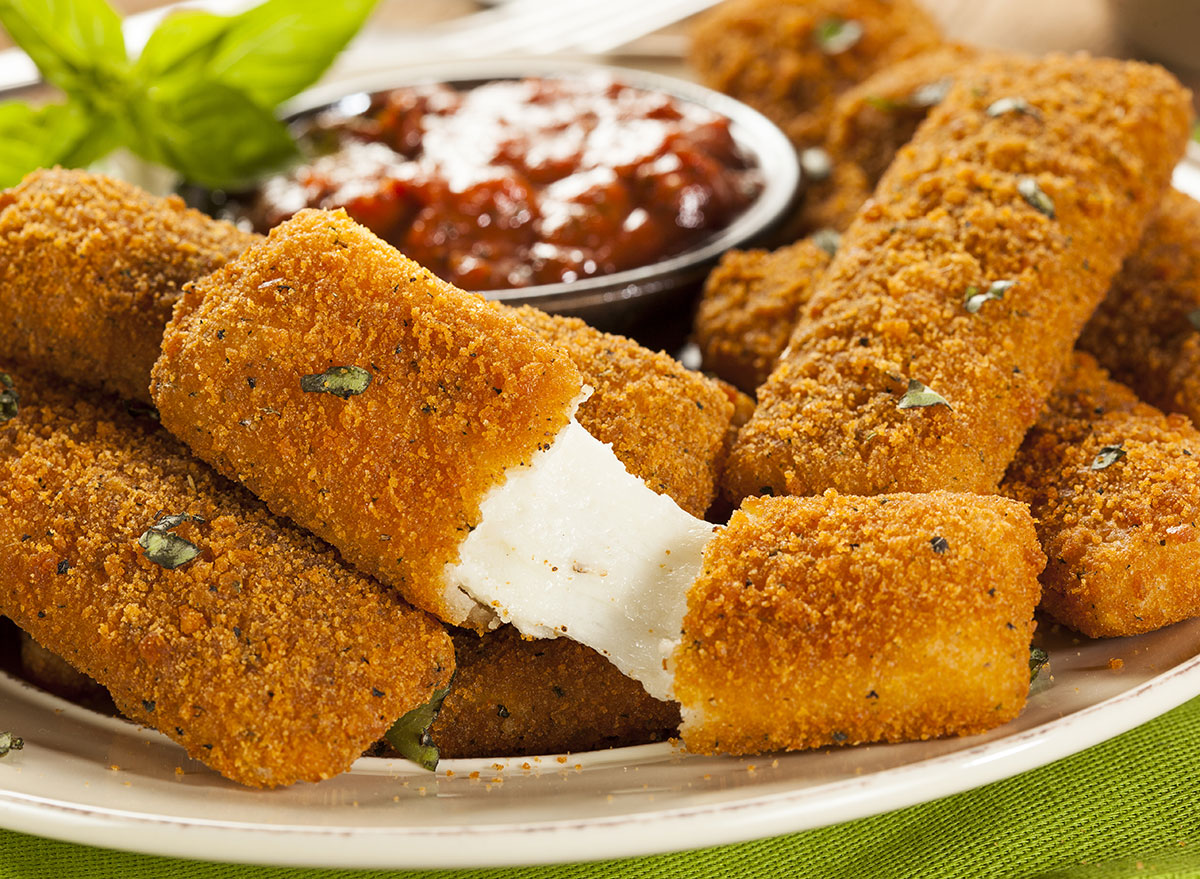

Coated in breadcrumbs and deep-fried, mozzarella sticks boast three strikes on the carcinogenic food scale… and they get a fourth if you dip them in sweet marinara sauce.


Yogurt has been painted as a health food, but most yogurts aren’t much better than a dessert. Fruit-flavored yogurts are full of added sugars. So if you’re going to enjoy yogurt, make it a plain, full-fat brand and serve it with fresh berries instead.


Ice cream is full of sugar, and in the case of many store brands, it’s also full of unhealthy stabilizers and emulsifiers. Make your own “nice” cream at home by putting frozen bananas and other frozen fruit through a high-speed blender. It will make for a much healthier treat.


High in sugar and in dairy, milkshakes are far from the best option for a healthful, anti-carcinogenic diet. If you want a sweet treat, blend a frozen banana with some anti-microbial raw honey and a scoop of natural cocoa powder.
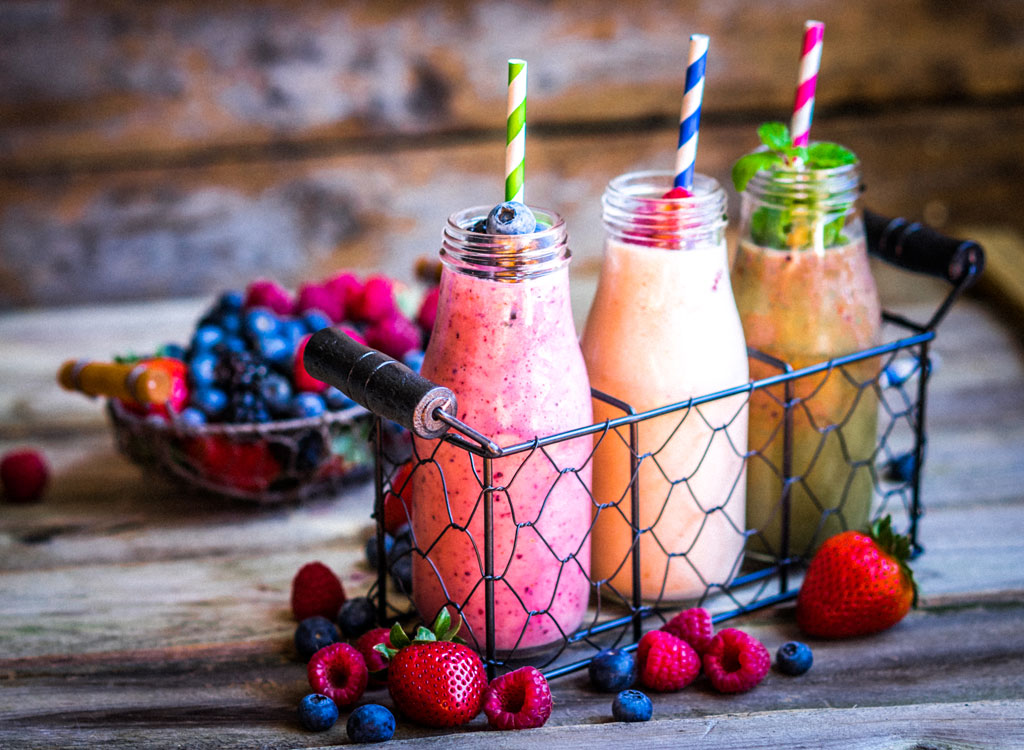

Store-bought smoothies are often filled with too much sugar and milk or yogurt. Make your own smoothie, using coconut milk or a frozen banana to give it a thicker, richer texture that’s overall much better for you.


Cocoa does contain some natural antioxidants, but they are largely negated by the milk and sugar found in milk chocolate. Curb your chocolate cravings by digging into a small square of dark chocolate instead.
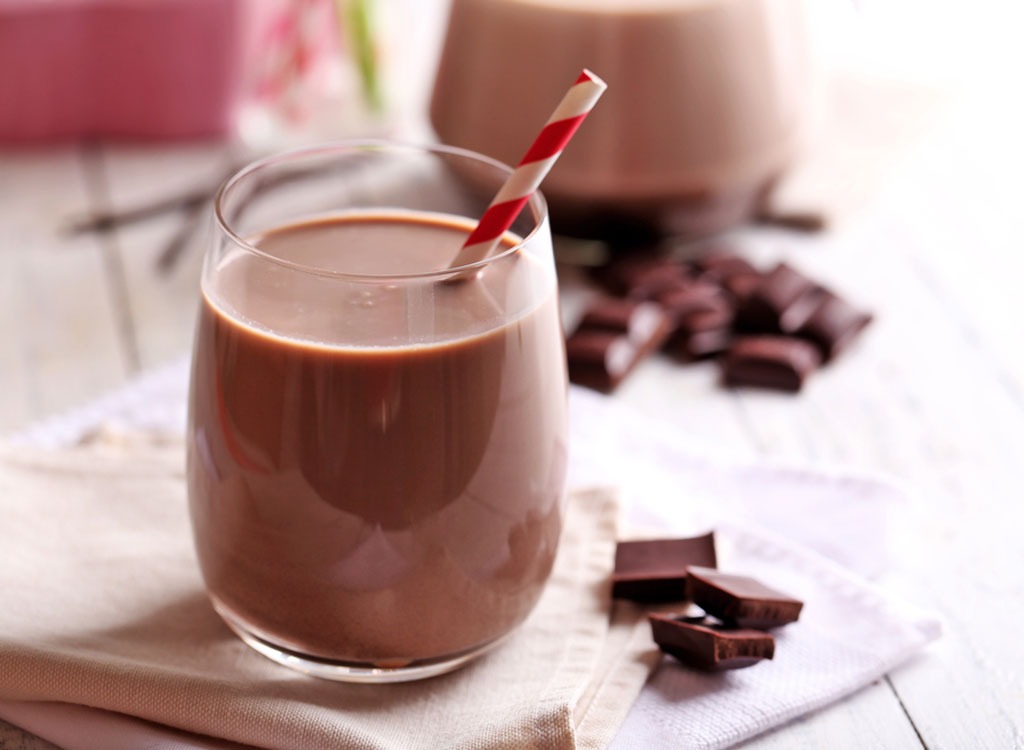

Kids were often served chocolate milk in an attempt to get them to drink what was perceived as a healthier beverage. In reality, there’s nothing healthy about this ultra-sweet drink.
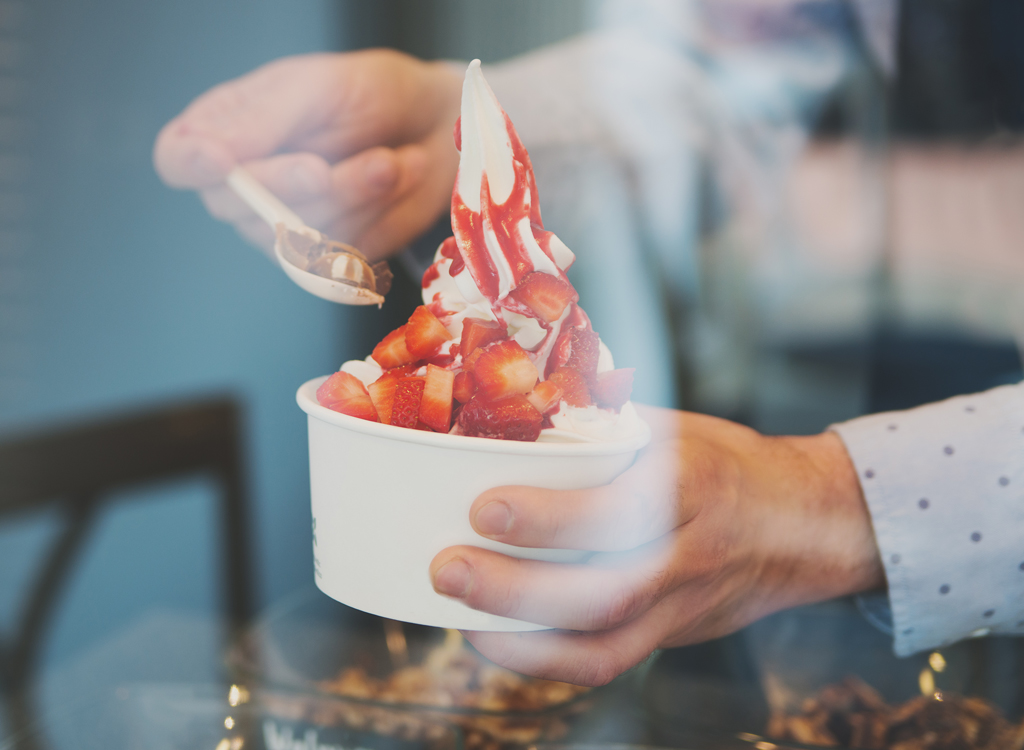

Often portrayed as a healthier alternative to ice cream, frozen yogurt is unhealthy for many of the same reasons as its unfrozen cousin. But most frozen yogurt brands don’t even boast the healthy probiotics of regular yogurt. And if you go for low-fat brands, you may be consuming even more sugar.
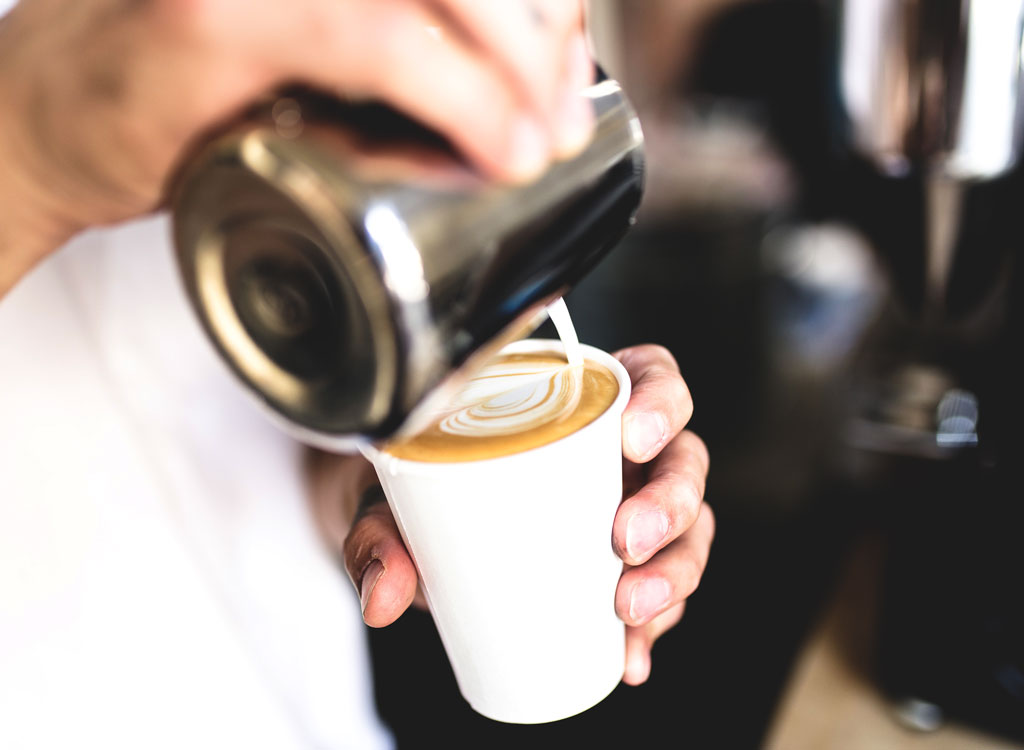

From lattes to cappuccinos to frappuccinos, most coffee beverages aside from plain black coffee are recipes for health issues. Research linking coffee consumption to reduced cancer risk is inconclusive at best, but a cup of black coffee (no sugar!) is far better than one of these milky, over-sweet beverages.
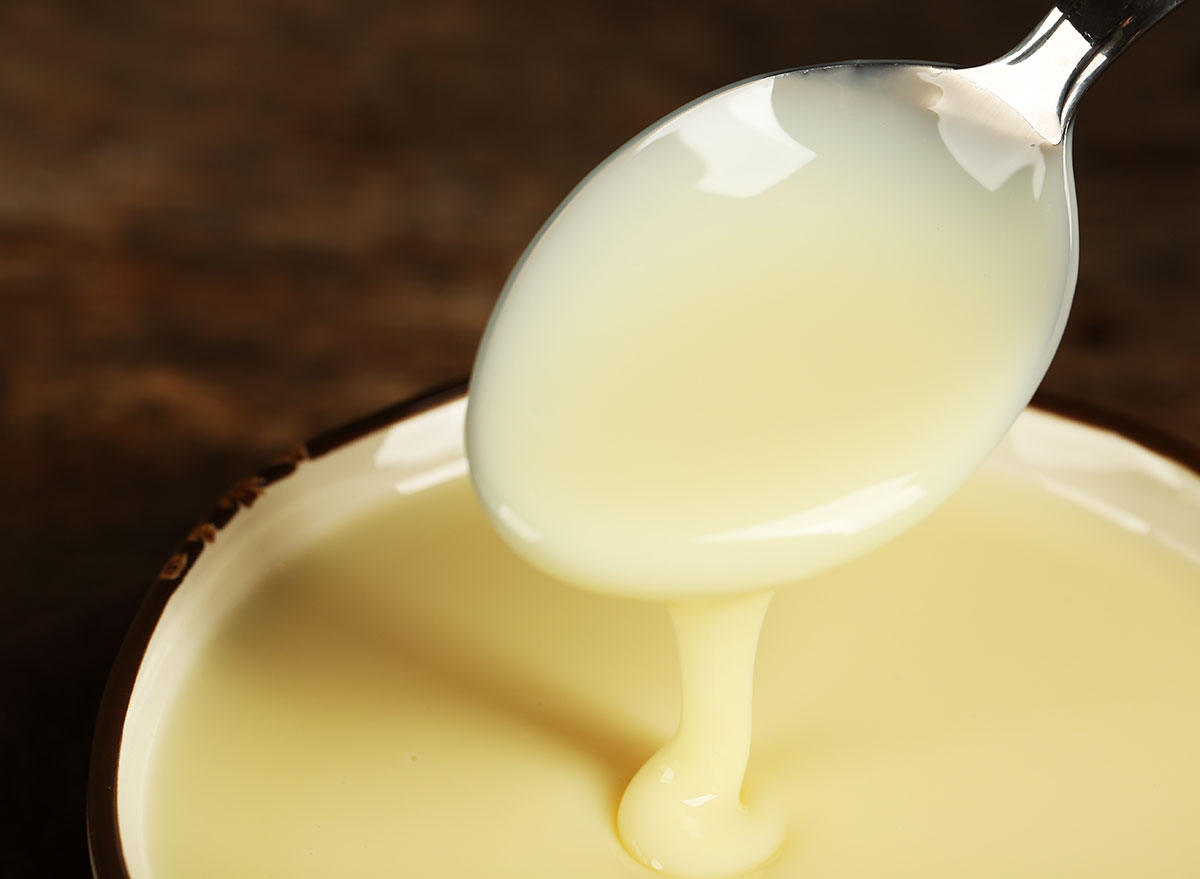

Canned sweetened condensed milk is a triple threat for cancer risk. Choose coconut milk for a similar creaminess without the BPA, sugar, and dairy.
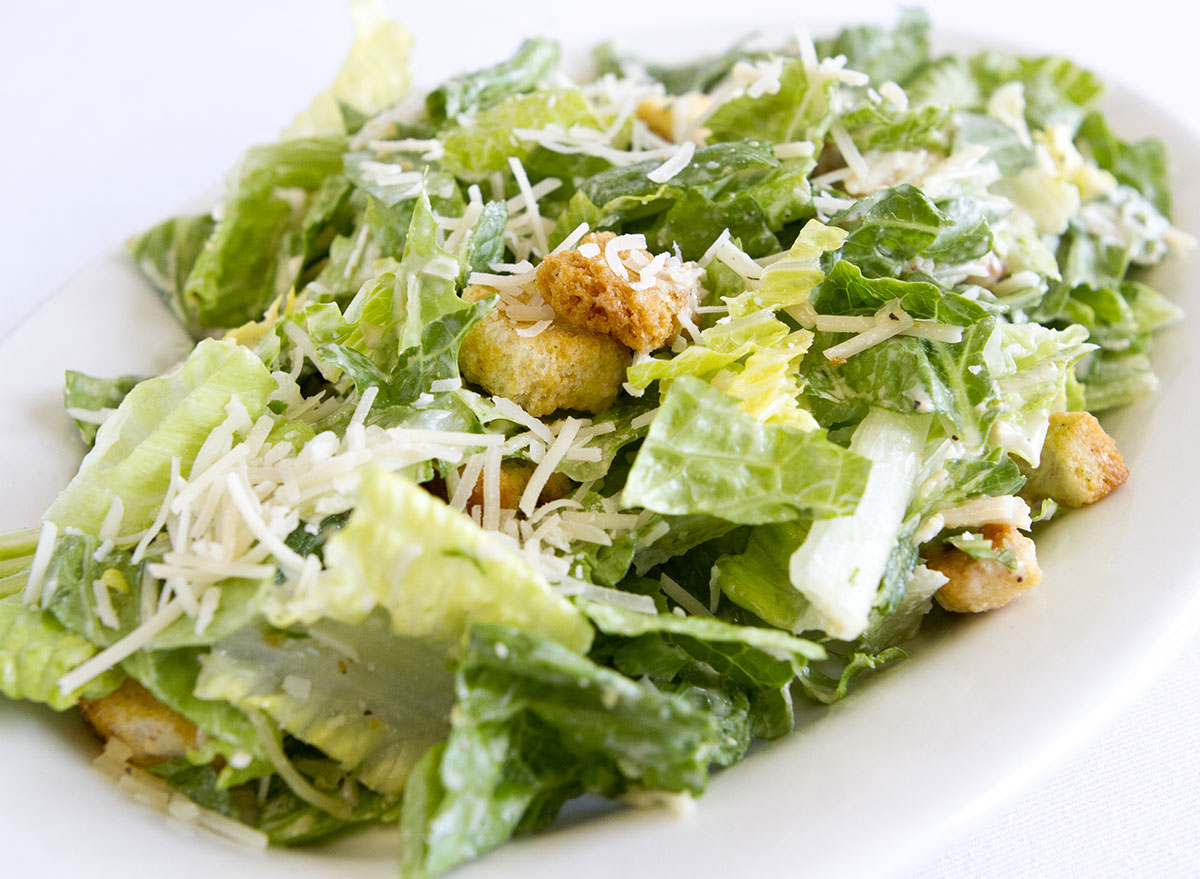

A salad could seem like a healthy choice, but in reality, looks can be deceiving. Not only is lettuce ranked 15th in the EWG’s list of most contaminated produce, but as you most likely already know, a lot of salads you can order are made with sweet, bottled dressings and served with fried croutons and gobs of cheese. Make your own from fresh, organic ingredients to ensure you’re controlling what’s on your plate.
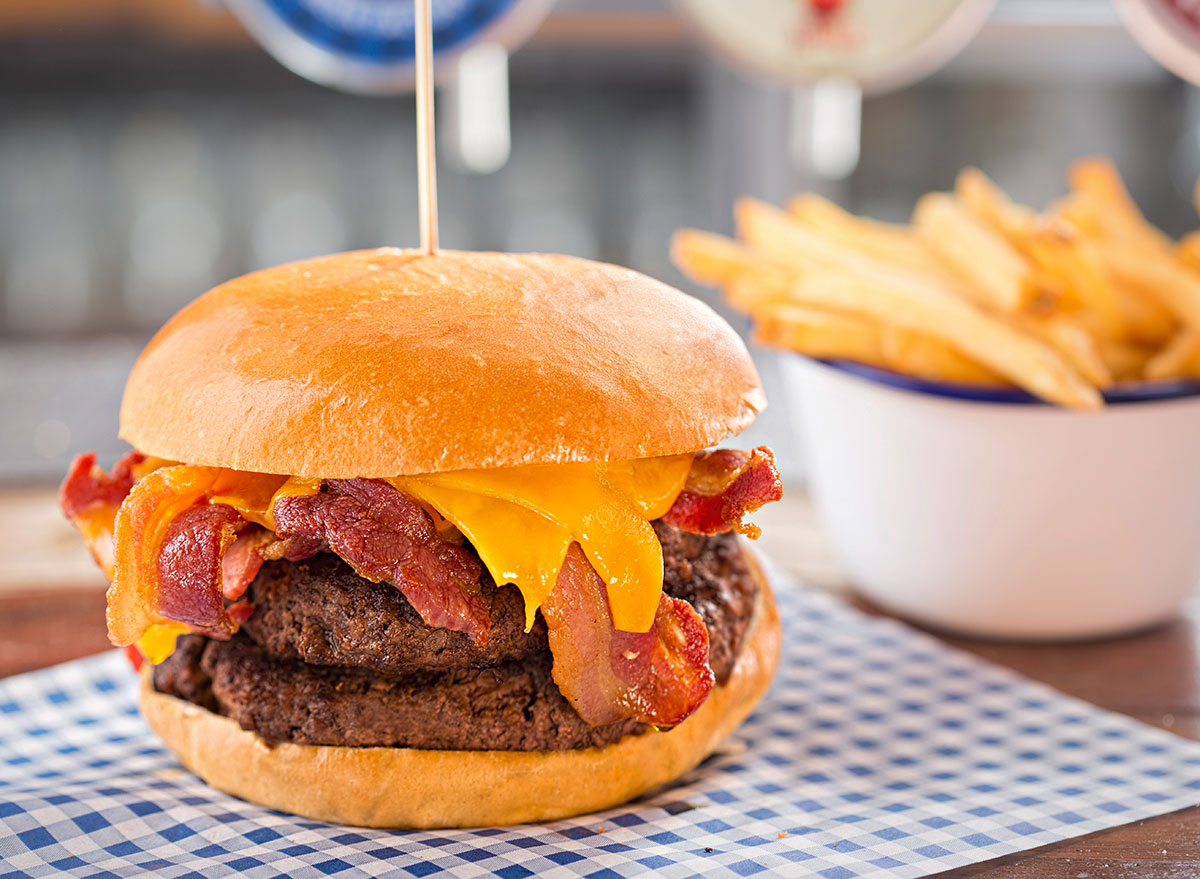

Cheeseburgers seem like a “what not to do” ad when it comes to preventing cancer. Grilled red meat, served on an overly processed bun, with a slice of processed cheese? Say “no thank you” to this one.
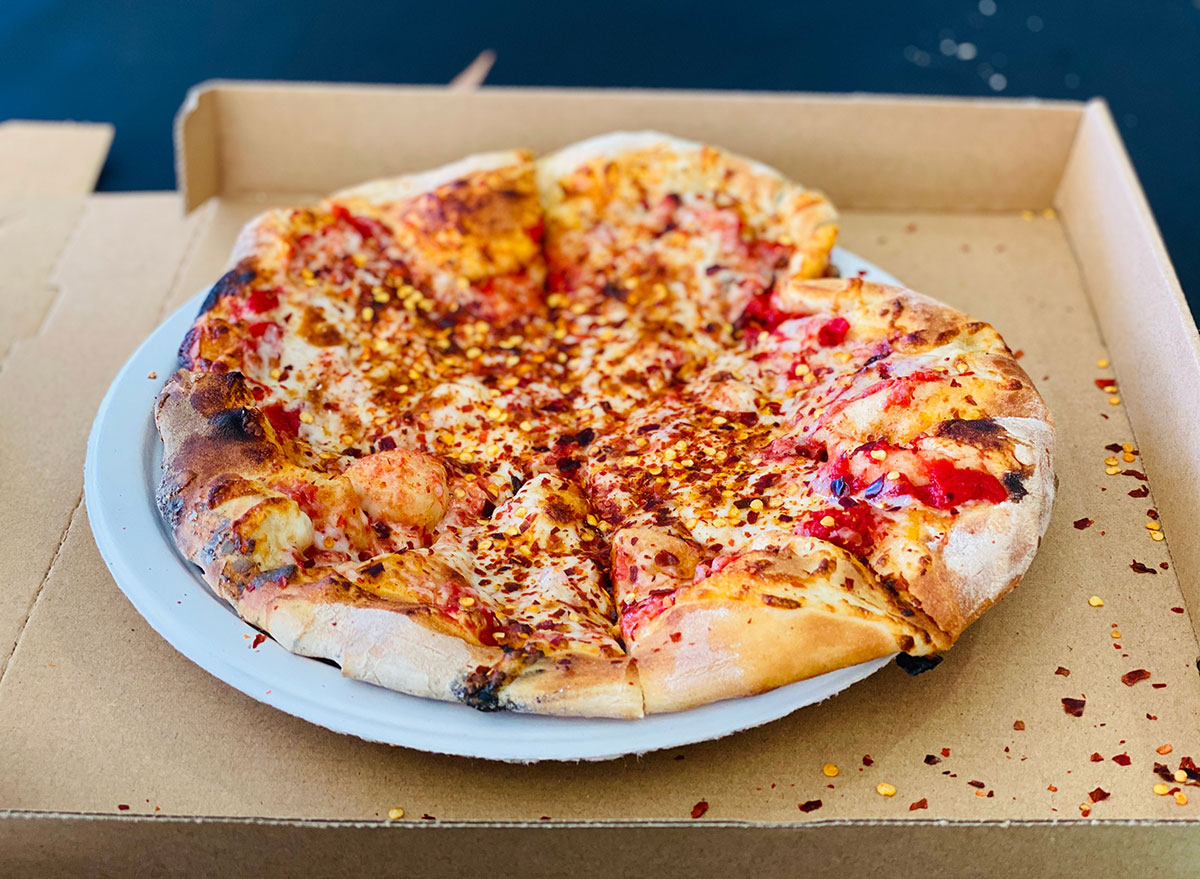

Pizza poses similar problems, especially if it’s cooked in a wood-fired oven. The blistered, cracker-thin crust might taste delicious, but carcinogenic compounds form when the pizza is cooked that hot for that long.
Ultimately, while some of these foods would be best removed from your plate for good, others are fine as long as they’re consumed in moderation.
“It is the quantity that makes the poison,” says Gallani. “We must not be afraid of food, but we must be aware of what we eat. If every day we eat red meat, salami, barbeque, or fries, in that case, we have to be worried about our health. But if we eat these foods rarely throughout a healthy diet there is nothing dangerous.”
So what should you eat more of in your diet instead? Any of these foods that lower your cancer risk!
Source:




